

What are Africa’s Big Five? Meet the continent’s most iconic wildlife
Once mostly targeted by hunters, these large species are “awe-inspiring” sights for safari-goers.
If you’ve gone on an African safari , chances are you’ve heard of the Big Five, the must-see list of iconic megafauna.
Lions , leopards, elephants , African buffalo , and rhinoceroses are “what people think of when they think of Africa and wildlife,” says Natalia Borrego , a research associate at the University of Minnesota Lion Center.
The term, coined in the late 1800s during Africa’s colonial period , refers to what trophy hunters considered the most challenging and dangerous animals to hunt on foot.
These animals are still hunted today , but a shift toward tourism has also made seeing the Big Five an “awe-inspiring” goal for any safari-goer, Borrego says.
That’s especially true because all of these species are decreasing in population—lions in particular are struggling, having lost 94 percent of their original habitat . Only about 20,000 of the big cats remain in the wild.
Here’s are some fascinating facts about the Big Five.
This is the most elusive, and also the smallest, of the five. “I call them ninja cats because they’re just sneaky and they’re harder to spot,” Borrego says.
Speaking of spots, most leopards are light-colored, with distinctive dark spots that are called rosettes. Black leopards, which appear to be almost solid in color because their spots are hard to distinguish, are commonly called black panthers .
The solitary big cats haul large kills, such as zebra or antelope, into a tree to eat alone, in peace.
There’s another reason for leopards to stay aloft: They don’t exactly get along with their fellow Big Fiver, the African lion. If a lion has a chance to kill a leopard, it will. (Related: “ A lioness killing a leopard floored these filmmakers .”)
African lion
Lions are the only social big cat, but don’t expect to see the king. There isn’t one.
These big cats are “not born into a rank,” Borrego says. “They are egalitarian, which means they don’t have a permanent social hierarchy.”
One male may be dominant over the others, but that can change at any time.
Lion society is also matrilineal, “so the females hold the territories,” and stay with the pride into which they’re born. (Related story: “ In real life, Simba’s mom would be running the pride .”)
African buffalo
These hefty, cow-like animals often congregate by the thousands in the Serengeti; forming large groups is one defense against predators.
Male and female buffalo both have horns, but the males’ curve upward and fuse together in the center, forming a solid bony plate called a boss. It’s a helpful defense—as is being more than three times heavier than their lion adversaries.
That’s why a lion that attacks a buffalo is taking a huge risk of dying. Buffalo can be aggressive, and frequently come into conflict with humans outside of protected areas.
African elephant
The biggest of the Big Five is the African savanna elephant, which can weigh up to seven tons. The African forest elephant, which is about three feet shorter and lives in the forests of the Congo Basin, was declared a separate species after genetic testing in 2010 showed big differences between the forest and savanna dwellers.
Savanna elephants are large enough to change the landscape , pulling up trees to make grasslands, dispersing seeds, and overall increasing biodiversity.
Long sought after by poachers, elephants have a fragmented range throughout central and southern Africa .
Rhinoceroses
There are two species—the black rhinoceros and the white rhinoceros—and five subspecies between them left in Africa. Those include the northern white rhino, the southern white rhino, the eastern black rhino, the southern central black rhino, and the southwestern black rhino.
All are huge, with a top weight of 5,000 pounds and horns that can grow up to five feet long.
Due largely to poaching for their horns , the western black rhino was declared extinct in 2011 . The last male northern white rhino died in 2018 , with only two females remaining—making that subspecies functionally extinct. ( Learn about the different types of extinction .)
About 20,000 southern white rhinos remain, mostly in southern Africa. Conservation efforts have helped increase the population of the smaller, critically endangered black rhino , found mainly in East and southern Africa.
Other Fives
Africa is incredibly rich in wildlife, which is why several other “fives” have popped up over the years, such as the Little Five —including the leopard tortoise and the elephant shrew—the Shy Five , and the Ugly Five , which, to say the least, is a bit subjective. ( Read why people find “ugly” animals cute .)
With over 2,000 bird species in Africa , can we also get a High Five?
FREE BONUS ISSUE
Related topics.
- AFRICAN LIONS
- WATER BUFFALO
- WILDLIFE CONSERVATION
You May Also Like

Are South Africa’s captive lions inbred?

Who buys lion bones? Inside South Africa’s skeleton trade

Why Poison Is a Growing Threat to Africa’s Wildlife

See our best wildlife photos from 2023

Does your favorite travel company promote harmful wildlife activities?
- Perpetual Planet
- Environment
- History & Culture
- Paid Content
History & Culture
- Photography
- Terms of Use
- Privacy Policy
- Your US State Privacy Rights
- Children's Online Privacy Policy
- Interest-Based Ads
- About Nielsen Measurement
- Do Not Sell or Share My Personal Information
- Nat Geo Home
- Attend a Live Event
- Book a Trip
- Inspire Your Kids
- Shop Nat Geo
- Visit the D.C. Museum
- Learn About Our Impact
- Support Our Mission
- Advertise With Us
- Customer Service
- Renew Subscription
- Manage Your Subscription
- Work at Nat Geo
- Sign Up for Our Newsletters
- Contribute to Protect the Planet
Copyright © 1996-2015 National Geographic Society Copyright © 2015-2024 National Geographic Partners, LLC. All rights reserved

The Big Five Animals
All about ‘the big five’ animals – african elephant, cape buffalo, leopard, lion, rhinoceros, the big five animals of africa are african elephant, cape buffalo, leopard, lion, and rhinoceros.
These five types of animals were named ‘the big five’ by big game hunters from African’s colonial era, as they were considered the most difficult and dangerous African beasts to hunt on foot. These days, of course, any shooting of Africa’s big five tends to be more about choosing the right lens ( photo safari anyone? )!
Jump to a section: African Elephant | Cape Buffalo | Leopard | Lion | Rhinoceros | Big five quotes | Best places to see the big five | Other wildlife ‘5s’
Read on below for a more in-depth look at each of the big 5 animals:
1. African Elephant
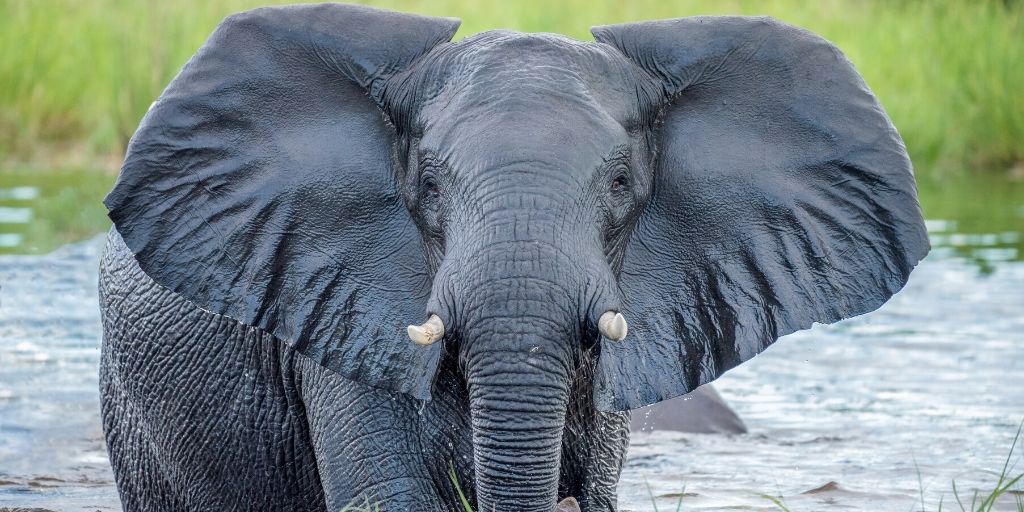
African elephants are the largest of the big five animals
The African elephant ( Loxodonta africana ) is the largest and heaviest land animal in the world, weighing up to 6 tonnes, and eating massive amounts of food each day.
Their distinguishing features include the dexterous trunk , large ears that cool the body when flapped, and elongated incisors in the form of tusks. There are actually two species of African elephant – the African bush elephant and the smaller African forest elephant. Both are herbivores that live in large groups, whilst the African bush elephant is the larger of the two species, and typically the species referred to as a member of the big five animals.
A bull elephant can be dangerous, as can herds or mothers with young elephants. Keep your distance from them, and if in a vehicle ensure that you have the means to drive away forwards – elephants can run faster than a car can reverse. An elephant flapping its ears, kicking up dust, and/or trumpeting is probably about to charge.
Group name: Herd
Size: Up to 3.3 meters tall, weighing 6,000kg.
Speed: Up to 40 km per hour.
Diet: Elephants are vegetarians, eating up to 160kg per day, made up of savannah grasses, bushes, small plants, fruit, twigs, tree bark, and roots. Read more about what elephants eat .
Range & Habitat: African Elephants are found across sub-Saharan Africa – from Mali in the north, through the central and west African forests, down to South Africa. They are adaptable animals, capable of surviving in many habitats, from lush wetlands to arid African deserts . Despite this, both species of African elephants are considered endangered species , and on the list of Africa’s most endangered animals .
Best places to see African elephants: Addo Elephant Park, South Africa, Chobe National Park , Botswana , Etosha National Park, Namibia , Hwange National Park, Zimbabwe , South Luangwa National Park, Zambia .
Read more about African elephants .
2. Cape Buffalo

A grumpy African buffalo
Weighing in at not too far short of a ton, the African buffalo ( Syncerus caffer ) has a reputation for being bad-tempered and dangerous. Whilst a solitary African buffalo is one of the most unpredictable safari animals (and dangerous, hence their inclusion in the term big five animals), they are usually a docile beast when in a herd… aside from their tendency to stampede en masse when alarmed.
Herds have clearly defined home ranges, the size of which is determined by the amount of food and water available.
Size: Up to 1.8 meters tall, and 800kg in weight.
Speed: They can run at speeds of up 57 kilometers per hour.
Diet: Cape buffalos are strictly herbivores and eat a wide variety of grasses, leaves, and other plants.
Habitat & Rage: Cape buffalo thrive in all sub-Saharan grasslands with access to water – from dry savanna to lowland floodplains.
Best places to see African Buffalo: Chobe National Park , Botswana , Katavi National Park, Tanzania , Kruger National Park, South Africa , Lower Zambezi National Park, Zambia.
Learn more about Cape Buffalo.
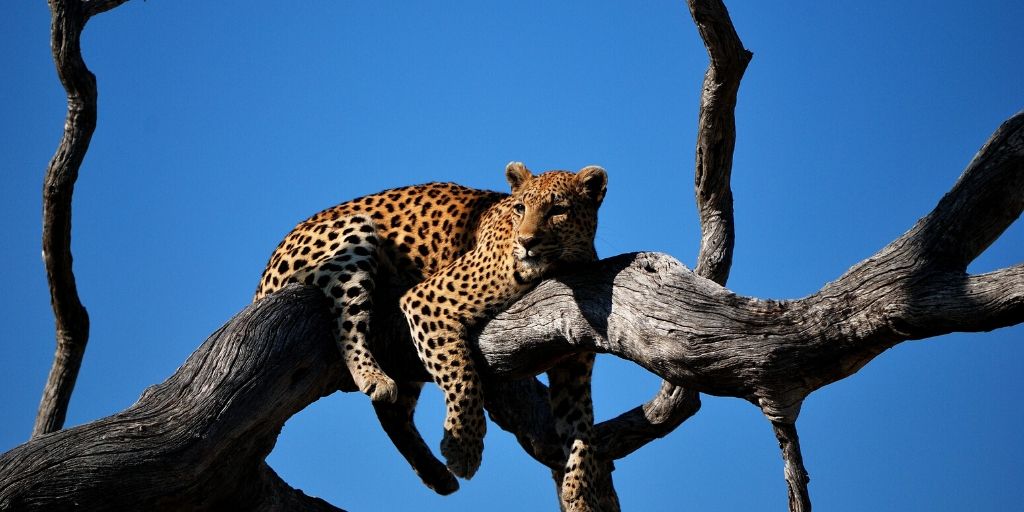
A stunning African leopard lounges in a tree in Kruger National Park, South Africa
Slightly smaller than their lion cousins, African leopards ( Panthera pardus ) are less rare than you might think, but rely on their animal camouflage and being active at night to stay hidden. Leopards are solitary, independent creatures, and rarely seen together except during mating, or a mother with cubs. As such they are totally self-reliant, and expert hunters – sometimes killing prey up to twice their size. During the daytime they often lounge around in trees and come to the ground after dark to hunt, taking their prey up into a tree to eat at their leisure.
Group name: Leap
Size: 1 meter high, weighing up to 100 kg.
Speed: 56 kilometers per hour.
Diet: Leopards are opportunistic carnivores and hunt a wide range of prey such as jackals , antelopes, gazelles , African monkeys , duiker, eland , impala , wildebeest , and more.
Range & Habitat: African leopards live in more places than any other types of big cat in Africa, and are comfortable in almost any habitat, including deserts, rainforests, woodlands, grassland savannas, mountain, scrub, and swamps. Leopards are one of the few big game species found outside national parks.
Best places to see Leopard: Londolozi Game Reserve, South Africa , Moremi Game Reserve , Botswana , Samburu National Reserve, Kenya, South Luangwa National Park, Zambia .
Learn more about leopards.

A male African lion and lioness relaxing
The African lion is the largest and most sociable of Africa’s cats , and one of Africa’s most dangerous animals . At up to 225kg, the lion ( Panthera leo ) really is the king of the savanna (it’s not a jungle animal !). Living in prides of up to 40 lions, it’s the lionesses who do all the hunting, usually sharing with the males of a pride. Lions are very territorial, and the females generally spend most of their lives within their home ranges.
If you encounter an African lion on foot don’t turn and run (easier said than done), as a running target that looks like prey will probably be viewed as such. Instead, try to make yourself look big, and back away gradually.
Group name: Pride
Size: 1.2 meters, weighing up to 225kg.
Speed: At a maximum speed of 80 kilometers per hour, the lion is the second fastest land animal in Africa .
Diet: African lions are apex predators and generally hunt the larger animals in their surroundings – buffalo, rhino, zebra, giraffe, and antelopes. Learn more about what lions eat .
Range & Habitat: Lions tend to prefer grassland, savanna, dense scrub, and open woodland. They are found across sub-Saharan African national parks, and also in a small part of north-east India.
Best places to see Lion: Kgalagadi Transfrontier Park, South Africa, Kruger National Park, South Africa , Maasai Mara National Reserve, Kenya , Ngorongoro Conservation Area, Tanzania , Okavango Delta, Botswana .
Read more about lions.
5. Rhinocerous

A white rhino walking in the bush
Once widespread through sub-Saharan Africa, the rhino has been hunted to the brink of extinction, and is probably the hardest of the big five to spot in the wild.
There are two species of rhinoceros in Africa – the critically endangered black rhino ( Diceros bicornis ) and the white rhino ( Ceratotherium simum ). Whilst white rhinos have made a comeback through conservation efforts across the continent, black rhinos are still very much one of Africa’s endangered animals . The fundamental differences between the white rhino and black rhino are not color, but rather size, temperament, food preference, and mouth shape. White rhinos have a flat, wide mouth, and their name comes from a mispronunciation of the Afrikaans word wide – “wijd”.
Both black rhinos and white rhinos tend to be wary of humans, but occasionally charge vehicles that get too close. If you’re on foot, then their bad eyesight should work in your favour – if they do charge you the apparent life-saving technique involves letting them get as close as possible, then stepping aside at the last second.
Group name: Crash
Size: 1.9 meters high and weighing up to 2,300kg
Speed: 50 kilometers per hour
Diet: All species of rhino are herbivores, grazing on a wide variety of fruits, stems, twigs, grasses, and leaves.
Range & Habitat: White rhinos are found throughout Asia and sub-Saharan Africa in habitats ranging from dense rainforests and swamps to grassy plains.
Best places to see Rhinoceros: Tends to be in Southern Africa – Etosha National Park , Namibia , Hluhluwe–Imfolozi Park, South Africa , Kruger National Park , South Africa, Lewa Wildlife Conservancy, Kenya , Mkomazi National Park, Tanzania.
Learn more about rhinos.
Best places to see all of the big five animals
Whilst we’ve highlighted national parks above to see each of the members of the big five animals, the ultimate thrill is to see all five animals on one safari. It’s not easy – not least because even if all five animals are present in an area they can still be very difficult to see! However, it is possible, as there are a number of hotspots in southern and east Africa that are rich in variety and can support an extremely dense wildlife population. Our top picks to see all of the big five together are:
- Chobe National Park, Botswana
- Etosha National Park in Namibia
- Kruger National Park in South Africa
- Londolozi Game Reserve in South Africa
- Maasai Mara National Reserve, Kenya
- Moremi Game Reserve, Botswana
- Ngorongoro Conservation Area, Tanzania
- South Luangwa National Park in Zambia
5 great quotes about each of the big five animals
Elephant quotes.

“They say an elephant never forgets. What they don’t tell you is, you never forget an elephant.”
Bill Murray
“Nature’s great masterpiece, an elephant; the only harmless great thing.”
“If anyone wants to know what elephants are like, they are like people only more so.”
Pierre Corneille
“He who mounts a wild elephant goes where the elephant goes.”
Randolph Bourne
Lion quotes

“Do not try to fight a lion if you are not one yourself.”
African proverb
“You know you are truly alive when you’re living among lions.”
Isak Dinesen
“Until the lion tells his side of the story, the tale of the hunt will always glorify the hunter.”
Zimbabwean proverb
“Lions make leopards tame.”
William Shakespeare
“In the jungle, the mighty jungle The lion sleeps tonight.”
Solomon Lina, “Mbube”
Leopard quotes

“At the top of the mountain we are all snow leopards. “
Hunter S. Thompson
“The leopard does not change his spots.”
King James Bible
“This world without a leopard…I mean, who would want to be here?! “
Diana Vreeland
“Leopard is an animal design, and my designs come from nature. “
Roberto Cavalli
“A leopard feels at home with leopard. “
George Eliot
Buffalo quotes
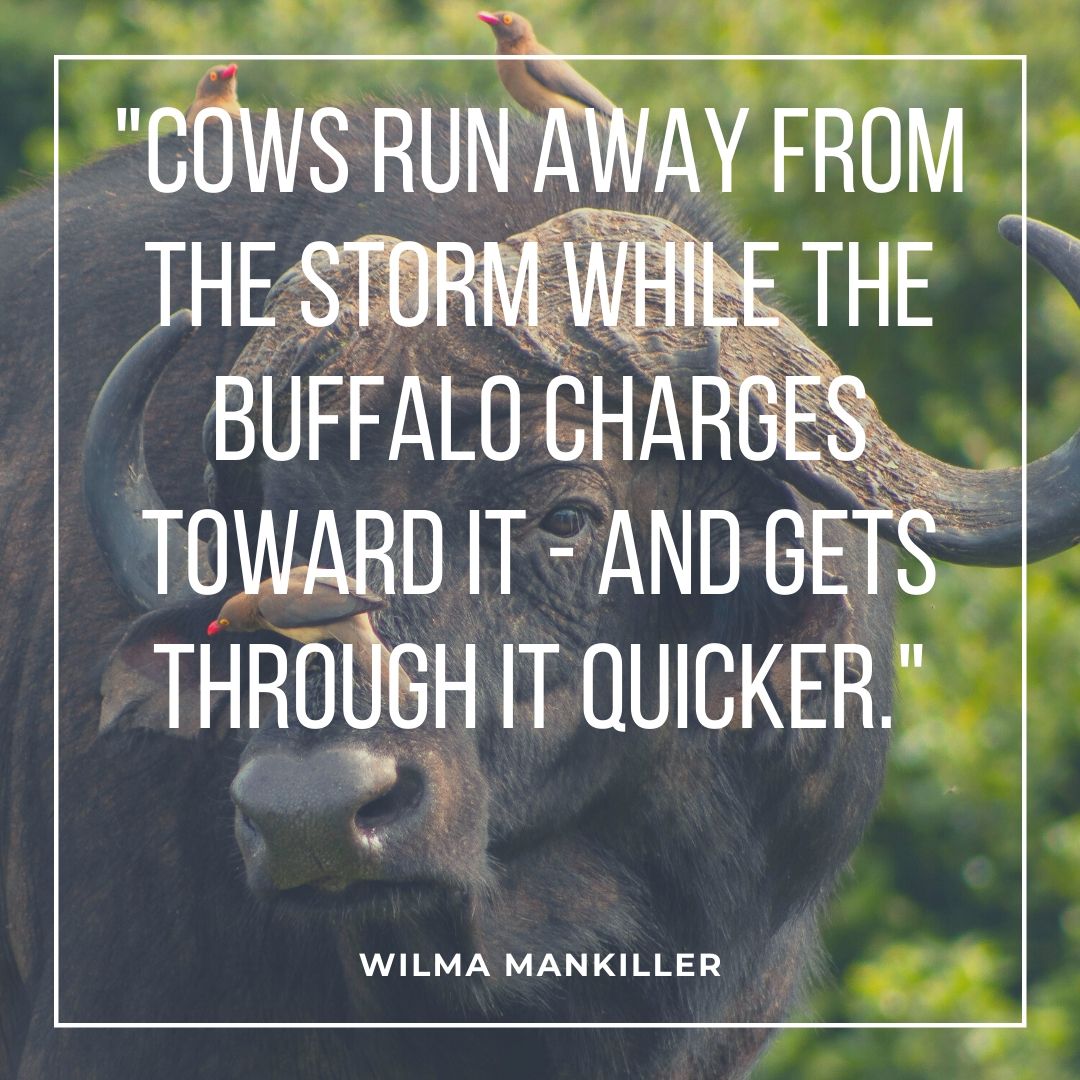
Cows run away from the storm while the buffalo charges toward it – and gets through it quicker. Whenever I’m confronted with a tough challenge, I do not prolong the torment, I become the buffalo.
Wilma Mankiller
The buffalo is a surprisingly stupid animal.
Ellsworth Huntington
So is the savage buffalo, especially delighting in dark places, where he can wallow in the mud and slake his thirst without much trouble
John Hanning Speke
At the rate science proceeds, rockets and missiles will one day seem like buffalo – slow, endangered grazers in the black pasture of outer space.
Bernard Cooper
The coat of the buffalo never pinches under the arm, never puckers at the shoulders; it is always the same, yet never old fashioned nor out of date.
Theodore Parker
Rhino quotes
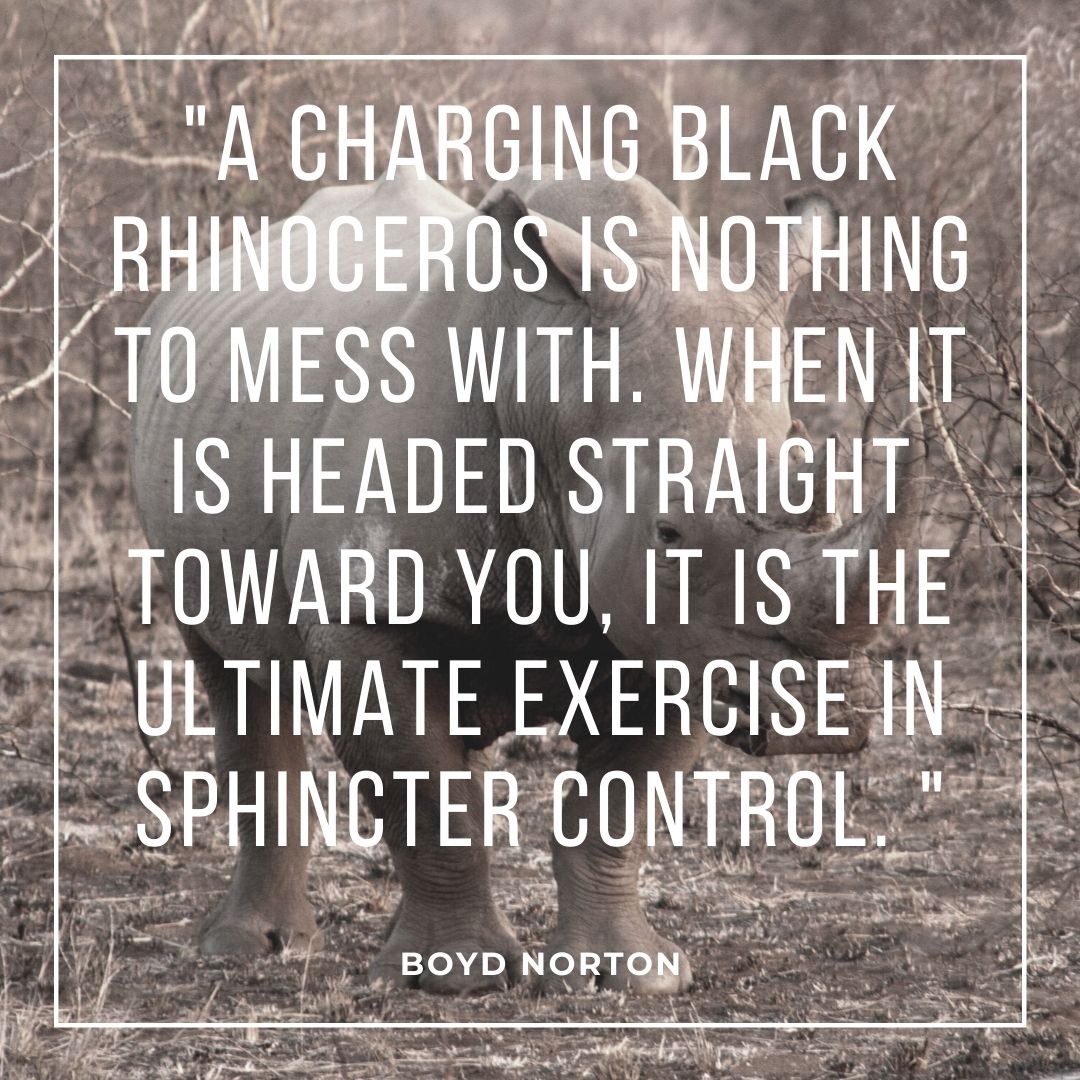
A charging black rhinoceros is nothing to mess with. When it is headed straight toward you, it is the ultimate exercise in sphincter control.
Boyd Norton
It is one thing to be amazed at gorgon or a griffin, creatures which do not exist; but it is quite another and much higher thing to be amazed at a rhinoceros or a giraffe, creatures which do exist and look as if they don’t.
G.K.Chesterton
The only way to save a rhinoceros is to save the environment in which it lives, because there’s a mutual dependency between it and millions of other species of both animals and plants.
David Attenborough
The rhinoceros stood about five hundred yards away, not a twentieth-century animal at all, but an odd, grim straggler from the Stone Age.
Winston Churchill
A rhinoceros is as ugly as a human being, and it too is going to die, but at least it never thinks that it is beautiful.
Peter S. Beagle
Other wildlife ‘fives’
Have you seen the big five animals and are are looking for a new wildlife challenge – other animals to hunt for your photo safari? For safari aficionados up for ticking all the ‘I’ve seen’ boxes, have you heard about the other groups of 5 animals?
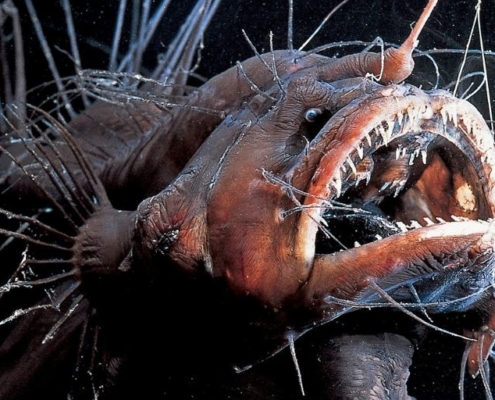
World’s Ugliest Fish
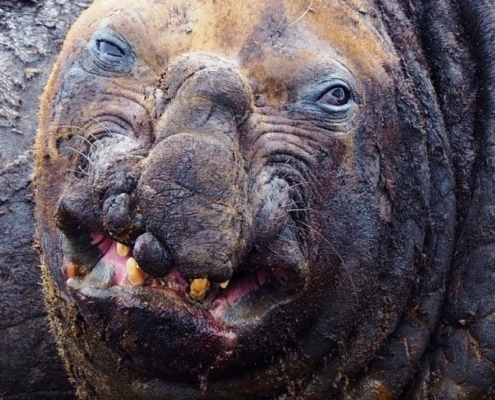
Ugly Animals
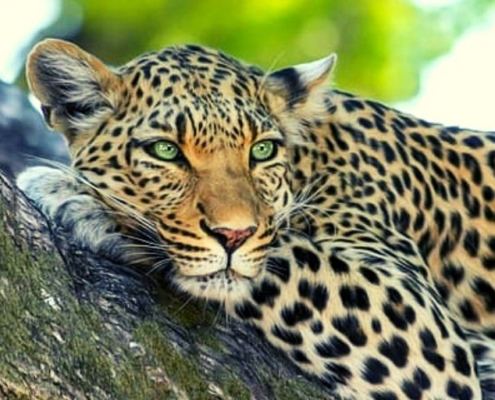
Best Places For The Big 5 In South Africa
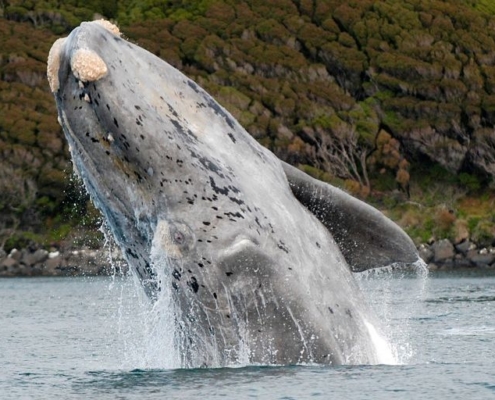
The Big Seven Animals – What They Are & Where To See Them
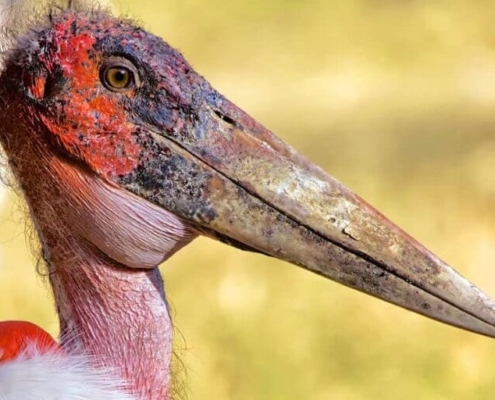
What Are ‘The Ugly Five’ Animals?
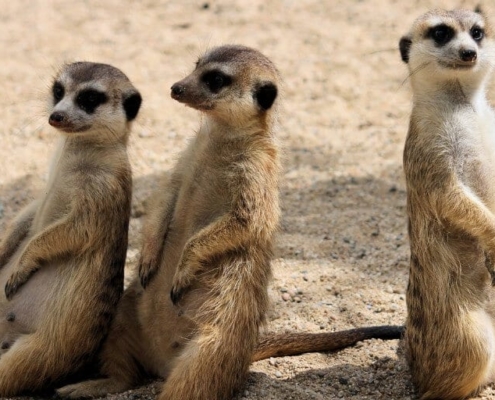
What Are ‘The Shy Five’ Animals?
Discover more of our wildlife posts…, ape vs monkey: what are the differences, the largest eagles in the world, toad vs frog: how to tell the difference, 17 iconic flightless birds, collective nouns for birds, animals that live the longest, when, where & how to see the great wildebeest migration, why do flamingos stand on one leg, wombat poop… why is it cube-shaped.
I like the big five very much, but alittle bit surprised. The hippo i big than lion and leopard why is it not on the list. We heard that hippos are one of the animals which kills more people than elephants and rihnos
Hippos mainly live in the water, the Big Five live on land.
Hi Martin, the name is not everything! Hippos weren’t in the group of animals hunted for their skin or heads, so didn’t make the big five list ;)
The Big five are the animals that i love so much but they left the TIGER and its deserves to be on of them… if one could make them pets i’d long had one.
Unfortunately tigers are not native to Africa.
The big five is found all over Kenya and other parts of Africa.
Big five are found in Africa most distinctive in Tanzania, am proud of it.
My best animals are the big five
In my opinion the “Big Five” and all other wild animals wherever they are in the world should not be hunted down by big game hunters or poachers and the cowards who carry out these atrocities should themselves be hunted down and prosecuted to the fullest by the governments of those countries in which those activities occur.
Absolutely agree Eric – big game hunting is not something I can say I’m a fan of…
very useful to my resarch…
Glad to hear it Ryan ;)
Top countries for safaris
- Botswana safaris
- Kenya safaris
- Namibia safaris
- South Africa safaris
- Tanzania safaris
- Uganda safaris
Safari basics
- Safari animals
- How to find the right safari company
- When to go on safari
- What to take on safari
- Safari clothing – what to wear
- Safari rules & etiquette
- Wildlife spotting tips
Most read articles
- All about the ‘big five’ animals
- Collective nouns for animals
- Safari movies to watch before you go
- The world’s fastest land animals
- Apex predators
- 10 Fascinating African tribes
- The biggest animals in the world
- 17 Epic hybrid animals
- The world’s ugliest animals
- Why are flamingos pink?
Africa’s best game reserves
- Chobe National Park, Botswana
- Etosha National Park, Namibia
- Kruger National Park, South Africa
- Masai Mara National Reserve, Kenya
- Okavango Delta, Botswana
- Serengeti National Park, Tanzania

Session expired
Please log in again. The login page will open in a new tab. After logging in you can close it and return to this page.
An Introduction to Africa's Big Five Safari Animals
:max_bytes(150000):strip_icc():format(webp)/anoukmarrakech-56a373305f9b58b7d0d20299.jpg)
TripSavvy / Vin Ganapathy
If you're planning an African safari , you'll know that the term 'Big Five' is one of the most commonly used marketing slogans in the safari industry. Game reserves that host the Big Five will usually use this fact as their most significant selling point—but what does it mean? In the game reserves and national parks of Southern Africa , the Big Five represents safari royalty: the African lion, the African leopard, the African elephant, the Cape buffalo, and the rhino (either white or black).
The phrase was initially coined by early game hunters who recognized that these species were the most challenging and most dangerous animals to hunt on foot. This made them the biggest prizes, hence, the Big Five. Today, the phrase has come to represent the most sought-after safari sightings—although, in reality, this is a matter of personal preference. Some of the most endangered, beautiful, or charismatic African animals don't feature on the Big Five list, including the cheetah , the African wild dog, the giraffe, and the hippo.
African Elephant
The African elephant ( Loxodonta africana ) is the world's largest and heaviest land animal, with the biggest individual on record weighing in at over 10 tons/22,000 pounds. They are found in 37 sub-Saharan countries and can survive in a wide range of different habitats, from lush wetlands to arid deserts.
African elephants are supremely well adapted to their environment, from their inch-thick skin (which protects them from the sharp thorns of the bush) to their enormous ears (which help to disperse heat and regulate body temperature). They can consume up to 50 gallons of water and 375 pounds of vegetation every day.
Elephants are very social animals. They live in matriarch-led groups that often number more than 100 individuals and communicate using a variety of low-frequency rumbles that can travel for many miles. Female calves usually stay with the herd throughout their life, while young males leave to form bachelor groups and eventually create herds of their own.
In the 1970s and '80s, the global demand for ivory led to a dramatic decrease in elephant numbers. A ban on all ivory trade has helped stabilize the population to around 600,000 in the last decade. However, poaching is still a major issue, especially in parts of Africa where there is political instability. The African elephant is listed as Vulnerable on the IUCN Red List .
Where to See Elephants: Chobe National Park , Botswana; Addo Elephant National Park , South Africa; Hwange National Park , Zimbabwe; South Luangwa National Park, Zambia.
African Lion
The African lion ( Panthera leo ) is the undisputed king of the sub-Saharan savannah and is the world's second-largest cat after the tiger. Although lions sometimes hunt during the day, they are typically more active at night which is why most daytime safari sightings are of cats sleeping in the shade. Lions can sleep for up to 20 hours a day.
Unlike other cats, lions are very social animals. They live in prides, usually consisting of one (or sometimes two) males, several females, and their cubs. Lionesses typically do the hard graft when hunting, often working together to bring down larger prey. They are ambush hunters, using their tawny coloring as effective camouflage.
In the wild, lions can live to around 14 years, although most prides experience a high rate of cub mortality, while males often die while fighting to protect their territory. Female lions can synchronize the birth of their cubs to help each other raise them. Cubs are born with rosette markings that fade over time.
Lions have few natural predators, although buffalo will often trample cubs. Predictably, man is the species' biggest threat. Traditional hunting customs , big game hunters, and large-scale habitat loss have contributed to declining lion populations in Africa. The lion is also classified as Vulnerable on the IUCN Red List.
Where to See Lion: Kgalagadi Transfrontier Park, South Africa; Okavango Delta , Botswana; Maasai Mara National Reserve , Kenya, Ngorongoro Conservation Area, Tanzania.
African Leopard
The African leopard ( Panthera pardus ) is the most elusive of the Big Five animals. Naturally shy and exclusively nocturnal, leopards spend the daylight hours hidden from view. They are excellent climbers, using trees to scan for prey and store fresh kills away from scavengers like lions and hyenas. If you're looking for a leopard, remember to look up.
Leopards are superbly camouflaged with a series of black spots or rosettes. They have large territories and seldom stay in the same area for more than a few days. Males range more widely than females and mark their presence by urinating and leaving claw marks. They are powerful and can take down prey much larger than themselves.
Their hunting prowess relies on their ability to run at speeds of over 35 miles per hour. They can also jump over 10 feet into the air and are excellent swimmers. Leopards are distributed throughout sub-Saharan Africa and are one of the few big game species still found outside national parks.
White spots on the tip of their tails and the back of their ears make mothers visible to their cubs even in the long grass. As with the other Big Five species, leopards are threatened by humans. Encroaching farmlands have reduced their habitat, while farmers often shoot them to stop them from killing their livestock. They are listed as Vulnerable on the IUCN Red List.
Where to See Leopard: Londolozi Game Reserve, South Africa; Moremi Game Reserve, Botswana; South Luangwa National Park , Zambia; Samburu National Reserve, Kenya.
Cape Buffalo
Cape buffalo ( Syncerus caffer ) are found in water-rich game reserves and national parks throughout sub-Saharan Africa. There are four sub-species of Cape buffalo, the largest of which is the one most commonly seen in East and Southern Africa.
Cape buffalo are formidable creatures and have earned themselves a reputation as one of the most dangerous animals in Africa. They are often bad-tempered, especially when threatened, and are equipped with a fused set of deadly curved horns. Male buffalo can weigh as much as 2,000 pounds.
Despite their fierce reputation, buffalo are relatively peaceable with one another, sometimes congregating on the open grasslands in herds of over a thousand individuals. They are protective of their weaker members, often forming a defensive circle around sick or young animals when under attack from prowling lions.
Cape buffalo need to drink every day and are often found close to water. They eat tall, coarse grass and bushes, and as such cannot live in the desert. Cape buffalo continue to be one of the most sought-after trophy animals for big game hunters. They are exceptionally susceptible to domestic cattle diseases like rinderpest and bovine tuberculosis.
Where to see Cape Buffalo: Kruger National Park, South Africa; Chobe National Park, Botswana; Katavi National Park , Tanzania; Lower Zambezi National Park, Zambia.
White and Black Rhino
There are two rhino species in Africa: the black rhino ( Diceros bicornis ) and the white rhino ( Ceratotherium simum ). Both are at risk of extinction due to the poaching epidemic caused by the demand for rhino horns in Asian cultures. It is estimated that there are around 5,000 black rhinos and 20,000 white rhinos left in the wild.
Three subspecies of black rhino have been declared extinct, while the northern white rhino is now extinct in the wild. Conservationists are working tirelessly to protect the remaining sub-species, but their futures are far from secure. The black rhino is listed as Critically Endangered on the IUCN Red List.
Despite their names, there is no difference in color between the black and the white rhino. The easiest way to tell the species apart is to look at their lips—the black rhino's are pointed and prehensile, while the white rhino's are flat and wide. The Dutch word for "wide" is "wijd," and it is a mispronunciation of this word that gives the white rhino its name.
Black rhinos are usually solitary and have a reputation for being bad-tempered, while white rhinos often live in pairs. Black rhinos prefer desert and scrubland areas and are herbivorous browsers, while white rhinos graze on open savannah areas. It is thought that rhinos have roamed the African plains for 50 million years.
Where to See Rhino: Etosha National Park , Namibia; Hluhluwe–Imfolozi Park, South Africa; Lewa Wildlife Conservancy , Kenya; Mkomazi National Park, Tanzania
15 Animals to See on an African Safari
The Top 5 Places to See Lions in Africa
Fun Facts About African Animals: The Cheetah
Akagera National Park, Rwanda: The Complete Guide
Top 10 Unmissable African Safari Destinations
Forgotten Felines: The Seven Small Cats of Africa
Serengeti National Park, Tanzania: The Complete Guide
The Top 12 National Parks to Visit in Africa
The Best Places to Go in Southern Africa
Hluhluwe-Imfolozi Park, South Africa: The Complete Guide
Top 5 Self-Drive Safari Destinations in Southern Africa
10 of the Best Private Game Reserves in South Africa
10 of the Best Places to Visit in Botswana
South Luangwa National Park, Zambia: The Complete Guide
12 Nocturnal Animals to Look For on an African Safari
Kruger National Park: The Complete Guide

What are the Big 5 of Africa?
Why are they called the big five animals, the big five animals in pictures, big five animal facts, where to find the big five in africa, what are the best big five safari destinations, what are the best places to see all of the big 5, when is the best time to see the big five in africa, the african big five and wildlife conservation status, other popular five animal combinations, learn about the big 5 on safari in africa, guide to the big 5 animals of africa, receive photography and travel tips.

What are the Big 5 animals of Africa and where to find them?
The Big Five animals of Africa , in short, 'The Big 5' include the African elephant , rhinoceros , lion , leopard , and Cape buffalo . These five big game animal species are found on the African continent in the Southern and Eastern parts of Africa. As the name suggests, they are not the heaviest or the 5 biggest safari animals.
If it was about the size or weight of the African animal , a gorilla or hippo could also easily fit in. A hippo is for example three times heavier than a Cape buffalo and a male gorilla and male lion can both weigh up to 225kg.
The Big Five game refers to the 5 African animals that big game hunters in the late 1800s, during Africa's colonial period, considered the most dangerous and difficult wild animals to track and hunt on foot. Hunting these African game animals got them the biggest prices and trophies. Dangerous, because of their behavior when they feel threatened or get injured. Sadly, this wildlife is still hunted today but luckily there are also a lot of conservation initiatives to protect these threatened species that are decreasing in population and struggling because of habitat loss.
Nowadays, the term 'Big Five' is more a commercial term used by safari companies to sell their 'African Big 5 Safari trips' and to describe the Top 5 safari animals to see on a game drive . This made them also the most famous large African animals to look for on a safari trip to Africa. Ticking off the Big 5 is therefore on many travelers’ bucket lists. However, there's much more wildlife worth seeing roam freely in their natural habitat, like the cheetah, a tall elegant giraffe, a spotted Hyena, or a pack of African wild dogs. Even smaller creatures, like Dung Beetles or all the colorful birdlife, play an important role in the ecosystems.
So, with this article, I also want to raise awareness about the fact that there's more to Africa than spotting the Big Five , which is a hunting term after all.
That is also the main reason for setting up the New Big Five project, an international initiative to create a new Big Five of wildlife: the Big Five of wildlife photography where it's about shooting with a camera instead of hunting with a gun. The aim of this project is to raise awareness about the crisis facing the world's wildlife from threats, including habitat loss, human-wildlife conflict, poaching, illegal wildlife trade, and climate change.
The Big 5 safari animals of Africa in one black and white photo collage.
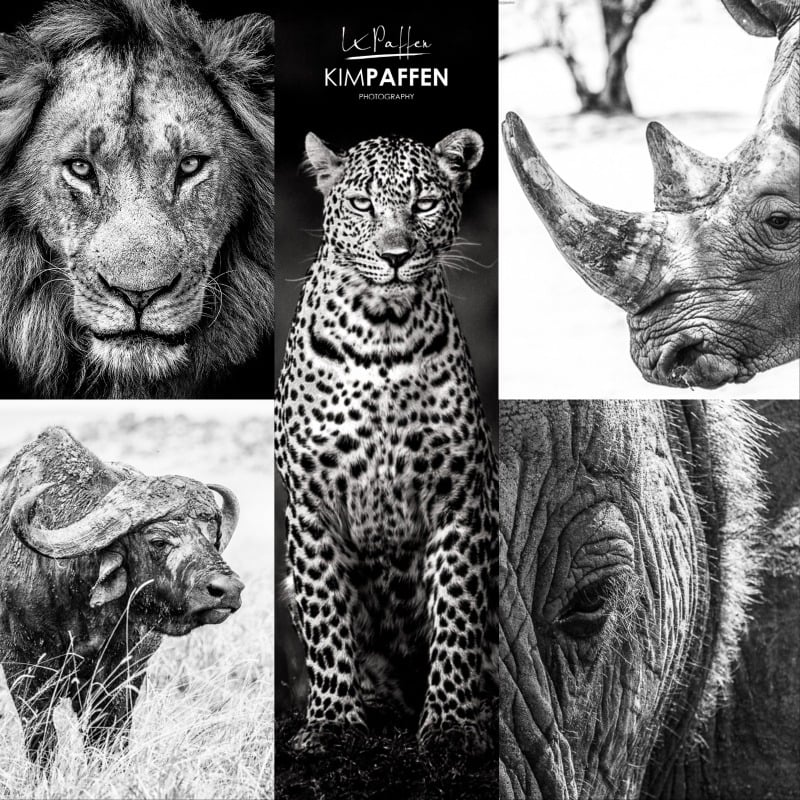
1. African Elephant: a gentle giant
The African savanna elephant is the largest land mammal in the world and can reach up to 3 meters in height and can weigh up to 7 tons. The African forest elephant is 3 feet shorter. Elephants communicate across a large distance at a very low frequency through their feet and the soil that cannot be heard by humans. Elephants live in a herd that is led by the 'matriarch' female. The elephant is threatened by ivory poachers for their tusks.
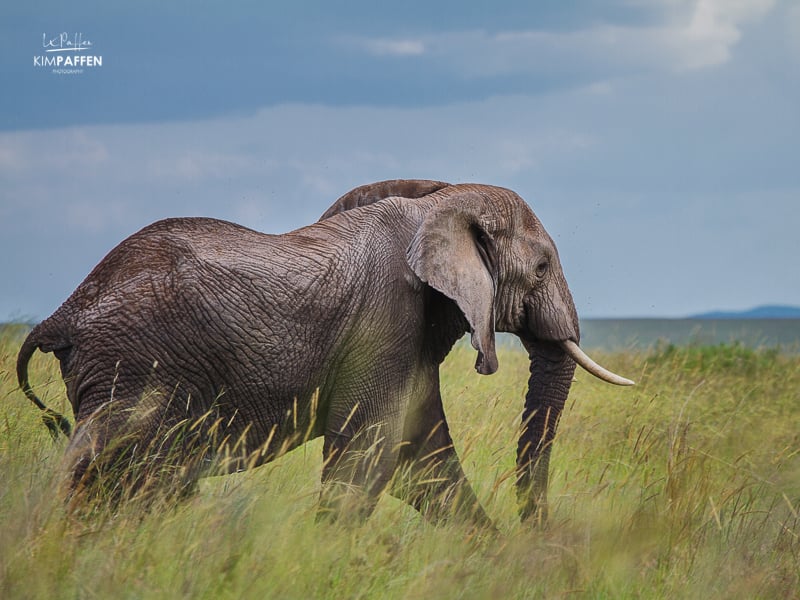
2. Rhino: most endangered species of the Big 5
The Rhinoceros is the most endangered species of the Big Five due to rhino poaching and illegal trade in rhino horns. There are two species of rhino in Africa: the White Rhino and the Black Rhino and five subspecies.
The names of the rhino don't have anything to do with color as both species are grey. The name of the 'white' rhino is a corruption of the Dutch word 'wijd' (wide), which refers to the wide mouth or square lip of the white rhino. A rhino can weigh up to 5000 pounds and its horns can grow up to 5 feet long. Rhinos have poor eyesight but excellent hearing and sense of smell.
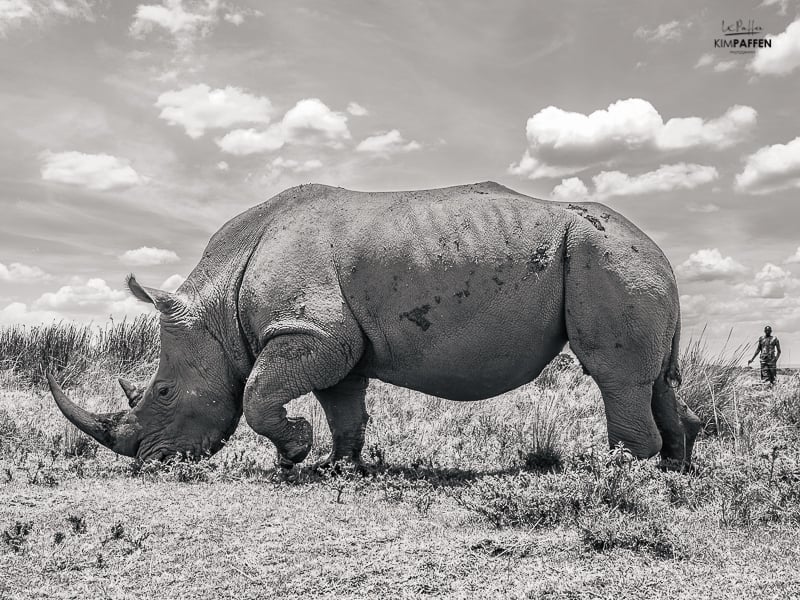
3. African Lion: courageous King of the jungle
An African lion is the largest predator on land. Preys of the lion include zebra, impala, giraffes, and other herbivores like wildebeest. A group of lions is called a pride and males are easily distinguished from females because of their large manes. The darker the lion's manes, the older he is.
A male lion is sometimes referred to as the king, but in reality, lions don't have a permanent social hierarchy. The dominant male in a lion pride can change at any time. The females hold the territory and stay with the pride in which they were born. They also do most of the hunting and take care of the cubs. Lions use their roar as a form of communication and can be heard up to 5 miles away.
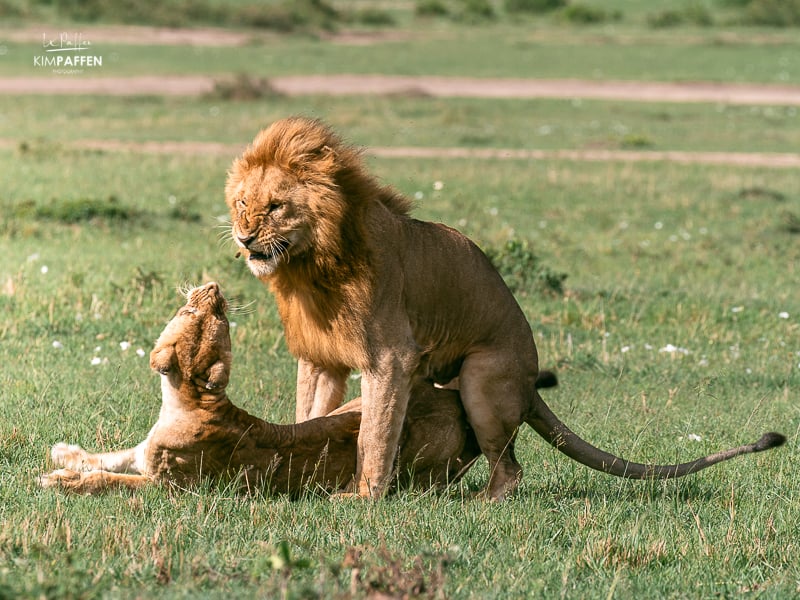
4. Leopard: sneaky and excellent tree climber
The African leopard is the most solitary and elusive animal of the big 5, staying hidden during the day. They are the least seen of the Big 5 and on most occasions found alone. The leopard is nocturnal and mainly hunts at night. Their kills include zebra and antelopes like Thompson Gazelle. The elusive leopards hide their prey in a tree to prevent lions and hyenas from stealing it. A lion and a leopard both belong to the African big cats, but they can't get along. A lion will kill a leopard if it has the chance. A leopard is also a good swimmer and occasionally eats fish.

5. Cape Buffalo: most dangerous to humans
The African buffalo is very territorial and protective and is probably the most dangerous animal of the big five to humans. If this cow-like animal feels threatened it can become very aggressive and charge with astonishing speed. Buffaloes are mostly found in groups and large herds and spend a lot of their time grazing. Both male and female buffaloes have horns, but the males' horns curve and come together in the center, forming a big bony plate called a boss.
The primary predator of the buffalo is the lion. A buffalo will try to protect and rescue another member of the herd and they have even been seen killing a lion after the lion had killed a member of the group. Although the African buffalo and water buffalo resemble each other, they are not closely related.
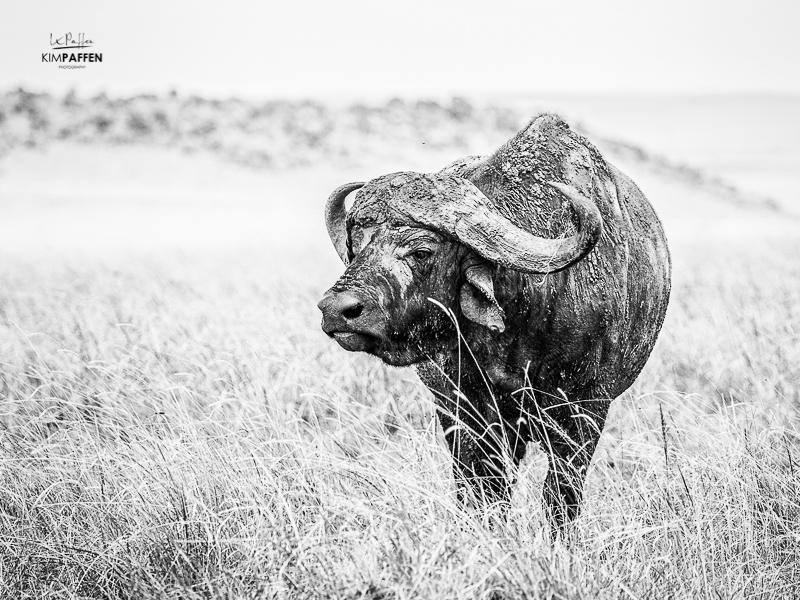
The Big 5 animals live on the African continent. You can find all of the Big 5 in Southern Africa and East Africa. The African countries where you can see the Big Five are:
- Democratic Republic of the Congo (DRC)
- South Africa
Not all of the above countries where the Big 5 live are ideal for a safari trip in terms of safety and existing numbers of the Big Five species.
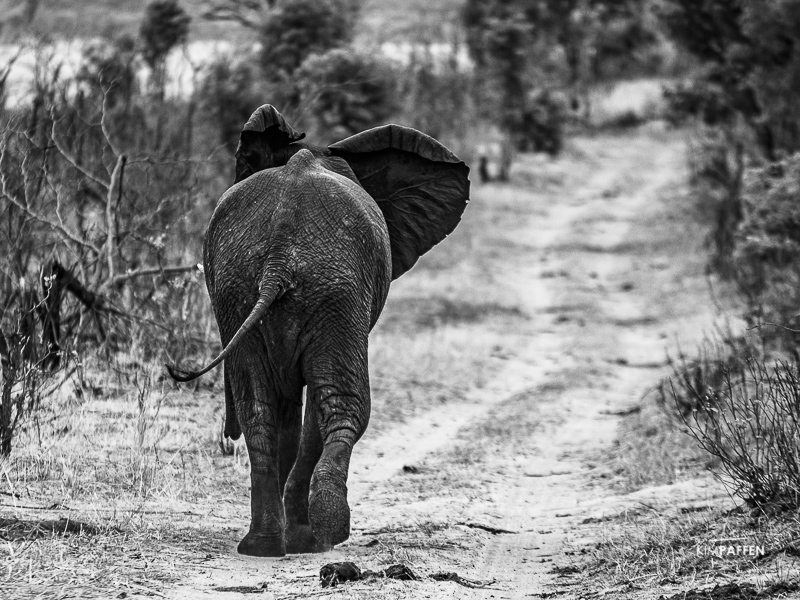
The best countries to see all the big five on safari are South Africa, Kenya, Tanzania, Botswana, Uganda, and Namibia.
However, in Namibia, you can't find all of the Big 5 in one place. In Etosha National Park you can only see 4 of the African Big Five. You can't find the buffalo there, but it's the best place in Africa to see the black rhino. They often concentrate around a water hole where tourists can sit to observe these critically endangered animals.
In Uganda, you can't see rhinos in the wild, but you have a chance of seeing all the Big 5 when you visit them up close at Ziwa Rhino Sanctuary where they roam freely but are protected by rangers 24/7. In Uganda, you can also see the endangered mountain Gorilla and our closest relative on a chimpanzee trekking or chimpanzee habituation.

South Africa is one of the most reliable Big Five safari destinations to spot all the Big 5 . South Africa even honored the importance of the Big 5 animals by putting each of the 5 animals on their bills.
The best chance of seeing the Big Five on a single safari or even on a single game drive is at the following places:
- Kruger National Park and the surrounding reserves, like Sabi Sand Game Reserve . Kruger is one of the best places to go for a safari in South Africa for both beginner safari travelers and seasoned wildlife viewers. Sabi Sand hosts luxurious safari lodges and shares an unfenced border with Kruger with an abundance of wildlife roaming around freely. It's also known for its high number of leopard sightings.
- Shamwari Private Game Reserve is a great place to find the Big 5 in South Africa. A beautiful high-end reserve with luxurious lodges and an exclusive feeling. You're often the only safari vehicle at an animal sighting. Shamwari is also well-known for its wildlife conservation initiatives, like the born-free Foundation.
- Ngorongoro Crater in Tanzania is a perfect place to find all of the Big Five in one day and you can combine your trip to the Ngorongoro Crater with for example the Serengeti which is famous for its wildlife sightings including the great migration of wildebeest and zebra.
- Maasai Mara National Park and the Mara Conservancies are also one of the best places to find the Big 5, although seeing rhinos roaming freely is a challenge. Some conservancies have a rhino sanctuary, but these rhinos are protected by rangers 24/7. An example is the Enonkishu Conservancy on the northern boundary of the Maasai Mara Conservancies. Another great place in Kenya to see rhinos is at Ol Pejeta Conservancy.
Of course, there are much more places and national parks to see the Big Five. Not all national parks have all of the Big Five and when they do have them, it can be harder to spot all of them on a single safari in Africa.
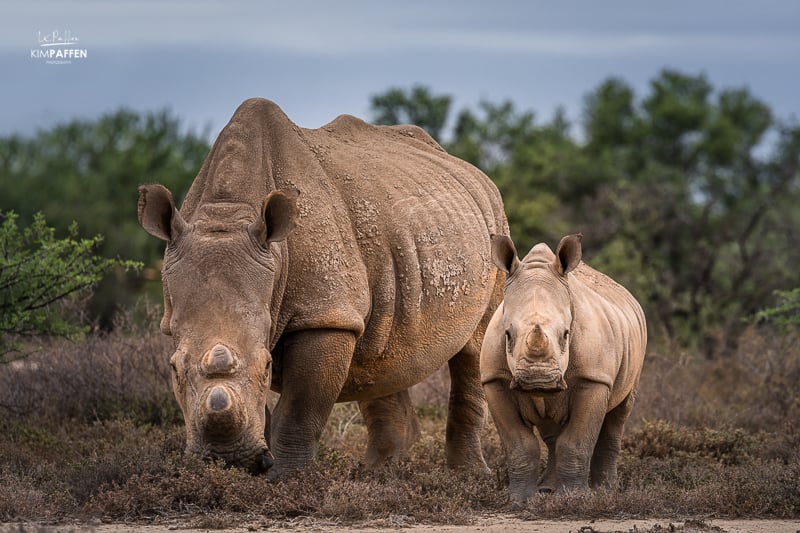
The high season for a safari in Africa is from July to October . It's the cooler dry winter which makes a Big 5 sighting easier because of the thin and dried-up vegetation. The lack of rain also means animals congregate around flowing rivers or larger lakes to drink. However, the shoulder seasons are also perfect to find the big 5 in Africa and it's less touristy.
Africa's Big Five are of great concern for wildlife conservationists due to trophy hunting, poaching, and habitat loss. Most of the Big 5 animals are listed as vulnerable or (critically) endangered species by the International Union for Conservation of Nature (IUCN). Hunting is sadly still allowed to some degree, but Africa now also has strict laws to protect and conserve many African animal species.
The black rhinoceros is classified as critically endangered and the southern white rhinoceros is near threatened. Mostly due to poaching because of the rhino horn. Two species of the African Big Cats , the African lion, and the African leopard are classified as vulnerable. The African savanna elephant is an endangered species, mainly because of the poaching crisis and habitat loss. The African buffalo is of the least concern of all the Big Five animals.
Contributing to wildlife conservation
The African Big 5 animals and other endangered species are widely protected in National Parks and government-run game reserves; partnering with the surrounding communities to reduce the human-wildlife conflict. Tourists contribute directly to big 5 wildlife conservation by going on safari in Africa and paying park fees.
As a nature and wildlife photographer, I also give back to wildlife conservation by donating 10% of each Fine Art Wildlife Photo Print sold in my webshop to the education of guides and rangers as a long-term goal to change the world and to protect our wildlife from extinction due to wildlife crimes and habitat loss. By buying a print in my webshop, you can make a difference too!
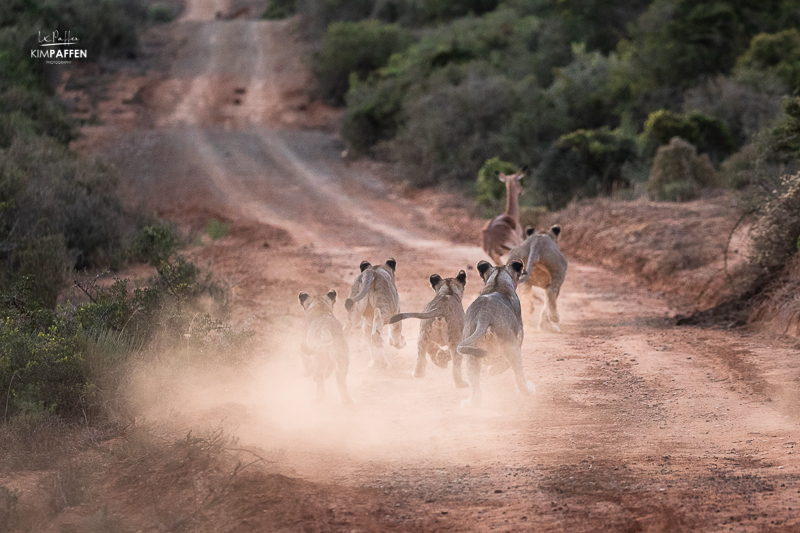
Apart from having the Big 5 in Africa, there are also other animal combinations formed that include 5 African animals. Africa also has the Shy Five and Little Five . It even named the Ugly Five , but that is very subjective.
Did you know I'm a qualified Field Guide (also known as a nature guide or safari guide )? I'm more than happy to take you on a photo safari to Africa with me where you will learn even more about the Big Five and all other flora and fauna. As a photographic tour leader and Dutch/English/German-speaking tour guide, I work closely together with local African tour operators and local drivers/guides. Get in touch to enquire about the possibilities.
I hope this article was helpful to learn more facts about the African Big 5 animals , including why they are called the Big Five, in what countries these Big 5 safari animals are found, and the best time of spotting them with a side note that there's more to Africa than spotting the Big Five.
Smaller creatures play an important role in the ecosystems as well. People who are going on a safari in Africa shouldn't be disappointed when they don't tick off the Big Five. Try to appreciate every single animal, big or small. Even trees, plants, and flowers. Every sighting is a gift of nature. Everything is connected and we should appreciate this more.
You would help me a lot by sharing this guide to the Big 5 in Africa on your social media or pinning it on Pinterest for later use.
Want to keep up to date with my travels? Follow me on Instagram @ourplanetinmylens. If you are inspired to go on a safari to Africa, you can find all of my writing about Africa and its countries in my Africa Travel Guide .
Pin the Guide about the Big 5 animals on Pinterest!
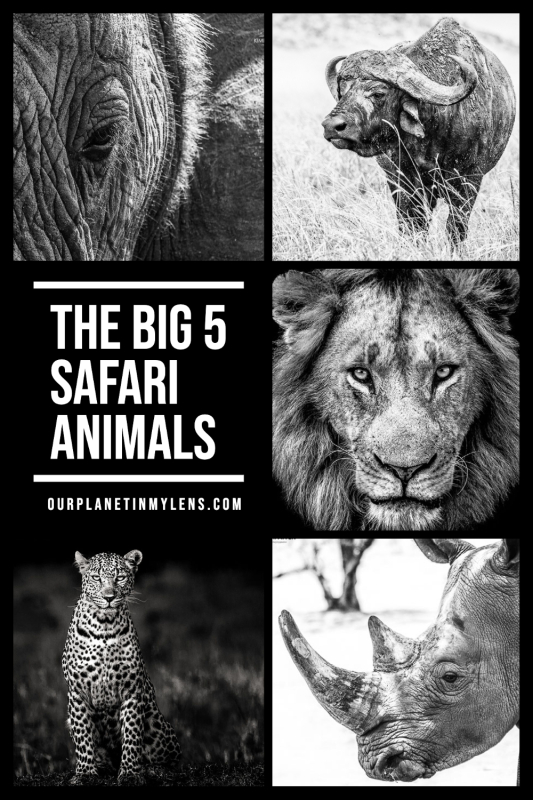
- 1x Each Month! A newsletter with free photography & travel tips to help you make the most out of your trip
- Be the first to know about giveaways, for instance, free ebooks and downloadable travel images
Yes, I want to receive the newsletter 1x p/month
- You are here:
Best Places To See the Big 5 on Safari in Africa
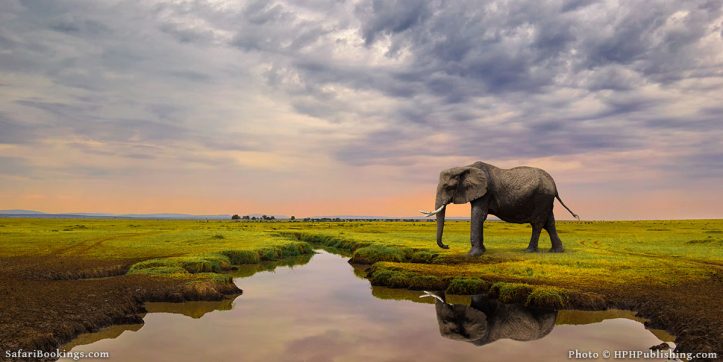
Ariadne is an Africa expert. She and her husband form a team who author many guidebooks to African countries.
Going on safari in Africa has become closely associated with seeing the Big Five. Have you ever wondered what that is all about and where you should go? The term ‘Big Five’ originated in the early days of game hunting. Lion, leopard, elephant, buffalo and rhino were the most dangerous animals to hunt and were therefore considered the most valuable trophies. Today, with most visitors armed with cameras, the Big Five are still perhaps the most exciting encounter on a safari. Below are some of the best places to see the Big Five in Africa.
10,756 African Safaris
1. Sabi Sand Game Reserve – South Africa
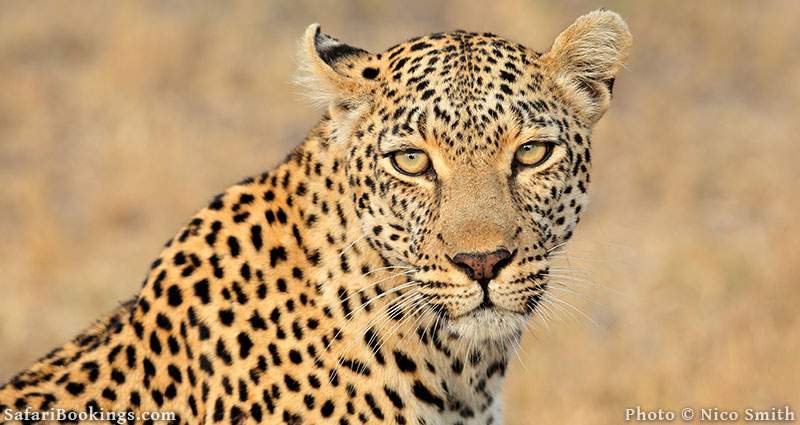
Spotting the Big Five doesn’t get easier than in Sabi Sand Game Reserve . This cluster of jointly managed private reserves has open borders with Kruger and forms part of the same ecosystem, but animals tend to be more relaxed. Furthermore, unlike in Kruger, guided drives in open vehicles are permitted to head off-road, which makes for fantastic close-up viewing. The real star of Sabi Sands is the leopard. Nowhere else is this usually shy creature so habituated. Most guests are treated to sightings of leopards as they go about their daily routine: a male patrolling or hunting, a female nursing cubs, possibly even a mating pair in action.
- When to visit Sabi Sands : There is no bad time to visit Sabi Sands, but wildlife viewing is best in the dry winter months from May to September.
- Where to stay: There are many lodges spread over the different reserves of Sabi Sand. All offer a similar experience inclusive of meals and activities. The standard of decor, service and guiding is superb. There are no camping or budget accommodations in Sabi Sands.
99 Sabi Sands Safaris
2. Ngorongoro Crater – Tanzania
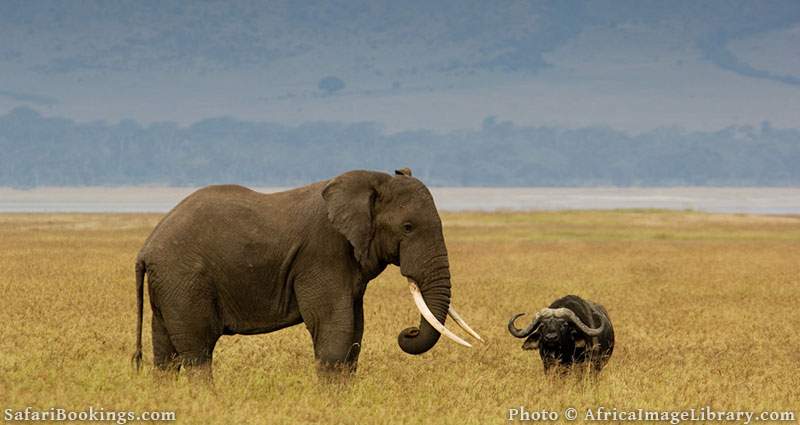
Ngorongoro Crater offers incredible wildlife viewing. Although animals can move in and out of the crater, climbing the steep caldera walls requires some effort, so much of the wildlife is resident inside. This includes a healthy population of black rhino. These shy creatures are rarely seen in East Africa, but the crater is one of the few places where they are easy to find. The other four members of the Big Five are prolific as well, although leopard sightings are hit-and-miss, and less likely inside the crater than on the forested rim. The good news is that these elusive cats are quite common in the Seronera area of Serengeti National Park, the next stop after Ngorongoro on most northern Tanzanian safari itineraries.
- When to visit Ngorongoro Crater : Wildlife viewing is always good in the crater, but marginally better in the Dry season when the grass is short and animals are easier to spot. The calving season of the wildebeest is from January to February and the best time to avoid the crowds is in the low season months, April and May.
- Where to stay: Several upmarket lodges are perched on the crater rim offering great views over the crater floor. There is a campsite on the rim as well, but be warned, it gets very cold here at night. Several lodges and hotels in the gateway town of Karatu are also used for visits to the crater. There are no accommodations within the crater, itself.
3,532 Ngorongoro Safaris
3. Masai Mara National Reserve – Kenya
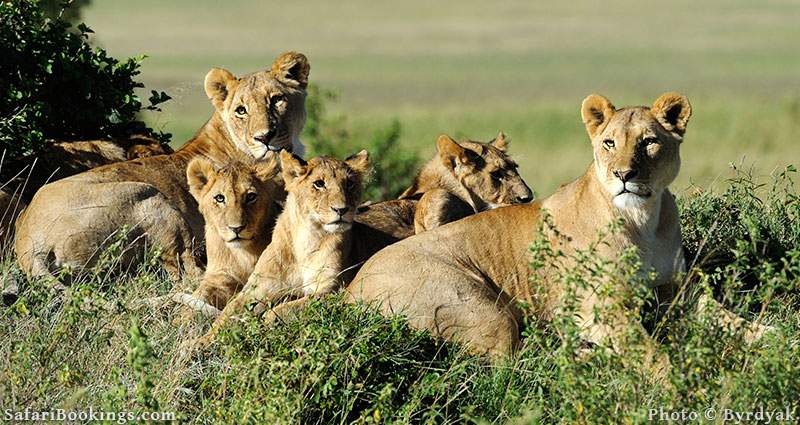
The Masai Mara is home to all of the Big Five but is most famous for big cats. You’ll be tripping over lions and cheetahs as they are remarkably common, and leopards are regularly seen too. Black rhinos are also present, but unless you’re fortunate enough to stay in the remote Mara Triangle in the far west, your chances of seeing one are slim. However, Lake Nakuru National Park, a popular stop-over en route to the Masai Mara, is home to both black and white rhino (but no elephants). White rhinos are commonly seen in small family groups grazing around the lake, especially from mid-morning and in the late afternoon.
- When to visit Masai Mara : Wildlife viewing is good throughout the year. To catch the wildebeest migration, you should aim to be here between late August and early October.
- Where to stay: There is no shortage of accommodations inside and just outside the reserve. All budgets and styles are catered for. There are several campsites as well.
1,576 Masai Mara Safaris
4. Kruger National Park – South Africa
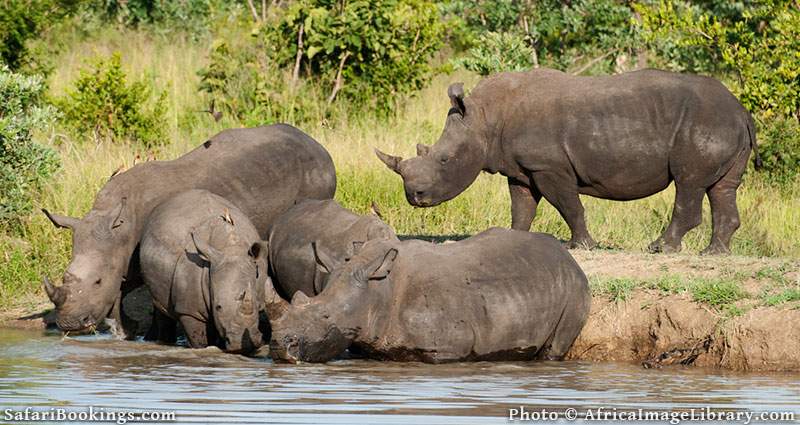
Whether you’re on a guided tour or self-driving, Kruger National Park is a great choice for a Big Five safari. The park is the size of a small country, and the wide variety of habitats it protects is reflected by the varied wildlife. Identifying all the different antelope species in Kruger can be an enjoyable challenge. In terms of the Big Five, lion, buffalo and elephant are easily found in southern Kruger, which is also one of the best places to see white rhino. With time on your hands and a bit of luck, you might spot a leopard too. Make sure to be out and about at dawn and dusk to increase your chances of seeing this shy cat which is active at night.
- When to visit Kruger : Wildlife viewing in Kruger is best from May to September. These are the dry winter months when animals don’t stray far from waterholes and rivers. During the wet summer months, the bush gets very thick and animals are more difficult to spot.
- Where to stay: Well-equipped, basic rest camps offering campsites and huts can be found throughout Kruger. Several private concessions within the park offer a luxurious and more exclusive alternative.
437 Kruger Safaris
5. Madikwe Game Reserve – South Africa
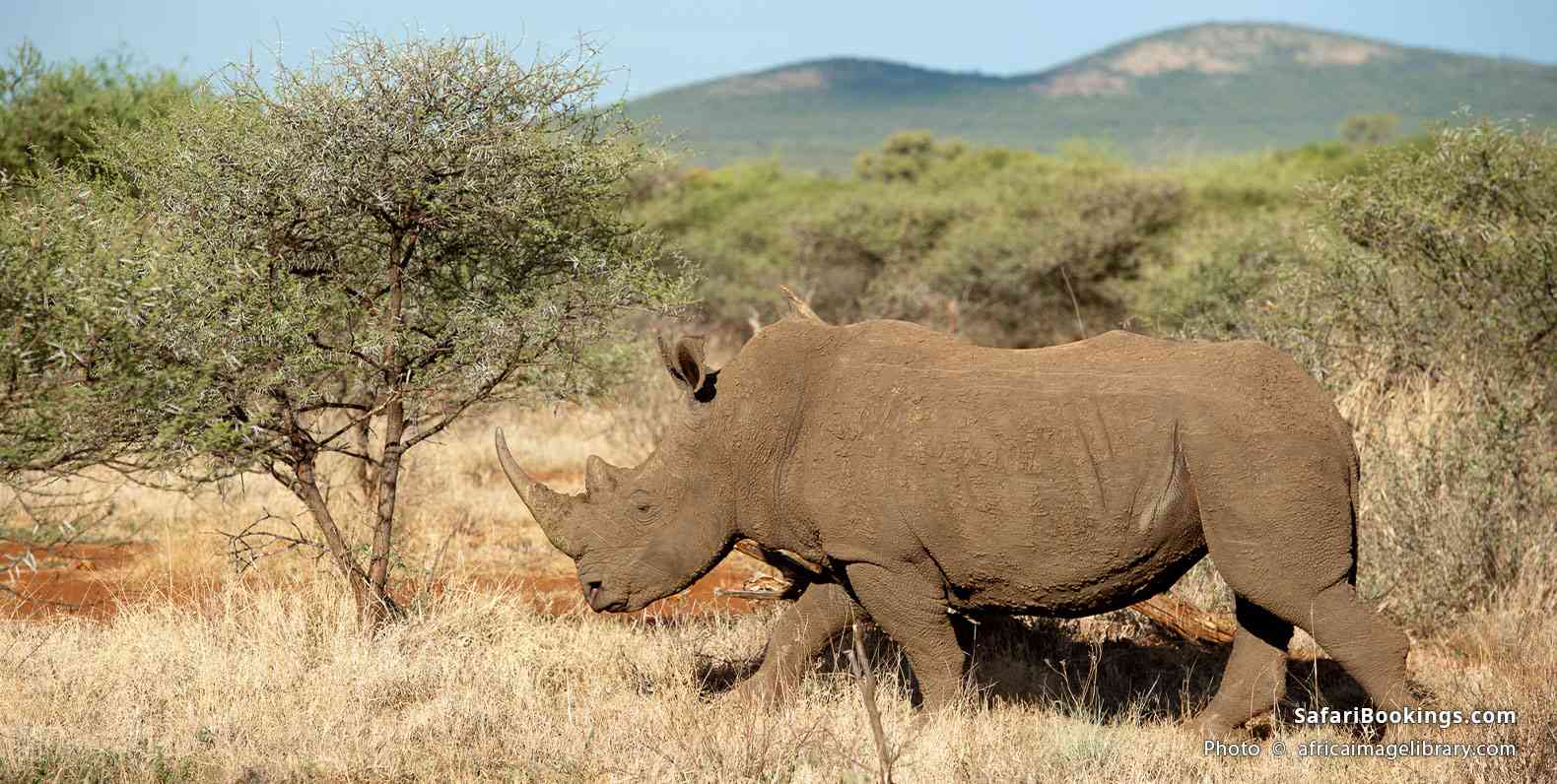
Madikwe is arguably the top African safari pick for those who want a good chance of spotting most of the Big Five in a malaria-free destination. Forged from formerly unproductive ranchland in 1991, this exceptional park protects a 750km² /290mi² tract of semi-arid savannah in North West province, some four to five hours’ drive from Johannesburg. Shortly after being created, it was stocked with 8,000 individual animals comprising 28 species, including all the Big Five. Today, you’re very likely to see lion, elephant and white rhino over the course of a few days in Madikwe, and there’s a fair chance of buffalo and leopard. Madikwe is also known as one of the best places to look for the endangered African wild dog, while other wildlife includes cheetah, giraffe, zebra and a wide variety of antelope. An unusual feature of Madikwe is that it is a state-owned property that functions more like a private reserve insofar as it is closed to self-drive safaris and day visits.
- When to visit Madikwe : There is no bad time to visit Madikwe, as the expert guides are good at finding animals at any time of year. However, optimum wildlife viewing is over the dry winter months of May to September, when animals stick close to perennial water sources.
- Where to stay: Madikwe is serviced by several small upmarket lodges that specialize in all-inclusive packages with guided game drives taking place in open 4x4s. There are no budget accommodations or camping facilities.
23 Madikwe Safaris
6. Okavango Delta – Botswana

The Okavango is one of Africa’s most iconic wildlife destinations. The Delta is home to all of the Big Five, although rhino (both black and white) can be hard to find; Moremi Game Reserve offers the best chance, or visit Khama Rhino Sanctuary, a half-day’s drive away as an add-on. Buffalo and elephant thrive in the wetlands, and you should see some big cats as well. The most productive activity for spotting typical safari animals, including the Big Five, is a game drive. But you should put aside time to do a guided walk and for exploring the Delta’s channels by mokoro (traditional dugout canoe). Gliding silently through waterlilies, dodging the odd hippo and scanning the shore for animals coming to drink, is an experience that will stay with you long after your trip.
- When to visit Okavango : The best time for wildlife viewing is from July to October.
- Where to stay: There are dozens of luxury lodges in the Okavango. Camping is popular too.
230 Okavango Delta Tours
7. Ol Pejeta Conservancy – Kenya

High on the Laikipia Plateau, just north of Kenya’s Central Highlands, Ol Pejeta Conservancy is a fine place to see the Big Five just a few hours north of Nairobi. Seeing lions on a guided game drive is always possible, but the conservancy also offers a fine lion-tracking excursion, which really increases your chances. Rhinos are also commonly seen, both roaming free out on the grasslands, and in the enclosures for the last two remaining northern white rhinos on the planet. Leopards inhabit the dense thickets and riverine woodlands, while elephants and buffalo are also common. Some of the nearby private and community conservancies, including Lewa Wildlife Conservancy, are more exclusive, but are also known for their Big Five possibilities.
- When to visit Ol Pejeta : The June to September Dry season promises the best weather for visiting Ol Pejeta with clear skies and mild temperatures the norm. It’s usually dry from December to February, but hotter and more humid. The best birding is from November to April, when migratory species are present.
- Where to stay: Ol Pejeta Conservancy has a good range of lodges and tented camps, as well as a campsite for budget travelers. Unlike most other Laikipia conservancies, you don’t need to be staying overnight to visit Ol Pejeta.
101 Ol Pejeta Safaris
8. Akagera National Park – Rwanda
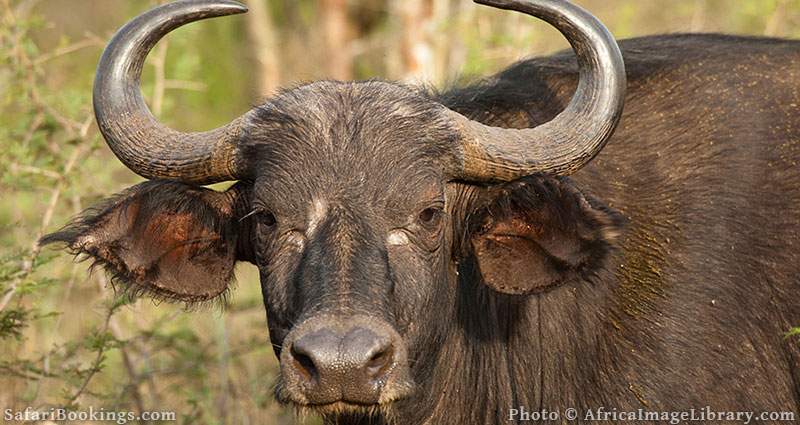
While Rwanda is well known for its mountain gorillas, it is also home to the Big Five and many other savannah-dwelling animals. The place to go on a classic safari in Rwanda is Akagera National Park . Wildlife here was heavily depleted by warfare and poaching, but since 2010 it has made an impressive comeback. The reintroduction of black rhinos and lions in 2017, followed by white rhinos in 2021, means that Akagera offers a truly off-the-beaten-track opportunity to see the Big Five in Africa.
- When to visit Akagera : The Dry season, from June to September, is the best time to visit.
- Where to stay: There is a luxury tented camp, a seasonal bush camp and a mid-range lodge inside the park. There are also several campsites without facilities available to self-sufficient travelers.
92 Akagera Safaris
9. Murchison Falls National Park – Uganda

Murchison Falls National Park is as much worth visiting for its spectacular scenery as for its wildlife. It is bisected by the Victoria Nile River. A boat trip to the base of the waterfall for which the park is named is not to be missed. The river is home to hundreds of hippos and crocodiles and, in the afternoon, you’re likely to see buffalo and elephants on the shore. Murchison Falls is not a complete Big Five destination as there are no rhinos, but many visitors stop in at Ziwa Rhino Sanctuary en route for an exciting rhino tracking experience.
- When to visit Murchison Falls : December to February is best for general wildlife viewing but be prepared for hot weather at that time.
- Where to stay: There is a good choice of upmarket and mid-range lodges inside the park and budget accommodations are available just outside. There are several campsites too.
524 Murchison Falls Safaris
10. Phinda Game Reserve – South Africa
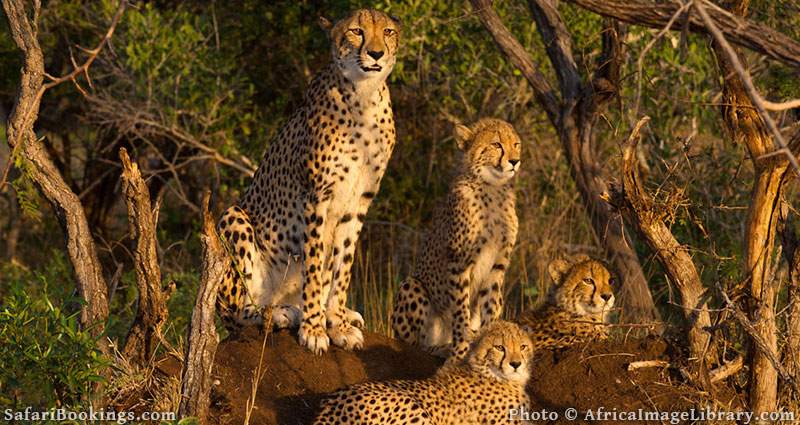
Phinda is one of South Africa’s top private Big Five game reserves. You have a choice of four stunning accommodations spread out over the reserve’s different habitats: Rock, Mountain, Forest and Vlei (wetland) Lodge. The guiding is superb and you’ll easily see four of the Big Five (lion, elephant, buffalo and white rhino) as well as some Zululand specials, such as the graceful nyala and the shy red duiker. Although there are plenty of leopards around, you’d be lucky to see one. As compensation, Phinda’s flagship species is the cheetah and sightings of this graceful big cat tend to be incredible.
- When to visit Phinda : Phinda’s wildlife viewing is always great but animals are slightly easier to find in the Dry season from May to September.
- Where to stay: There are four luxury lodges in Phinda.
Phinda Safaris
11. Majete Wildlife Reserve – Malawi
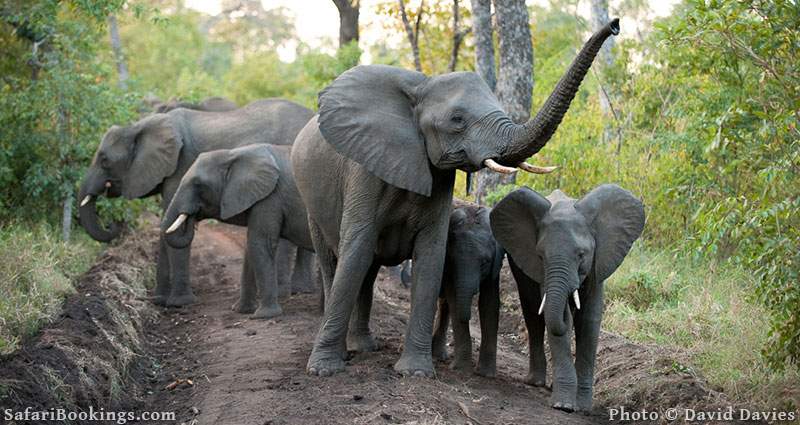
Majete Wildlife Reserve is one of Africa’s modern environmental success stories. Prior to 2003, the park was almost completely hunted out. Since then, under the management of African Parks, nearly 5,000 individual animals, including all of the Big Five, have been reintroduced. Elephants have bred so successfully that a surplus of 200 individuals were relocated to Nkhotakota Wildlife Reserve. Although sightings require a bit of patience, Majete offers a totally unspoiled experience, far away from the crowds. A ‘behind the scenes’ tour, offering insight into what it takes to run a Big Five reserve, is recommended.
- When to visit Majete : You can visit anytime, but July to October is best for wildlife viewing.
- Where to stay: There are two mid-range lodges to choose from (one inside and one just outside the game reserve). Top of the range is an exclusive luxury lodge that operates in its own private concession. Campers are taken care of in a well-equipped community campsite.
Majete Safaris
Want To Go on an African Safari?
Click on the button below to compare African safaris offered by top-rated tour operators.
About SafariBookings
SafariBookings is the largest online marketplace for African safari tours. Easily compare offers from top-rated tour operators. Make decisions like a pro by using our 103,258 reviews and 223 destination guides. More About Us
Safaris by Type
- Luxury Safaris
- Budget Safaris
- Gorilla Trekking
- Chimp Trekking
- Family Safaris
- Private Safaris
- Group Safaris
- Photo Safaris
- Overland Tours
- Camping Safaris
- Fly-in Safaris
- Walking Safaris
- Birding Safaris
- Self-drive Safaris
- Canoe Safaris
Most Popular Blog Posts
- Best Time for African Safari
- Best Safari in South Africa
- Family Safari in South Africa
- African Safari Tips
- Game Reserves Near Cape Town
- What to Pack for a Safari
- Best African Safari Parks
- Top 5 Best African Honeymoon Safaris
- Top 5 Best Tanzania Family Safaris
- Best Places to See Cheetahs in Africa
- How Much Does an African Safari Cost?
- Best Places To Visit In Africa in 2024
Blog Categories
African safari tours.

5-Day Tsavo East, West and Amboseli Safari from Mombasa
$1,045 pp (USD)
Kenya: Private tour Lodge & Tented Camp
You Visit: Mombasa (Start) , Tsavo East NP, Amboseli NP, Tsavo West NP, Mombasa (End)
Africa Vacation Safaris
5.0 /5 – 28 Reviews

3-Day Safari in Serengeti and Ngorongoro - Midrange
Tanzania: Shared tour (max 6 people per vehicle) Tented Camp & Tented Bush Camp
You Visit: Arusha (Start) , Serengeti NP, Central Serengeti, Ngorongoro Crater, Arusha (End)
Kilipath African Safari
4.8 /5 – 42 Reviews

4-Day Safari from Dar Es Salaam to Zanzibar
$1,573 pp (USD)
Tanzania: Shared tour (max 6 people per vehicle) Tented Camp & Hotel
You Visit: Zanzibar (Start) , Tarangire NP, Serengeti NP, Central Serengeti, Ngorongoro Crater, Dar Es Salaam (End)
Enjoy Rejoice Adventures
4.7 /5 – 15 Reviews
- Skip to primary navigation
- Skip to main content
- Skip to primary sidebar
- Skip to footer
TravelAwaits
Our mission is to serve the 50+ traveler who's ready to cross a few items off their bucket list.
The Big Five, Small Five, Shy Five, And Ugly Five: What Are They And Where To Find Them

Martin Pelanek / Shutterstock
- Activities and Interests
- Destinations
- Outdoor Activities
All good vacations involve lists such as pre-planning checklists, what-to-pack lists, or perhaps the list you leave behind reminding your neighbor or house-sitter to water the plants and feed the cat. Going on safari in Africa, though, will present you with a whole new range of lists. A good kind of list! Assuming you have got through all those to-do lists at home and actually arrived at your safari destination, prepare yourself for a new kind of list. I’m talking about wildlife checklists, either those handy printed lists some lodges leave in your room, or perhaps just mental lists you have in your head of all the fabulous creatures you are hoping to see. Some of the animals on these lists you will be familiar with, but there may be others that you have quite possibly never even heard of. Read on to prepare yourself!

African Bush Camps
The Big Five
If you’re planning an African safari or already have one under your belt, you’ll more than likely have heard the term Big Five, one of the most widely used phrases in the safari business. The term Big Five was originally coined by game hunters, who discovered that these animals were some of the hardest and most dangerous animals to hunt on foot. Today, the phrase has come to represent some of the most sought-after safari animal sightings.
The Big Five are the elephant, lion, leopard, buffalo, and rhino, and I’ve written about them in more detail here .

Whilst most people coming to Africa on safari have the Big Five on their radar, the continent has much more than just those majestic five animals to see. In fact, with hundreds of species of mammals, reptiles, insects, and birds calling this continent home, it’s no wonder that some alternative lists of fives have been created!
Next time you are on safari, keep your eye out for Small Five (whose names mimic the Big Five, but whose size is much, much smaller), the Shy Five (who are pretty jolly hard to find given their introverted ways), and the Ugly Five (who frankly, can really only be loved by their mothers!).
The Small Five
While these five animals are not particularly shy, they’re often hard to spot because they are just so small!
Elephant Shrew
Arguably the cutest of the little five, the elephant shrew doesn’t bear much resemblance to its namesake, the elephant, except for its long, mobile snout. Measuring just over 9 inches, the elephant shrew is lightning fast and incredibly agile. There are 15 species of elephant shrew, all with large eyes and ears and powerful back legs, which propel them after their insect prey with a series of super speedy bounds. Elephant shrews are highly territorial animals, usually maintaining a network of trails around their “patch,” which they scent-mark and keep clear of debris on their regular high-speed patrols. Ironically, scientists have discovered that elephant shrews actually share distant evolutionary ancestry with elephants, so perhaps their name is a good fit after all.

SokoloFF / Shutterstock
With a name like ant lion, you’d be forgiven for expecting these insects to be large and fierce. They’re not at all! Ant lions are small, winged insects, similar in appearance to dragonflies or lacewings. They get their name from their larvae, whose sickle-like jaws would be rather fearsome if you were an ant! Ant lion larvae build tiny, conical, sandy pit traps into which their unsuspecting prey fall. At the bottom of each trap lurks the larvae, and any ant that tumbles over the edge slips down into its waiting jaws. Once it has sucked the vital fluids from its prey, the ant lion larvae flicks the lifeless exoskeleton out of the pit and buries itself again to lie in wait for its next victim.

Leopard Tortoise
The leopard tortoise’s name conjures up an image of a stalking feline, but to be honest, these slow-moving reptiles’ movements are neither stealthy nor masterful. The leopard part of the name really comes from the black-spots-on-yellow-background pattern on their shells. In truth, these are gentle creatures who snack on plants, with the occasional nibble on a piece of bone for a bit of extra calcium. Whilst it may be slow, the leopard tortoise’s shell gives it tank-like protection, so it has little to fear from predators; though with their slow speed, fire does present a more serious hazard, and it’s not uncommon to find burnt out leopard tortoise shells when out walking in the bush. While many tortoise hatchlings fall prey to a wide variety of predators, those that survive to adulthood can plod on for 50 years or more.

GUDKOV ANDREY / Shutterstock
Buffalo Weaver
There are two main kinds of buffalo weavers: red-billed and white-billed, distinguished from each other by, surprise, surprise, the color of their bills. These are rather sociable creatures and build large, untidy, colony-type nests that house numerous birds, a bit like an apartment block. These noisy birds have little in common with their bovine namesakes, aside from their sociable behavior and black coloration. Unlike the vegetarian buffalo, aside from the occasional seeds, buffalo weavers like to dine on grasshoppers, caterpillars, ants, and other similarly appetizing insects.

NH / Shutterstock
Rhino Beetle
Rhino beetles get their name from their striking curved horns (sported only by the males). While they may not bear much resemblance to real rhinos, they are nonetheless quite impressive, at least as far as insects go! These are large, robust insects endowed with prodigious strength. Scientists have calculated that a rhino beetle can carry a load 850 times its weight, making it arguably the strongest animal in the world! The males’ horns are, like those of their namesake, used for territorial combat. These are tough little guys, fierce-looking but totally harmless to humans, being neither biters nor stingers. They aren’t terribly efficient flyers, either, due to their size. The only time rhino beetles tend to fight is over the attention of the ladies.
The Shy Five
When looking for the Shy Five, bear in mind, they’re called the shy for a reason! If you’re a very lucky safari-goer, you might just catch a glimpse, but I can guarantee they will be doing their best not to meet you! A couple of places renowned for sightings of these species include South Africa’s Tswalu Kalahari Reserve and Samara Game Reserve .

Konkamoya Lodge
Cute but prickly, a porcupine’s entire back is covered in sharp, black and white quills that can reach up to 20 inches in length. If threatened, a porcupine will quite simply turn its back on danger and raise its quills, even if the threat is a leopard! A porcupine’s quills are quite loosely attached, and it’s not uncommon to find them embedded in the face of any creature who was unwise enough to try to have a porcupine for dinner (a porcupine’s quills do grow back over time). Being nocturnal, you are most likely to spot one rootling around while you’re out on a night drive.

Bat-Eared Fox
As its name suggests, the bat-eared fox has unusually large ears in proportion to its head and body, quite like those of a bat! Bat-eared foxes are predominantly found in areas where there are plenty of termites and beetles to feast upon. These mainly nocturnal creatures are masters of disguise, and if they feel in danger, they will simply lie down in tall grass or thick bush, where they are perfectly camouflaged. Another reason they’re hard to see is that they’re small, really small, usually only about 12 inches tall and weighing in at 6 to 10 pounds.

Aardvarks are one of the Shy Five’s cutest members, with their long noses and sweet upright ears. With long, tapering tails, arched backs, and coarse grey-brown hair, there’s something sort of kangaroo-like about aardvarks. Being nocturnal, they spend hot African afternoons resting in a tight ball in their cool underground burrows, coming out at night to hunt for termites and other insects.

Jackie Cilliers
Meerkats are predominantly desert animals, living in Botswana’s Kalahari Desert, much of the Namib Desert in Namibia and southwestern Angola, and South Africa. Given the trademark standing poses of habituated meerkat troops, some might question their presence on the Shy Five list. Still, with their extraordinarily well-honed senses and their natural environment, meerkats can and will disappear long before any human can think of getting near!

Thomas Retterath / Shutterstock
Aardwolves are nocturnal, solitary foragers, only coming together to mate and rear young. Their name means “earth wolf” in Afrikaans and stems from their supposed dog-like features and diet of termites. Aardwolves are small, usually measuring only about 17 inches in height. They are, in fact, a species of hyena but, unlike their cousins who feature on the Ugly Five list below, their diet consists of termites. An aardwolf can eat up to 300,000 termites in a night!
The Ugly Five
While they might not be the supermodels of the African bush, the creatures on this list certainly make up for it by being interesting and having a certain charm. Allow me to introduce you to some of Africa’s less glamorous animals.

Royal Zambezi Lodge
When your name includes the word “wart,” you’re destined to be on this list. With bags under the eyes, double sets of tusks, and coarsely haired bodies, warthogs are found throughout Southern Africa, usually in family groups, often rummaging around close to camps or wallowing in the mud at waterholes. While they may be delightful to watch, trotting around, tail in the air like a radio antenna, or kneeling on the ground snuffling about for food, don’t be fooled by their cuteness. They can be vicious if challenged, and their tusks can inflict a serious, potentially lethal, wound.

Wildebeest look like they were made up of the leftovers after all the other safari animals were complete. They may have the head of an ox, the mane of a horse, and the horns of a buffalo, but really, they’re an antelope. Wildebeest are characterized by long black manes, shaggy beards of hair hanging from their throats and necks, and short, curved horns. Ugly or not, if you’re lucky enough to see a migrating herd of wildebeest, which can number into the thousands, it’s a pretty spectacular sight!
As scavengers, the vultures’ role in cleaning up the carcasses of dead animals leaves a bit to be desired, and they do get a bit of a bad rap, mostly because of their rather bloodthirsty, scavenging habits. See a flock of vultures circling high up above the African bush, and you can be sure there’s a kill below.

Dan Giveon / Shutterstock
Marabou Stork
There is no sugar-coating it — the marabou stork is an eye-sore, with its scabby pink face, featherless head, and bulbous throat sac. Another of their less endearing traits is their habit of excreting over themselves in an attempt to keep themselves cool, giving their legs a permanent, sickly tinge of greyish white. These birds are carnivores, eating anything from dead animal carcasses to fish and even other birds. They also feed on carcasses alongside other scavengers, such as vultures and hyenas. The marabou’s appearance and somewhat unbecoming habits have earned it the nickname of “the undertaker bird.”

Sarah Kingdom
Hyenas are my favorite of the African animals, but even I have to admit that while baby hyenas definitely have a touch of cuteness about them, it doesn’t take long for them to grow up and lose that appeal! With their sloped backs, somewhat aggressive looks, and distinctive eerie laugh, the hyena easily fits into this list of misfits and ugly animals.
So now you know who they all are, you can add them to your “Things to Spot” list next time you are on safari.
Related Reading:
- The Ultimate Guide To Planning Your First African Safari
- 9 Things To Know Before Booking A Long Safari
- 12 Stunning Birds To Spot While On Safari
- 7 Fantastic Animals To See On Safari And The Best Places To Find Them
- 5 More Once-In-A-Lifetime Animal Experiences In Africa

Born and raised in Sydney, Australia, before moving to Africa at the age of 21, Sarah Kingdom is a mountain climber and guide, traveler, yoga teacher, trail runner, and mother of two. When she is not climbing or traveling she lives on a cattle ranch in central Zambia. She guides and runs trips regularly in India, Nepal, Tibet, Russia, and Ethiopia, taking climbers up Tanzania’s Mount Kilimanjaro numerous times a year.
You are using an outdated browser. Please upgrade your browser to improve your experience.
Looking for a unique destination for your next holiday? Try St Helena!
Big 5 safaris – where and when.
Maximise your chances of seeing the Big Five
24 Aug 2020
13 feb 2023.
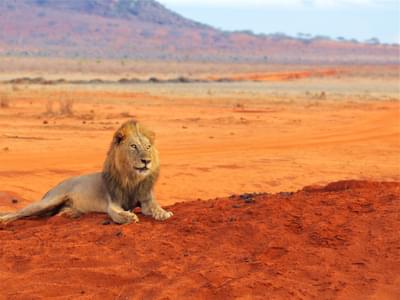
The ‘Big Five’ are a must see for many safari goers and ticking off all five can be a real highlight of any safari holiday.
The Big Five is a term originally coined by colonial hunters who viewed these animals as the hardest and most dangerous animals to kill, although today safaris now focus on spotting, watching and photographing animals, rather than hunting then, the draw of seeing the ‘Big Five’ remains as popular as ever.
The ‘Big Five’ is made up of lion, leopard, elephant, buffalo and rhino. Of these, leopard are often the hardest to see as they tend to be the most elusive and are also the smallest of the ‘Big Five’. There are both black and white rhino and these remain the rarest as a result of poaching for their horns, and black rhino in particular are critically endangered.
Whilst seeing all of the Big Five can never be guaranteed on safari as you are looking for wild animals in their natural habitat and it can be difficult to predict where they will be, you can increase your chances by going to know Big Five areas.
Here are some of our favourite safari holidays and destinations to give you the best chance of seeing the ‘Big Five’.
1. South Africa
The Kruger National Park in South Africa is home to an amazing array of wildlife including the Big Five and visitors tend to have high success rates of sightings here. As well as the Big Five, you also have the chance to see cheetah, wild dog, hyena, and giraffe to name a few.
The most elusive of the Big Five is typically leopard which hide in thick, dense bush or up trees and hunt at nights, so leopard fans would do well to also explore Sabi Sands Private Game Reserve which lies adjacent to Kruger National Park and is one of the best places to spot leopard in the whole of Africa.
As well as the dense wildlife, South Africa also tends to offer excellent value for money with high accommodation standards and exceptional food and drink on offer, it is one of the most affordable safari destinations especially if you choose to self-drive.
A Big Five safari in the Kruger can also be combined either with Cape Town and the winelands or with the world-class beaches of either Mozambique or the Seychelles.
Cape Town, Winelands and Kruger - 16 days from £4,435pp including international flights.
Luxury Kruger and Mozambique Honeymoon - 11 days from £8,345pp including international flights
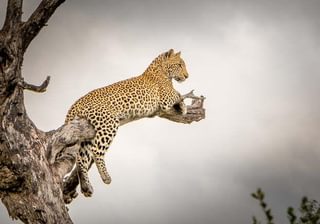
The world-renowned Masai Mara in Kenya is abundant with wildlife and offers a particularly good opportunity to see Big Cats. In August and September, you also have the chance to see the Wildebeest Migration as it moves up from the Serengeti which is an unforgettable experience. A popular luxury add-on to a Masai Mara safari, is a sunrise hot air balloon which gives you a unique perspective of the amazing plains dotted with acacia tress and watch herds of animals moving below.
On a Masai Mara safari you have a strong possibility of seeing lion, leopard, elephant, and buffalo. Whilst rhino can be seen in the Masai Mara, it is less common so to maximize your chances of seeing both white and black rhino, we would recommend combining the Masai Mara with either Lewa or Laikipia which can be reached with a short flight and are both renowned for the number of rhino present and their conservation programs which are fascinating to learn more about.
Combining two safari areas also gives you the chance to see different landscapes within Kenya giving you a greater sense of the country and is easy to achieve within a week’s safari.
Kenya offers a very traditional safari experience with the chance to meet the Masai warriors, enjoy bush breakfasts and sundowner drinks, as well as to spot the Big Five. It also boasts stunning white sand beaches along the Kenya coast, or can easily be combined with Zanzibar or the Seychelles for some post-safari relaxation.
Classic Kenya safari and beach - combine the Masai Mara, Laikipia and Diani Beach in this 10 day holiday from £5,335pp (excluding international flights).
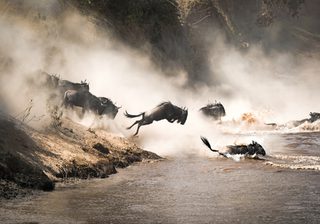
3. Tanzania
Home to the world-famous Wildebeest Migration across the Serengeti which is often described as the ‘Greatest Show on Earth’ and the vast Ngorongoro Crater, Tanzania offer unbeatable wildlife viewing and a great chance to see the Big Five.
To maximise your chances of seeing the ‘Big Five’ and for a truly special holiday, we’d recommend combining the Serengeti which has plentiful number of buffalo, elephant and lion, and leopard, with the Ngorongoro Crater which has a healthy black rhino population (the rarest of the Big Five).
The Serengeti is a vast, flat savannah for as far as you can see and during the migration you will see hundreds of thousands of wildebeest and zebra on the move to find fresh pastures, and of course, followed by plenty of predators hunting their next meal. The peak times to visit are January and February which is the calving season and July to September when the famous river crossing happen.
By contrast, the Ngorongoro Crater which is a long extinct volcano, has steep high walls giving you an incredible view from the rim and an impressive amount of wildlife on the Crater floor including black rhino.
A Tanzania safari is easy to combine with the pristine beaches of Zanzibar, and many choose to spend a week relaxing and snorkelling on this wonderful island after their safari.
Safari and beach - enjoy the luxury of having your own driver as you combine the Tarangire National Park famed for its elephants, with the Serengeti and Ngorongoro Crater, followed by relaxing on the beach in Zanzibar in this 13 day holiday. From £4,800pp.
Tanzania active safari - for those looking to try a more active holiday, enjoy this mixture of mountain biking, walking and 4x4 safaris visiting Lake Manyara, Ngorongoro Crater and the Serengeti in this 9 day adventure. From £4,167.

4. Botswana
Botswana is often seen as the pinnacle of safari destinations, renowned for its abundant wildlife and exclusive game-viewing. Whilst Botswana is particularly known for its high number of elephant, it is home to all of the Big Five now that rhino have been reintroduced in recent years.
Chobe National Park in Botswana is a heavyweight safari destination with plenty of elephant and predators including lion. There have even been instances here where lions have been witnesses taking down elephant – a rare and incredible feat.
Rhino have recently been reintroduced to Botswana and your chances of seeing these are greatest in Moremi Game Reserve which is at the heart of the Okavango Delta . Moremi is also a great place to spot leopard due to the dense trees, tall grasses and high predator numbers, making it a great place for them to thrive. As well as being home to the Big Five, you can also see cheetah, hyena and rare wild dog.
As well as spotting the Big Five, Botswana gives you a chance to enjoy a safari from a different perspective with the chance to glide silently through the Delta in mokoros (traditional dugout canoes), to track animals on foot or horseback and to get up close to meerkats on the Makgadikgadi salt pans
Botswana and Victoria Falls - combine Chobe National Park with the Okavango Delta and the magnificent Victoria Falls in this 16 day safari from £11,647pp.
Affordable Botswana safari - whilst Botswana is renowned for luxury making it expensive, it can be done exceptionally well on a budget as this trip shows. Combine a stay on the banks of the Gomoti River, with Khwai in the Okavango Delta and Victoria Falls. 10 days from £4,677pp.
Botswana active safari - if you are looking for an active safari and a chance to stretch your legs then this 11 day trip which includes walking safaris, canoes and meerkats, as well as a chance to see the Big Five is for you. From £4,947pp.
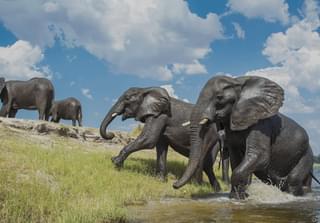
5. Zimbabwe
Zimbabwe is blessed with some of Africa’s largest game reserves and within these a chance to see the ‘Big Five’ as well as many other African animals and some incredible bird life.
Whilst historically Zimbabwe has had a problem with poaching, this has been turned around. Rhino protection and conservation has increased greatly after a poaching crisis was announced in 2008, and it now holds the fourth largest population of black rhino in Southern Africa. Matobo, a hidden gem, is home to Zimbabwe’s largest free-roaming population of black and white rhino and well worth a visit to see these magnificent animals.
Hwange National Park is Zimbabwe’s largest park and is also located close to Victoria Falls making it easy to combine with some fantastic waterfall activities. Hwange is home to four of the Big Five, but is particularly known for its large population of elephant. It has a varied vegetation of rich open grasslands and dense forest which ensures a wide variety of wildlife, including over 400 species of bird.
Another renowned option is UNESCO-protected Mana Pools which is where the Zambezi River turns into flood plains and fills lakes during the wet season. In the dry season, animals come to these watering holes to drink so it can be a particularly good opportunity to see predators especially lions.
The best spot for seeing rhino in Zimbabwe is the breathtaking Matobos National Park, where these gentle giants of the bush roam sedately on the open plains which are overlooked by towering granite kopjes and ancient bushman rock art sites.
Victoria Falls and Zimbabwe highlights holiday visits both Hwange National Park and Mana Pools, as well as Lake Kariba and Harare. 15 days from £5,154pp including all flights.
If you are particular keen to see Rhino, then this ‘Best of the West ’ combines Victoria Falls and Hwange National Park with Zimbabwe’s hidden gem Matobos. 9 days from £3,125pp including all flights.
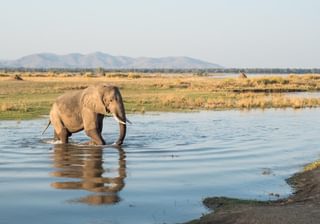
Whilst Namibia is often seen as destination for breath-taking landscapes first and safari as a secondary add on, it holds almost a third of Africa’s black rhino population, as well as elephant, lions, leopards and buffalo to make up the Big Five.
If you are going on safari in Namibia, you will want to head to Etosha national park . In the dry season, lion, elephant and leopard are often seen at the waterholes here and there is the opportunity to see both black and white rhino. The lack of large amounts of permanent water means that buffalo aren’t seen in many of Namibia’s most popular areas such as Etosha, but those searching for the large bovine herds can head to the Caprivi Strip where they can be seen in strong numbers.
Rhino enthusiasts might also want to visit Damaraland to see desert-adapted rhino and even spend time tracking them on foot with rangers from the Save The Rhino Foundation – an amazing experience and one not to be missed.
You might also want to visit Okonjima Game Reserve which is well known for its cheetah and leopard safaris. The AfriCat foundation rehabilitates cheetah, wild dog, hyena and leopard, giving you a unique chance to get up close to these amazing animals.
Most people who visit Namibia will choose to self-drive, allowing themselves to explore the country at their own pace. You can then choose to either self-drive in Etosha or to hire a guide which has the advantage that they will often know where animals are likely to be and can share their expert knowledge with you.
This classic Namibia self-drive will take you to Etosha, Damaraland and Okonjima for wildlife viewing, as well as to the famous dunes of Sossusvlei and the skeleton coast. 12 nights from £2,945pp including international flights.
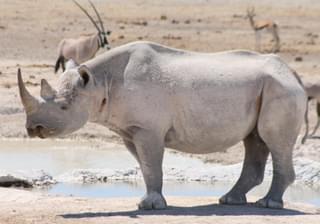
For more tips on planning a safari check out our ultimate safari guide or our top family safari holidays.
More on the Big Five
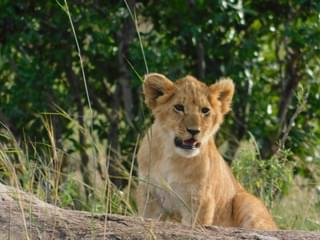
Lion ( Panthera leo )
Lions are apex predators and commonly live in prides that range from 3 to 20, or occasionally more, individuals. The females, lionesses, are the main hunters, whilst males defend the pride’s territory and females from other rival lions.
FACT – Lions spend a lot of their time resting and are active for as little as 2-6 hours a day!
FOUND – In a wide range of habitats including deserts, grasslands and forests
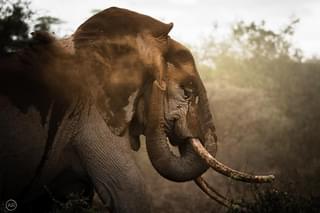
African Elephant ( Loxodonta africana )
The largest terrestrial mammal on Earth, elephants are incredibly sociable and live in matriarchal herds, headed by an adult female. They are nomadic animals, moving in search of food and water and can communicate over large distances through subsonic sound.
FACT – Elephant pregnancies last for 22 months - the longest of all mammals.
FOUND - In a wide range of habitats including deserts, grasslands and forests.
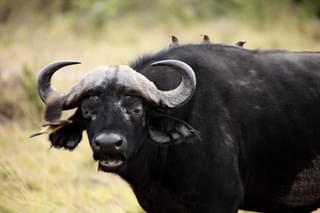
Buffalo ( Syncerus caffer)
The African buffalo is a large animal that can reach 1.45 metres in height, 2.9 to 3.4 metres in length and males weigh up to about 800 Kg. They are a very protective species and will often aggressively defend members of the herd from predators.
FACT – Adult males can be recognised by heavier horns that join across the head in a large boss.
FOUND – In grassland areas with access to water and ideally shade.
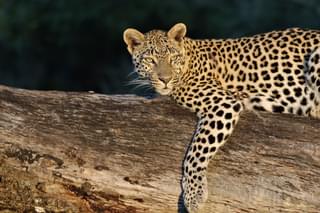
Leopard ( Panthera pardus )
Leopards are solitary and territorial predators. Most active at night, they use their remarkable camouflage and stealth to stalk their prey. Kills are often stored for days and taken up trees when there are many scavengers around.
FACT - The leopard has a rasping call that sounds like a plank of wood being cut by a coarse saw.
FOUND – Very adaptable; usually rocky terrain or forests, with good cover for shelter and hunting.
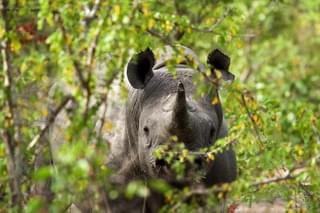
Black Rhinoceros ( Diceros bicornis )
A critically endangered and quite shy species. Adults weigh between 800-1400kg, black rhinos are browsers, eating leaves from short trees, using their hooked lip. They are smaller than white rhinos, with shorter heads, rounder ears and their two horns are more similar in length.
FACT – Black rhino dung can be identified by plant material that is neatly snipped at a 45 o angle.
FOUND – Prefers woodland or dense undergrowth near permanent water, but also occurs in arid areas.

White Rhinoceros ( Ceratotherium simum )
White rhinos are near threatened, with just over 10,000 individuals remaining in 2020. Their name does not come from their colour, but likely the Afrikaans word ‘Weit’, meaning wide, which describes their broad muzzle, designed for grazing grasses. Adults commonly weigh between 1,800-2,500kg.
FACT – A group of rhinos is called a Crash.
FOUND - In open grasslands with a nearby water source and some thick cover.
If you’d like to arrange a ‘Big Five’ safari, then give our safari experts a call today on 01768 305715 or fill in our enquiry form . Every holiday we make it tailored to your requirements and created from scratch so we can create the perfect safari for you, or for more inspiration, take a look at our 26 best safari holiday ideas.
Our Favourite Tailor Made Africa Holidays
Popular Holiday Ideas
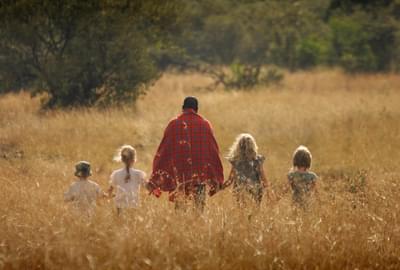
Classic Kenya Family Safari & Beach Holiday
- Diani Beach
- £5870 PP
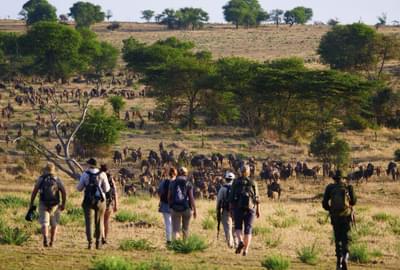
Walk, Mountain Bike & Drive Northern Tanzania
- £5495 PP

Luxury Masai Mara Safari & Zanzibar Honeymoon
- £3245 PP
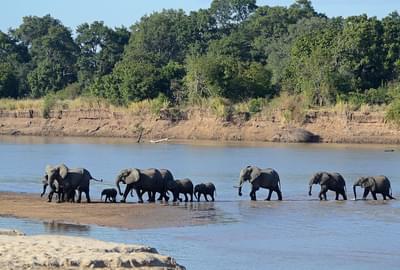
Luangwa and Lake Safari Adventure
- South Luangwa
- Lake Malawi
- £4945 PP

Rwanda Gorillas, Primates, & Landscapes
- Volcanoes NP
- £6075 PP
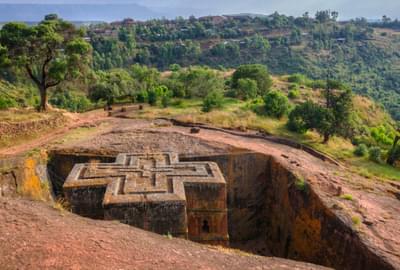
Historical Ethiopia
- Addis Ababa
- Simien Mountains
- £3515 PP
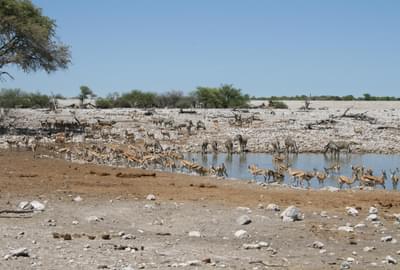
Classic Namibia Self-Drive
- £4715 PP
Speak to a safari expert
Create your perfect holiday

Africa Specialist

Call an expert on
01768 603 715
Far & Wild Customer Reviews
I've already recommended Far and Wild to a couple of friends
Paula travelled to South Africa in December 2023 on a trip organised by Alistair .
A dream to visit Mum's birth place!
Christine travelled to St Helena Holidays and South Africa in December 2023 on a trip organised by .
Adventure of a Lifetime in Kenya
Maria travelled to Masai Mara Safari in October 2023 on a trip organised by Ben .
100% value for money
Adam travelled to Kenya in January 2024 on a trip organised by Ruth .
I didn't realise my high expectations could be so easily exceeded
Hannah and Elaine travelled to Kenya in November 2023 on a trip organised by .
It was SO NICE to have someone else do it for me.
Cathy travelled to Tanzania and Zanzibar in December 2023 on a trip organised by Alistair .
CONTINUE READING...
More Blogs You Might Enjoy
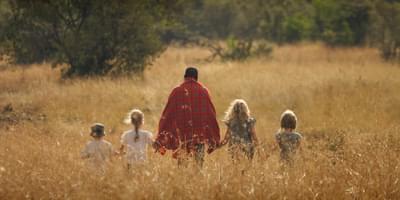
Best Family Safari Holidays 2024/25
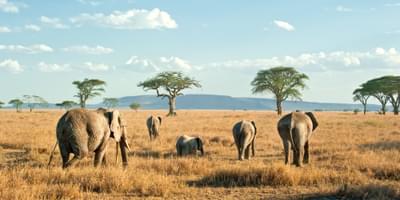
Where to go on your first safari?
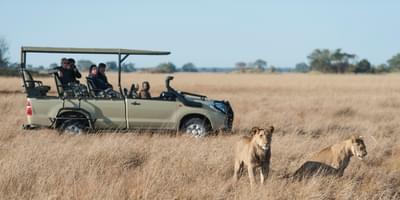
Where to go on safari 2024/25
Plan with an expert.
Have a look at our original holiday experiences and then contact us with your brief, or call 01768 603 715
A tailor-made itinerary just for you
Our experts will send you a detailed holiday itinerary specified to your desires. It's our service promise to you.
Value guarantee
Tailor-made doesn't mean expensive! Ask about our price promise and book with financial security.
Thank you for making an enquiry
Our travel experts will be in touch soon. Feel free to call us on 01768 603 715.
Start planning your next adventure
Give us a call on 01768 603 715 , chat with an expert instantly on WhatsApp or fill in the form below and we’ll be in touch.
Tell us about you...
Tell us about your trip….
Please enter your comments.
safari experts, since 1991
See how we earn 5 stars
Big 5 safaris
Safari experiences that you will not find with any other travel company. We know Africa best and will get you to the right place & time to enjoy the greatest shows on Earth!
Go on a Big 5 safari
Seeing lions, leopards, elephants, Cape buffalos & black or white rhinos is always a special experience, and many destinations offer the opportunity to tick the Big 5 off your list with ease. However, experienced safari travellers also tend to focus on other species such as cheetahs, wild dogs and pangolins and on experienced-based safaris such as animal migrations, bird-watching, cultural learnings, spending time in remote wilderness areas and rewilding projects.
Scroll past the safari packages below to find out EVERYTHING YOU NEED TO KNOW about Big 5 safaris.
The safaris below are to areas that host the Big 5
Everything you need to know about big 5 safaris.
Few sounds are as evocative and exhilarating as a lion roaring his challenge into the African night, triggering in us all a primordial reaction of fear and awe. Lions are essential players in Africa's wild spaces, ruthlessly executing the role of an apex predator, helping maintain biodiversity and ecosystems, which change fundamentally when lions are removed from them. READ MORE about lions here .
Breathtakingly beautiful, charismatic, powerful, and mysterious, leopards are the picture of perfection. Their self-contained grace and nimble frames belie an extraordinary explosive strength and speed when needed. Those who have spent time with leopards will tell you that every leopard sighting is unique – defined by the personality of the leopard itself. The only truly predictable aspect of leopard behaviour is its unpredictability. READ MORE about leopards here.
The African elephant is the largest land mammal in the world and one of nature’s great ecosystem engineers, contributing to maintaining the balance between wooded and grass ecosystems. Their beneficial impact on biodiversity is significant, and many other species depend on elephants for their survival - making them a key species in Africa. Elephants are fascinating and endearing - time spent with them nurtures your spiritual health and well-being. READ 17 elephant facts you need to know.
The African (Cape) buffalo has earned itself a reputation, particularly for the cantankerous old bulls, otherwise known as dagga boys or kakuli , that spend their time wallowing in pans or hanging around in dense reedbeds along Africa’s rivers. Immense and powerful, the buffalo should not be underestimated - as many lions have discovered. Don’t be fooled if your only experience of them is from the safety of a game drive vehicle, which perspective makes them look like wild cows. READ MORE about buffaloes here.
These magnificent creatures are as crucial for African biodiversity as elephants and lions, and each encounter with them is special and to be cherished. White and black rhinos have very distinct behavioural reputations. The larger white rhinos are seen as more placid, while black rhinos are often described as solitary, unpredictable, and even cantankerous. READ MORE about rhinos here.
Your best chance of seeing all of the Big 5 is to combine two or more places in your safari itinerary. But if you hope to see all of the Big 5 in one reserve , then our safari experts will focus on the following when they compile your dream safari:
South Africa
South Africa has the most reliable Big Five areas, including Kruger National Park and the private reserves making up the adjacent Greater Kruger - including Timbavati , Sabi Sand , Klaserie , Balule , Thornybush and Manyeleti . The malaria-free Madikwe is also an excellent Big 5 reserve. Private reserves in the Eastern Cape (Greater Addo region) and KwaZulula Natal (Phinda region) also offer excellent Big 5 experiences. In addition, there are many smaller fenced reserves throughout the country that offer Big 5 experiences, and our team of safari experts will advise on the experience at each.
Kenya and Tanzania
The Maasai Mara in Kenya and adjacent Serengeti in Tanzania offer East Africa’s most reliable sources of Big 5 encounters, with rhinos being the hardest to track down. Laikipia in Kenya and Tanzania’s Ngorongoro Crater are good places to find the Big 5.
North Luangwa is the one place in Zambia where it is possible to spot the Big 5.
Finding all of the Big 5 in one place in Botswana can be a challenge because of the scarcity of rhinos, with the Okavango Delta and Moremi being the best places.
To find the Big 5 in one game reserve or national park, chat with our safari experts , who will design a wonderful safari package to suit your needs.
Many countries and regions offer the opportunity to spot the Big 5 in two or more places. For example, in Zimbabwe, you are likely to see rhinos in a private game reserve near Victoria Falls and then find the remaining Big Five species in nearby Hwange . In Botswana, you will increase your chances of ticking off the Big 5 if you visit Khama Rhino Sanctuary before or after the rest of your safari. In Namibia, you are likely to tick off rhinos, lions, leopards and elephants in Etosha, but you will need to head to the east of the country to find Buffaloes. In Kenya, if you visit Lake Nakuru before or after your Maasai Mara safari you will increase your chances of ticking off the Big 5.
To find the Big 5 in your multi-stop itinerary, chat with our safari experts , who will design a wonderful safari package to suit your needs.
Depending on the place and time of year, black rhinos are usually the most difficult of the Big Five to find - they are very rare and known to hang around in dense vegetation. Leopards are next in line for being elusive, followed by buffaloes (which travel big distances in pursuit of reliable grazing and water), lions (which often follow the buffaloes), white rhinos (usually easy to find if they occur in that area) and finally elephants (the easiest of the Big 5 to find).
Yes, we only use lodges and guides that enforce the necessary safeguards while you are on safari.
Most of the time, your encounters with the Big Five and other dangerous species, such as hippos and crocodiles, will be while on a game drive . Wild animals tend to ignore game drive vehicles if the guides drive responsibly, and even if you get really close to large animals, guides will make sure that their driving does not invoke an aggressive reaction, even though wild animals can be unpredictable.
While on a walking safari , your guides will be extremely vigilant about established safety procedures. The chance of encountering dangerous animals (which will be given a wide berth) is far less than during a game drive.
While walking around the immediate vicinity of your lodge (which may be unfenced), it is very important to obey the safety instructions explained to you by the lodge manager. These include not walking too far from the lodge during the daylight hours, not walking around during the dark hours and asking for an escort while walking between your room and the common area during the dark hours.

We live here, in Africa, and have been doing this since 1991. Travel in Africa is about knowing when and where to go, and with whom. A few weeks too early / late or a few kilometers off course and you could miss the greatest show on Earth. And wouldn’t that be a pity?

Trust & Safety
We are members of: African Travel & Tourism Association (ATTA) Southern African Tourism Services Association (SATSA) ✔️ Have Integrity ✔️ Are Legitimate ✔️ Are Audited ✔️ Are Insured
We are insured by Sutcliffe & Co (UK)
See what travellers say about us
Make a difference
Africa Geographic is about TRAVEL and CONSERVATION – for those who want their safaris and donations to make a real difference – in Africa.
Our MANIFESTO explains how you can help us do good.
Mini-Guide to Puffins now available BUY IT HERE
Meandering Wild
The “Big 5” safari animals
The Big 5 are the most popular animals that those booking an African Safari want to encounter. While there are many more animals and birds to find on safari the African elephant, Cape buffalo, lion, black rhino and leopard are top of many lists.

what are the Big 5 in safari?
The term ‘Big 5’ was first introduced in the late 1800s by big-game hunters to refer to the creatures that were the hardest to hunt on foot, but over time this has evolved to describe the big game that many photographers and tourists aim to see on their safari trips. Whether you choose a safari holiday with Naturetrek , an expedition into the Nyungwe Forest National Park of Rwanda or a small intimate hike into the Kalahari in Botswana , you will hope to see some if not all of the big 5.
Big 5 and conservation
The big 5 today are more of a target for safari travellers and the move from trophy hunting to tourism has meant that they are now protected in National Parks and game reserves where the focus is moving towards conservation, sustainability and photography.
All of the species on the Big 5 list are decreasing in population. This is mainly due to the loss of habitat and the encroachment of villages and towns into their landscape. Choosing an ethical and sustainably focused safari company is becoming more important than ever before.
Where can you find the Big 5 on safari?
The Big 5 can be found across southern Africa with wildlife being found in Angola, Botswana, Eswatini, Democratic Republic of Congo, Kenya, Malawi, Mozambique, Namibia, Rwanda, South Africa, Tanzania, Uganda, Zambia and Zimbabwe

The African lion ( Panthera leo ) is the largest of the cats found in Africa weighing up to 225kg. They live in groups called prides with up to 40 lions. This includes males and females as well as young cubs. Lions are very territorial and do not stray far from their home range.
The lion is an apex predator and will hunt larger animals including buffalo, zebra, giraffe, antelope and rhino. The females do most of the hunting but will share with the males of the pride.
They prefer grassland and savanna as well as woodland. The best places to see them are Kgalagadi Transfrontier Park in South Africa, Maasai Mara National Reserve in Kenya, Okavango Delta in Botswana and Ngorongoro Conservation Area in Tanzania.
- African elephant

The African elephant ( Loxodonta africana ) is the largest and heaviest land animal in the world, weighing around 6000kg. They are best known for their long dexterous trunk and large ears. Their large ears cool the body when flapped. They have elongated incisors that form their large tusks and are sought after by poachers.
Elephants are herbivores that need to eat up to 160kg of plants each day. Their diet includes grasses, leaves from bushes, fruits, tree bark and roots.
Mothers and young elephants tend to live in herds which are often seen around deltas and waterholes while the bull elephants are more solitary, often spending time with other males in smaller groups.
The best places to see African elephants are Addo Elephant Park in South Africa, Chobe National Park in Botswana, Etosha National Park in Namibia and South Luangwa National Park in Zambia
- Cape Buffalo

The cape buffalo ( Syncerus caffer ) can be found in herds grazing across the grasslands wherever there is easy access to water. These are unpredictable animals and when alarmed can stampede making them dangerous. When not alarmed they are docile and the herd will be content to graze.
They eat a range of leaves and grasses that are native to the savanna and floodplains and they will have an area that they will cover. The size of the area will be determined by the herd size and availability of water and food.
The best places to see cape buffalo are Chobe National Park in Botswana, Kruger National Park in South Africa and the Lower Zambezi National Park in Zambia.
- Black rhino

While the black rhino is on the list, there are two species of rhino in southern Africa, the black rhino ( Diceros bicornis ) and the white rhino ( Ceratotherium simum ). Both have been hunted to the edge of extinction making them the hardest of the Big Five to find. The white rhino has seen an increase in numbers through conservation programmes but the black rhino is still endangered.
The main difference between the two species is the size and shape of the mouth. The white rhino has a wide, flat mouth and its name is derived from the Afrikaans word ‘wijd’ which means ‘wide’.
The rhino is a herbivore and will eat a range of twigs, grasses, leaves and fruits that can be found in the rainforests, grassy plains and swamps where they make their home.
The best places to find the rhinoceros in Africa are Etosha National Park in Namibia, Lewa Wildlife Conservancy in Kenya, Kruger National Park in South Africa and Mkomazi National Park in Tanzania. They can also be found throughout Asia.

Leopards are slightly smaller than the more obvious lions. Their camouflage and nocturnal habits mean that they are often harder to find during daylight hours. The leopard is solitary and will only be seen with another adult during the breeding season and a female with her cubs.
The leopard is a carnivore and will hunt much larger prey including jackals, eland, wildebeest and antelope. They will often hunt at night and take the prey up into the trees to eat away from prying eyes.
Leopards can be found in more places than other big cats and are found outside of the national parks, unlike other members of the Big Five list. They are best seen in Samburu National Reserve in Kenya and Moremi Game Reserve in Botswana as well as Londolozi Game Reserve in South Africa and South Luangwa National Park in Zambia.
What are The Big 6?
The list of wildlife to encounter on safari is endless and most people who head out on safari want to see more than the Big 5. For many people, the giraffe should be included in the list. This elegant mammal for many is symbolic of safari and they are certainly one of the more unique animals that people hope to find on their safari trip.
What are the small 5 in Africa?
While everyone knows about the ‘Big Five’, the small five or little five are much smaller creatures that share their name with the Big 5. These are found across the National Parks and are in some ways much harder to find, giving a much bigger sense of achievement when you encounter them. The small five are the elephant shrew, buffalo weaver, leopard tortoise, ant lion and rhino beetle.
Who are the ugly 5 of Africa?
Remember that everyone is beautiful in their own way! However, there are some African animals that have a long way to go to be beautiful. The ugly 5 of Africa are the warthog, wildebeest, vulture, marabou stork and the hyena. These are found all over southern Africa and are probably some of the most common
What is the Shy 5 of Africa?
This small group of animals are the shy animals as sightings are rare and many people will go on safari and never encounter them. The list includes the porcupine, bat-eared fox, aardvark, meerkat and the aardwolf. Four of the five are nocturnal meaning encounters are even more unlikely. the best places to see these five animals are Tswalu Kalahari Reserve and Samara Game Reserve in South Africa.
Big 5 of Africa
Ugly 5 of africa.
- Marabou stork
Small 5 of Africa
- Elephant shrew
- Buffalo weaver
- Leopard tortoise
- Rhino beetle
Shy 5 of Africa
- Bat-eared fox
I'm Suzanne the traveller and photographer behind Meandering Wild. With over 30 years of experience travelling to different corners of the world in search of wildlife and remote locations nearly all of the advice on this website is from my own exploring.
TOP DESTINATIONS
- Kruger Park
- Okavango Delta
- Serengeti National Park
- Victoria Falls
TOP COUNTRIES
- South Africa
TRAVEL DEALS
View All Travel Deals
SOUTHERN AFRICA
East africa, indian ocean islands, top experiences.
- Beach Holidays
- Family Safaris
- Honeymoon Safaris
- Desert Safaris
- Luxury Rail Safaris
- Multi-Generational Safaris
- Positive Impact Safaris
- Photographic Safaris
- Walking Safaris
WILDLIFE SAFARI
- Big Five Safaris
- Birding Safaris
- Gorilla Trekking Safaris
- Migration Safaris
- Mobile Camping Safaris
- Horseback Safaris

FEATURED EXPERIENCES
Comfort levels, property types.
- Tented Camps
- Boutique Hotels
Featured Safari Collections
- Red Carnation
- Newmark Hotels
- Ker & Downey Botswana
- Great Plains
- Saruni Basecamp
GET TO KNOW US
- Meet The Team
- Pricing Explained
- Traveller Reviews
- Traveller Stories
- Why Book With Us?
- HerdTracker
- Safari Cost Calculator
- South Africa In 360
- Trusted Safari Partners
What are you looking for?
- Safaris & Tours
- Destinations
- Experiences
- Accommodations
- Why book with us?
Hello traveller!
It's in Cape Town now.
We're sorry. Our safari planners aren't available now. Our office hours are 08:00 - 19:00 (GMT+2).
Call us to speak to an experienced safari planner.
Alternatively, we recommend...
Schedule a phone or Zoom call with one of our safari planners
Complete our travel enquiry form to connect with a safari planner
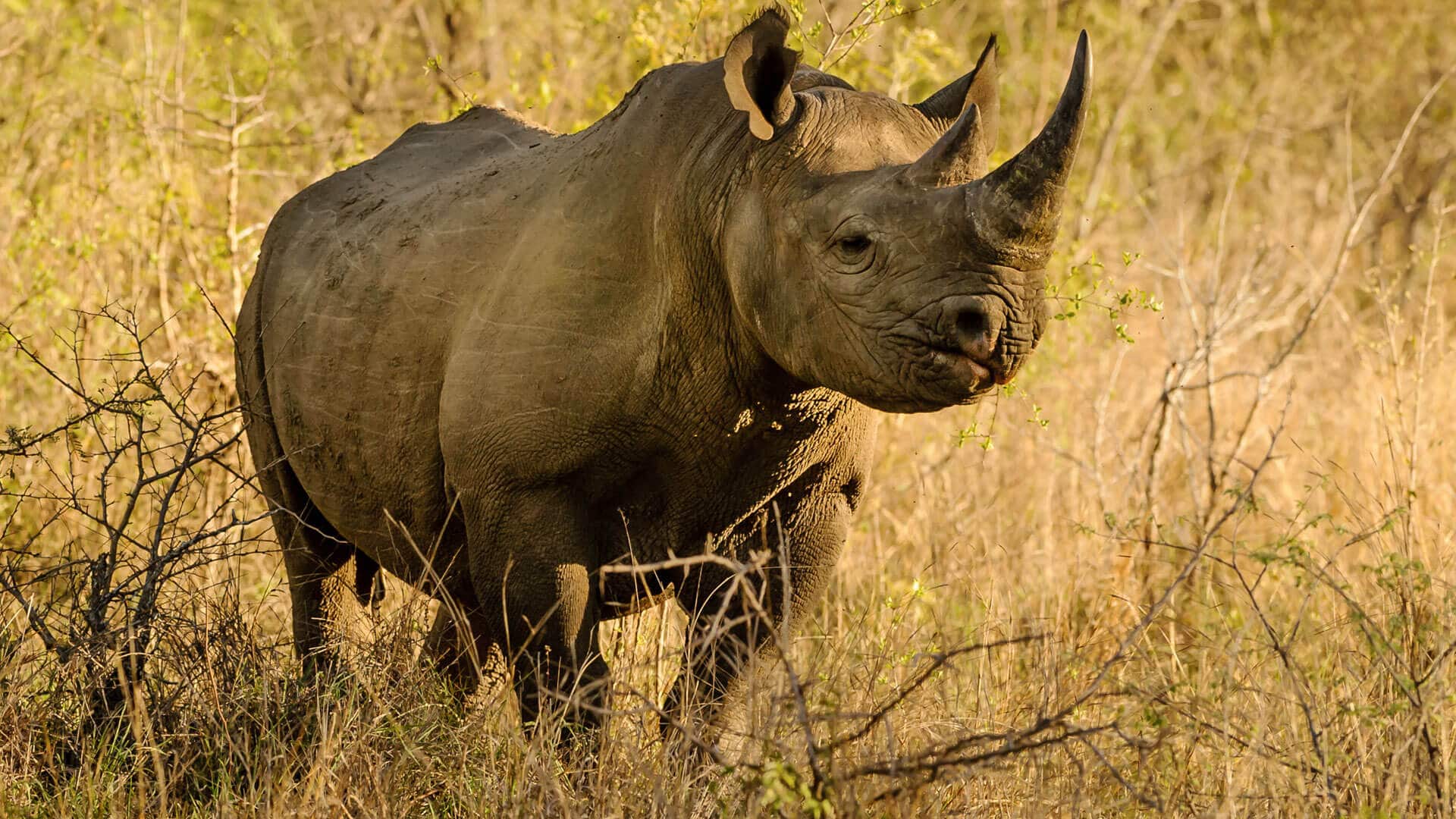
10 of the Best Places for Taking a Big Five Safari in Africa

Author: Matthys van Aswegen - 26 April 2023
Last Update: 20 February 2024
Part of the African Safari Collection
Looking for an unforgettable experience? Embark on a Big Five Safari in Africa and see some of the world’s most majestic wildlife.
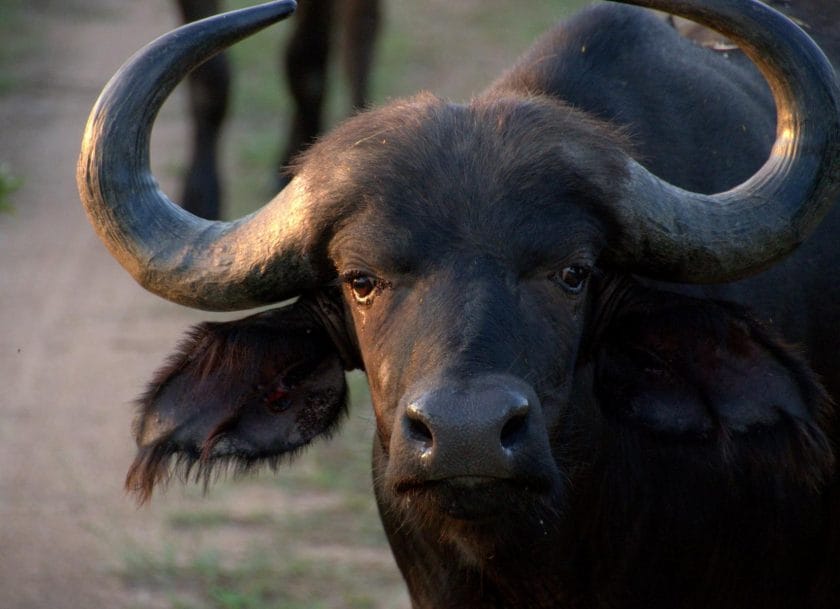
From classic game reserves to hidden gems, here are 10 of the best places where you can have a truly once-in-a-lifetime safari adventure. Watch lions, elephants, rhinos, leopards and buffalos thrive in their natural habitats as they roam free.
An Overview of Big Five Safari Experience in Africa
The term “Big Five” refers to the five most iconic animals to spot in their natural habitat: the lion, leopard, elephant, buffalo, and rhino.
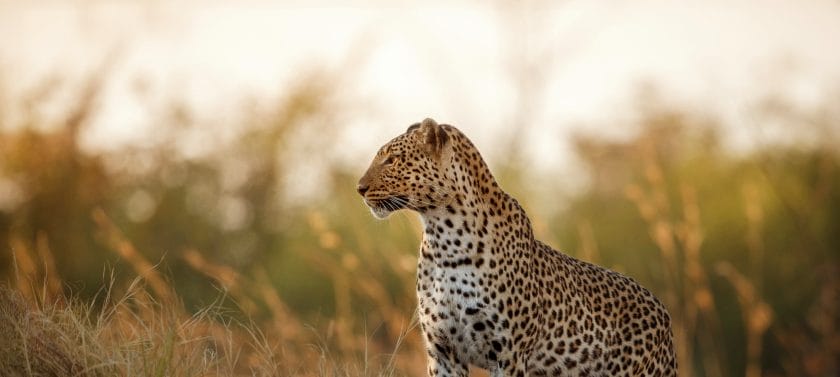
By venturing into the heart of the African bush, visitors not only have the chance to encounter the Big Five, but they may also spot some of Africa’s other wondrous creatures, including giraffes, zebras, and cheetahs. With its vast and diverse ecosystems, Africa is a haven for wildlife, and a Big Five safari is an unforgettable way to experience it.
The 10 Best Places for Taking a Big Five Safari in Africa
Masai Mara National Reserve, Kenya
The reserve is located in southwestern Kenya and covers an area of approximately 1,510 square kilometers. It’s named after the Maasai people who have lived in the region for centuries.
The Masai Mara Reserve is known for its stunning landscapes, diverse wildlife, and cultural heritage. Visitors can enjoy game drives and spot animals like lions, cheetahs, and wildebeest, which migrate to the reserve every year.
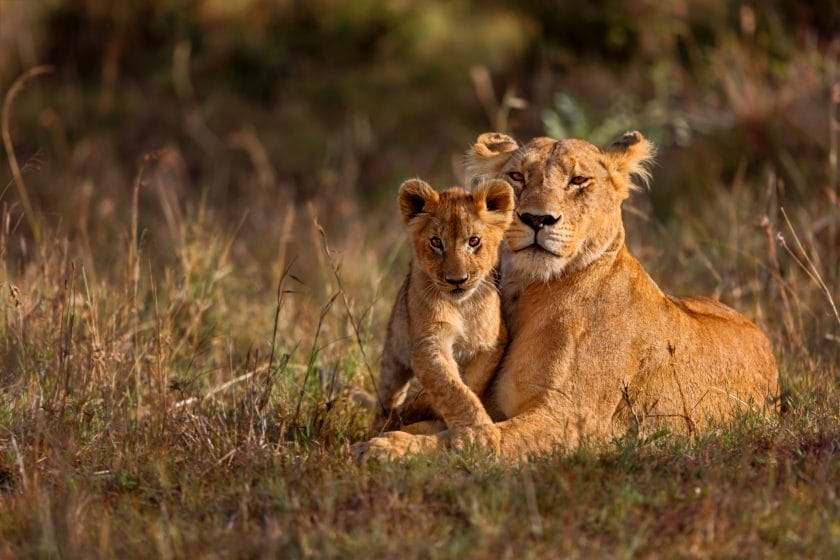
The reserve is also home to over 500 bird species, making it a birdwatcher’s paradise. The Masai culture is also a highlight of the reserve, and visitors can learn about their traditions and customs, including their unique dressing style and way of life.
Serengeti National Park, Tanzania
Encompassing an area of 5,700 square miles, Serengeti National Park boasts an impressive variety of flora and fauna, including the ‘Big Five’. Its vast plains, rocky outcroppings, and rolling hills are home to over 500 species of birds and some of the most spectacular animal migrations on the planet.
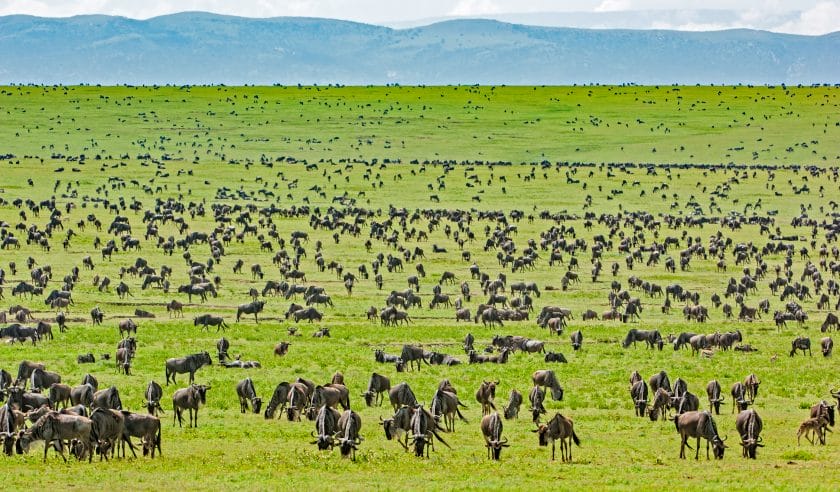
Visitors can hop on a safari vehicle or a hot air balloon and witness the Great Migration herds of wildebeest, zebras, and gazelles grazing on the grasslands. The park also offers opportunities for cultural experiences with local Maasai tribes, adding an extra layer of authenticity to an already remarkable adventure.
Ngorongoro Conservation Area, Tanzania
From its lush forests to its vast grasslands, this region is home to an astonishing array of wildlife, making it a must-see destination. Visitors can witness wildebeest, zebras, and gazelles roaming free in the savannahs, and can even catch a glimpse of the elusive black rhino.
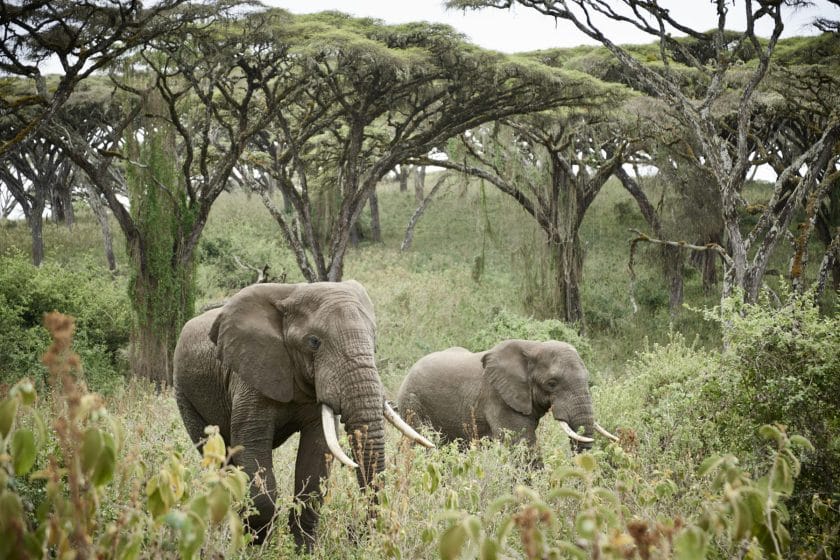
The Ngorongoro Conservation Area also boasts an array of breathtaking landmarks such as the Ngorongoro Crater, a massive volcanic caldera that spans over 600 meters and fosters some of the largest concentrations of wildlife in Africa. This area offers one of the best Big Five safari tours in Africa .
Kruger National Park, South Africa
Spanning over 19,000 square kilometers, the Kruger National Park is home to an abundance of wildlife, including the famous Big Five . Visitors to the park can embark on guided safaris, self-drive expeditions, or even walking tours.
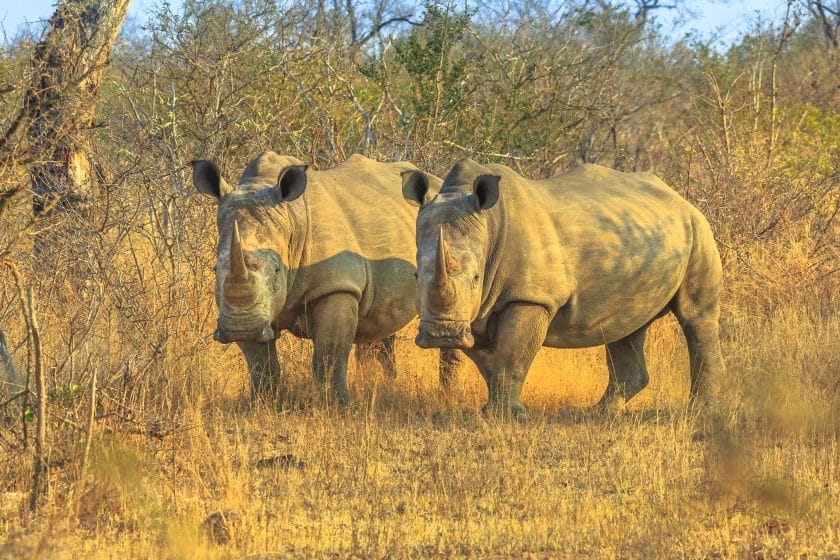
The park is also a conservation success story, with concerted efforts to protect endangered species, such as the African wild dog and black rhino.
Chobe National Park, Botswana
Covering an area of over 11,000 square kilometers, Chobe National Park is home to the largest concentration of elephants in Africa along with a diverse array of other animals such as lions, leopards, hyenas, buffalos, and a multitude of bird species.
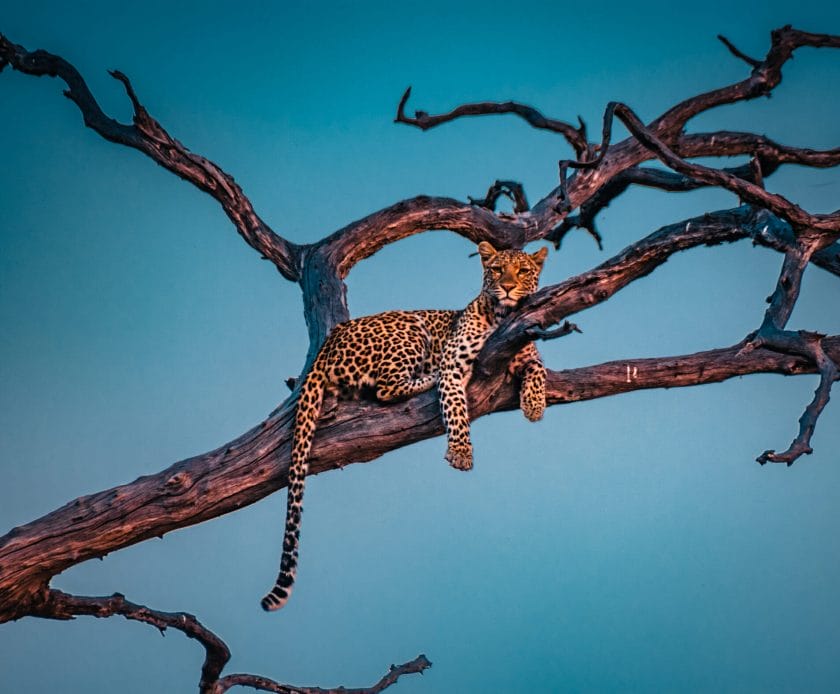
The park’s riverfront also offers breathtaking views of the Chobe River , where visitors can witness large herds of elephants coming down to quench their thirst or watch the spectacular scenery while cruising on a river safari.
Addo Elephant National Park, South Africa
Established in 1931, the park has grown to become one of the country’s most popular wildlife conservation parks, with an impressive population of more than 600 elephants.
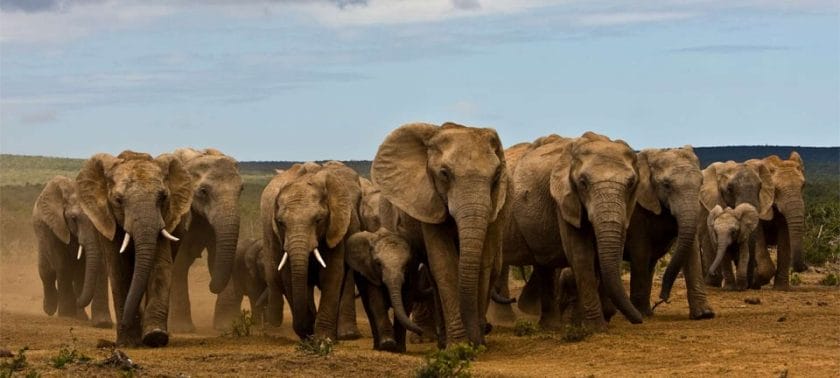
Additionally, visitors can enjoy the sight of buffalo, various antelopes, and even the rare black rhino. The park also offers a diverse range of landscapes, from dense forests to vast valleys, making it a perfect setting for camping, hiking, and game drives.

Whether you’re an avid photographer, researcher or just curious about the conservation of wildlife, this park is the perfect destination to experience the biological wealth and beauty of South Africa .
Etosha National Park, Namibia
Etosha National Park holds an impressive variety of wildlife, including more than 100 species of mammals, such as elephants, giraffes, lions, and rhinos. The landscape of the park is breathtaking and spans over 22,000 square kilometers, including vast salt pans and savannah plains.
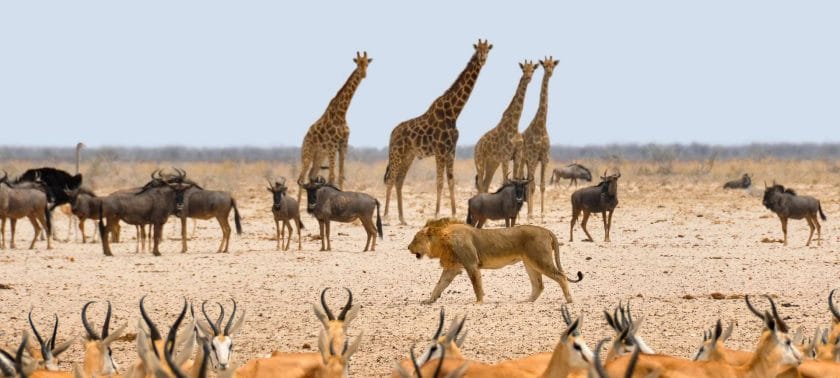
Visitors can enjoy self-drive tours or guided game drives through the park, as well as overnight stays at various lodges located inside the park.
Hwange National Park, Zimbabwe
Covering an area of approximately 14,650 square kilometers, the park is teeming with diverse wildlife, including elephants, lions, giraffes, and zebras. It’s not just the wildlife that draws visitors; Hwange National Park also boasts stunning landscapes, ranging from sandy dunes to open savannah.
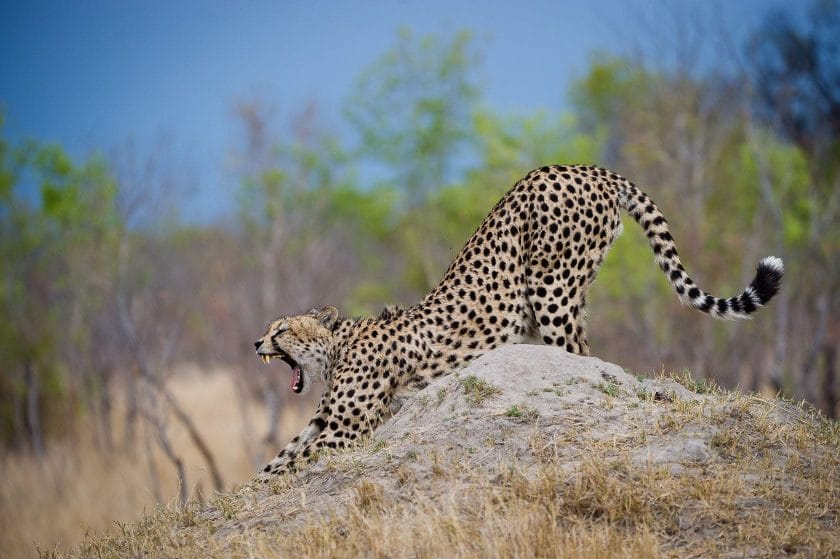
For those interested in bird watching, the park is home to over 400 species of birds. The best time to visit is during the dry season, which runs from July to October, as it presents the best game viewing opportunities.
Akagera National Park, Rwanda
Spanning over 1,100 square kilometers, Akagera National Park is home to diverse ecosystems ranging from wetlands to savannahs, harboring an abundance of flora and fauna.
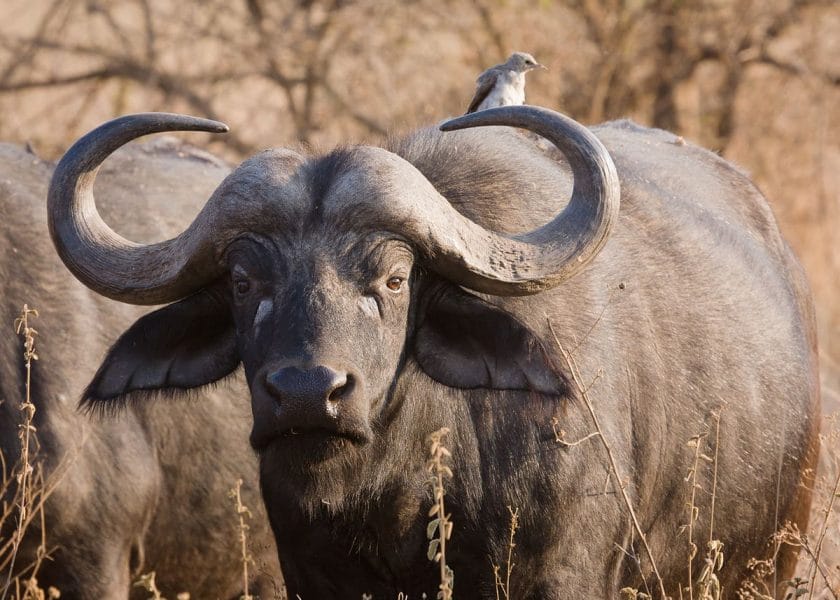
A guided safari across the park’s sprawling terrain offers visitors a chance to catch a glimpse of majestic elephants, crafty hyenas, and agile antelopes. The picturesque Lake Ihema, which runs through the park, is also the perfect spot for bird-watching, with over 500 species of birds inhabiting the park.
Murchison Falls National Park, Uganda
Located in the northern region of the country, the park is named after the jaw-dropping Murchison Falls, which is a stunning 141-foot waterfall that cascades into the Nile River.
But the falls are not the only attraction at this park. Visitors can also experience lush savannah grasslands, sparkling river waters, and dense forests, which are home to a vast array of wildlife.
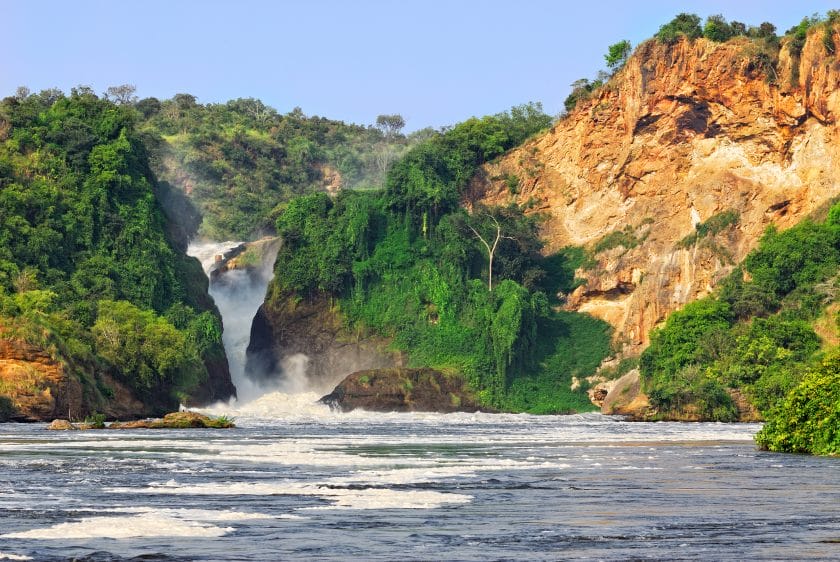
From elephants and giraffes to lions and hippos, this park is brimming with some of Africa’s most captivating creatures. And for those seeking adventure, Murchison Falls National Park also offers activities like guided hikes, game drives, and even river cruises.
The Conservation Success Story of Botswana
The Top 10 Best Okavango Delta Lodges in Botswana
Why travel with us?
Recent reviews from travellers who planned and booked their africa trips with discover africa safaris, professional, knowledgeable, met all of our expectations resulting in a memorable experience.
4 Day Okavango Delta Safari Review
Brian Evans, South Africa 27 Mar 2023
Adelle is super friendly, understanding, and takes the accommodation bar to the....
An Authentic Honeymoon Experience
Tate, United States 22 Oct 2022
Discover africa absolutely exceeded our expectations and made a long and complex....
Botswana, Namibia and Tanzania Safari Review
Teresa Sicade, United States 10 Oct 2022
Excellent customer service, brilliant tours, exceptional client journey.
Southern Africa Safari Review
Dolly, United Kingdom 10 Jan 2022
Perfectly tailormade tour taking all our wishes and requests into consideration..
Namibia and Botswana Review
Henrik Wetterstrand, Sweden 05 Apr 2018
A most memorable adventure..
The Amazing South African Adventure Review
Margery, United States 04 Jul 2016
Registered Members of these Organizations
USEFUL LINKS
- African Safaris
- African Safari Tours
- African Safari Lodges
- Why Book with us?
- Content Collaborations
- Safari Cost Estimator Tool
- Wildebeest Migration
- Privacy Policy
- Website Terms of Use
POPULAR COUNTRIES
- View All Countries
- South Africa Safaris
- Botswana Safaris
- Kenya Safaris
- Tanzania Safaris
- Namibia Safaris
- Rwanda Safaris
- Uganda Safaris
- Zambia Safaris
- Zimbabwe Safaris
POPULAR DESTINATIONS
- View All Destinations
- Cape Town Holidays
- Kruger Safaris
- Victoria Falls Safaris
- Masai Mara Safaris
- Serengeti Safaris
- Etosha Safaris
- Chobe Safaris
- Okavango Delta Safaris
TRAVEL BLOGS
- FastJet Adds Surcharge to Vic Falls Route
- A Seasonal Guide to Honeymoon Safaris in Africa
- A Family Safari Guide to Health and Wellness
- WTM Africa 2024: Increased Global Interest and Sustainable Tourism Focus
- 10 Birds to Spot while on Safari in Tanzania
DISCOVER AFRICA SAFARIS
- 2nd floor, Tygervalley Chambers One, 27 Willie van Schoor Avenue, Bellville, Cape Town , 7530
Change location
- UK / International
- Call toll-free from 9am EDT 617-223-4521 617-223-4300 or
- REQUEST A QUOTE
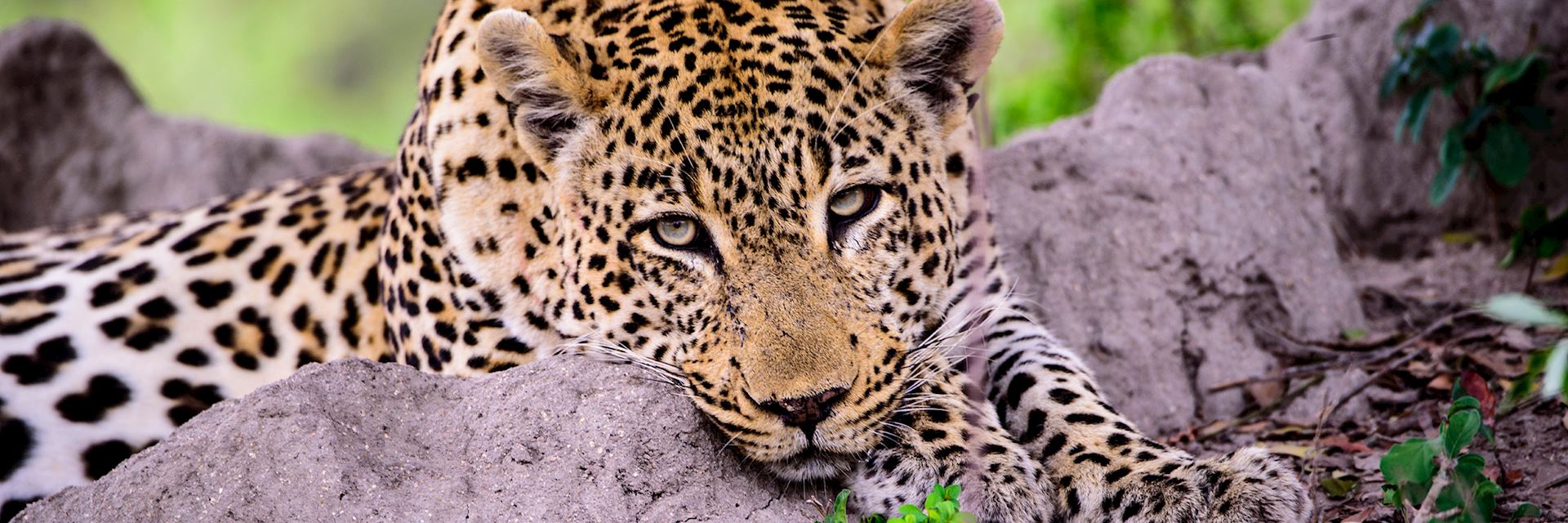
Big Five safaris
Lion, leopard, elephant, rhino and Cape buffalo — the Big Five are among the most sought-after animals to encounter on an African safari. While some are widespread, others, such as rhino, are dwindling in number and often require local know-how to find (along with a pinch of good luck). There are only a few areas in Africa where you have a chance of seeing all five animals on one trip, and each one offers a different safari experience. Our safari specialists discuss the options, and the best ways to see the Big Five during your safari.

Start planning your tailor-made trip by contacting one of our safari specialists
- 617-223-4521 617-223-4300
- Make an inquiry
Big Five safari itinerary ideas
Our itinerary ideas can be as tailored as you’d like around your particular interests. These selected suggestions will give you some inspiration, but treat them just as a starting point because for your own trip will be created uniquely for you.

Botswana's Okavango Delta & Victoria Falls safari
10 days from $11,985pp
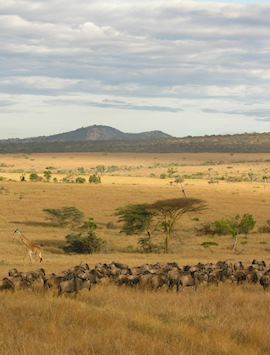
Classic northern Tanzania safari
7 days from $8,200pp

Mara & Mahé explorer
13 days from $8,375pp
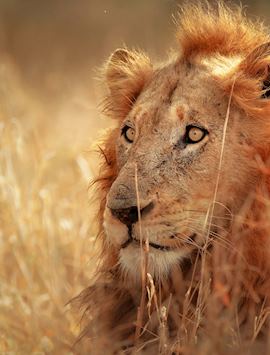
Kruger safari & Mozambique explorer
10 days from $15,775pp
South Africa’s Greater Kruger for your best chance to see the Big Five
The Greater Kruger National Park is so massive it’s able to support animals in huge numbers. You might see buffalo herds 500 strong and lion prides napping beneath mopane trees. And, the reserves here have been established for a relatively long time, so animals have become accustomed to vehicles. I’ve been on game drives and had leopard come within a few steps, as if we were invisible.
One of the oldest private reserves, Sabi Sands Game Reserve is particularly known for its leopard sightings. In reserves like this, you’re able to drive off road and at night, which gives you a better chance of seeing them at close range and as they switch to hunting mode after dark.
This area of South Africa is well protected and has become a stronghold for rhino. You sometimes encounter them on bush walks — your guide will be expert in looking for tracks and noticing telltale signs of their presence.
White rhino are easier to find than black rhino because they graze on open plains and are generally more docile compared with their shyer relations, which stick to denser thickets.
I’ve encountered all of the Big Five on bush walks here, but exploring on foot tends to focus more on smaller wildlife — insects, birds and reptiles, as well as plant life.
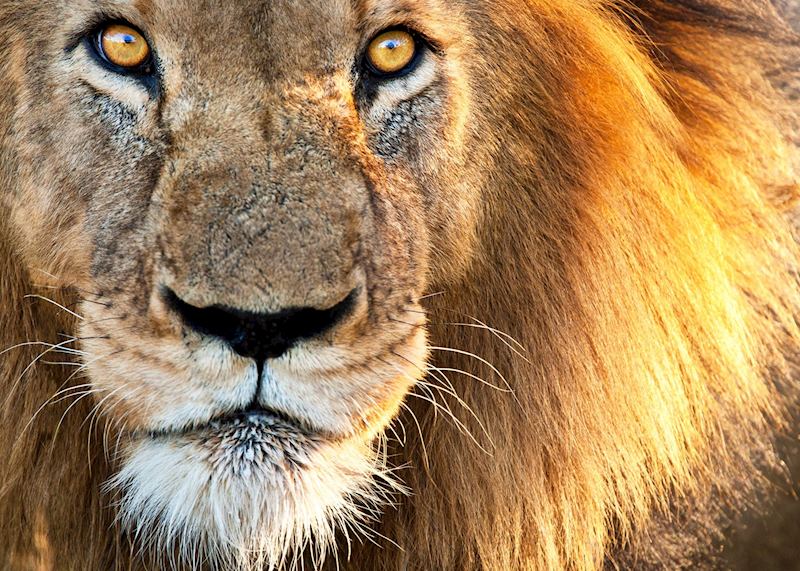
Game drives are normally the best way to track down the Big Five. You’re joined by a guide and a tracker, who know where the animals are likely to be found.
They’re also in radio contact with other vehicles, which keeps you in the loop of any key wildlife encounters while ensuring that no more than three vehicles are present at a sighting.
Other wildlife highlights : It seems like there’s barely an animal that isn’t in the park. Zebra and antelope cover the plains, giraffe nibble the trees, and there are more than 500 bird species. Wild dog are also present, though more difficult to see.
Where to stay : In Sabi Sands Game Reserve, I like Notten’s Bush Camp , a family-run lodge overlooking a waterhole. Your chalet has a private deck, where you can sit and look out across the plains.
When to go : The dry conditions between April and October, when the animals congregate around water sources, make for the best wildlife sightings.

The Big Five with Audley Travel
South Africa is arguably the best place in Africa to see the Big Five: lion, elephant, Cape buffalo, leopard and rhino. In this video, safari specialists Kirsty, Alex and Margaret discuss the country’s best parks and reserves for crossing the animals off your list.
Kenya’s Masai Mara for seeing the Big Five in a classic safari setting
The Masai Mara's variety of habitats suits a wide spectrum of animals — open savannah for grazing buffalo, wildebeest, zebra and antelope, acacia trees that shade leopard, lion and cheetah, and waterholes populated by families of elephant.
While you can see all of the Big Five, the lion sightings here are particularly special. The reserve supports one of the largest concentrations of lion on the continent, though populations are declining due to pressures on the land.
On game drives, my guide would point out each member of the prides we came across. I heard about the hierarchy, the different personalities and why the lion were behaving in certain ways. At night, you can often hear their roars carrying across the plains.
You’re limited to game drives in the main reserve, but stay on one of the bordering Maasai-owned private conservancies and you can head out on bush walks. While these don’t necessarily focus on seeing the Big Five, you’ll still track the animals, looking for prints and droppings left in their wake.
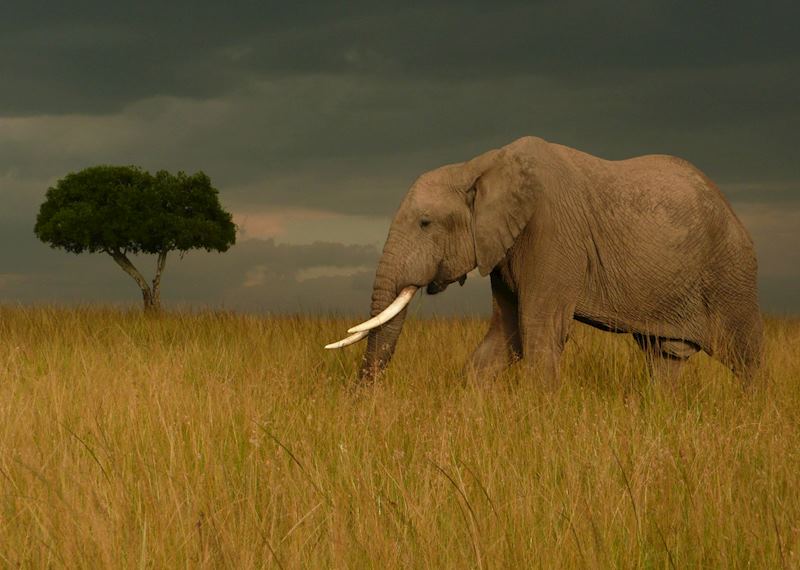
I was walking close to some trees when my guide raised a hand to stop me and indicated for me to listen. I could hear the cracking of twigs and rustling leaves, and there was a musky, earthy smell in the air. ‘There are elephant just in these trees,’ my guide whispered. While the elephant remained hidden from view, just knowing it was a few steps away was exhilarating.
You can enjoy a hot-air balloon flight over the reserve, taking off just in time for sunrise. I did this on my final morning, by which point I’d seen all of the Big Five except rhino, which are dwindling and notoriously difficult to find. From the air, I could pick out herds of elephant marching in line and grazing wildebeest scattered across the savannah, but my morning was made when my guide pointed down to a black rhino.
Other wildlife highlights : Millions of wildebeest and zebra populate the Masai Mara between August and October as part of the Great Migration, attracting big cats including cheetah.
Where to stay : I like Ol Seki Hemingways Camp in the Naboisho Conservancy. Your large canvas tent overlooks the Naboisho Valley, and most of the staff grew up close to the camp so can share their encyclopedic knowledge of the local wildlife.
When to go : July to October sees dry conditions and coincides with the Great Migration.
Tanzania’s Serengeti for spotting the Big Five alongside the Great Migration
If you have a wildlife tick list, chances are you’re going to complete it during a safari in the Serengeti . The sheer number of animals that inhabit the park’s vast open plains is difficult to fathom.
On game drives, you’ll pass masses of wildebeest (the migration herds are present in the park for most of the year), which in turn attract big cats.
Lines of elephant plod along well-trodden routes linking the park’s waterholes, which have been worn into the landscape over generations. And, while buffalo can be a bit harder to come across, I’ve seen lone males standing atop outcrops to gain a better vantage over the plains.
While game drives are the main way to see the Big Five, you can also take a hot-air balloon flight over the Serengeti at dawn. Not only does it give you a bird’s-eye perspective over the animals, but you also begin to appreciate just how big the Serengeti is.
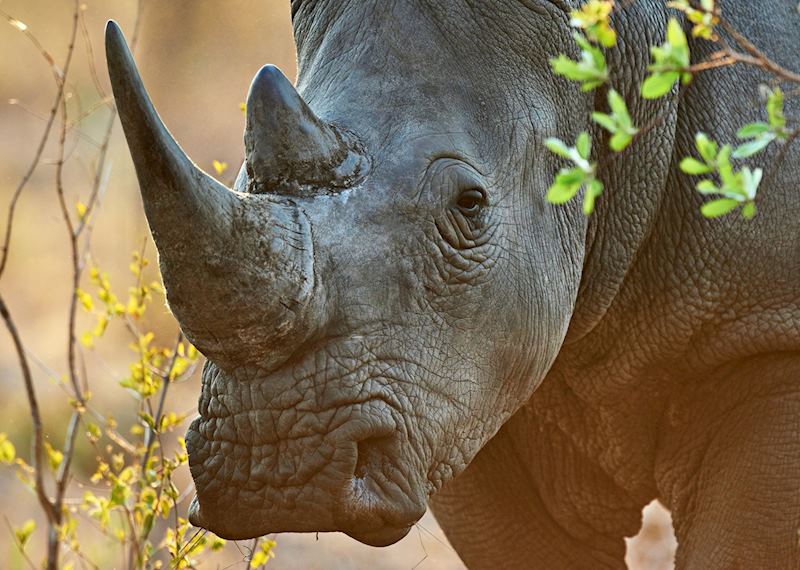
You could pair a visit to the Serengeti with a safari in the Ngorongoro Crater. This huge, sheer-sided caldera has formed a natural bowl filled with wildlife, and is the best place in Tanzania to see rhino. You’ll explore the grasslands and pockets of forest on game drives, passing herds of wildebeest, zebra and eland while looking out for the rest of the Big Five.
Other wildlife highlights : You can visit an area within the Serengeti that was closed for 20 years for cheetah research. It still has a healthy cheetah population, making for some excellent close-range sightings.
Where to stay : Sayari is a tented camp in the northern Serengeti, where you’re well placed for seeing the Great Migration herds pass into the Masai Mara. The camp’s 15 large canvas tents have private verandas facing the plains, and you can soak in the infinity pool while looking out for passing wildlife.
When to go : During the dry season, between July and October, to see animals congregating around waterholes and, in the northern Serengeti, the Great Migration herds.
Botswana’s Okavango Delta for tracking the Big Five in a wilderness setting
Spreading across northern Botswana like an outstretched hand, the Okavango Delta has year-round water and lush foliage, attracting a wide variety of animals including the Big Five.
What I like about this area is the feeling you get of being in absolute wilderness. There are barely any other vehicles around when you head out on game drives, camps are kept to an intimate size, and you rely on the tracking skills and local knowledge of your guide to find animals rather than following other vehicles.
Of all the Big Five, rhino are the most difficult to find. They’re generally only seen in a couple of locations and very rarely. One place you could try is Chief’s Island in Moremi Wildlife Reserve , where you can track them on foot or on game drives.
A guide and, in some instances, a tracker will accompany you on game drives. As well as looking for larger animals, they’ll point out each bird you pass, from lilac-breasted rollers to carmine bee-eaters, and pause to show you freshly pressed paw prints in the ground.
The watery landscape is ideal for elephant and buffalo, as well as hippo, sitatunga, red lechwe and a wealth of birdlife. Motorboat or mokoro (traditional canoe) trips along the reed-lined waterways get you closer to the wildlife.
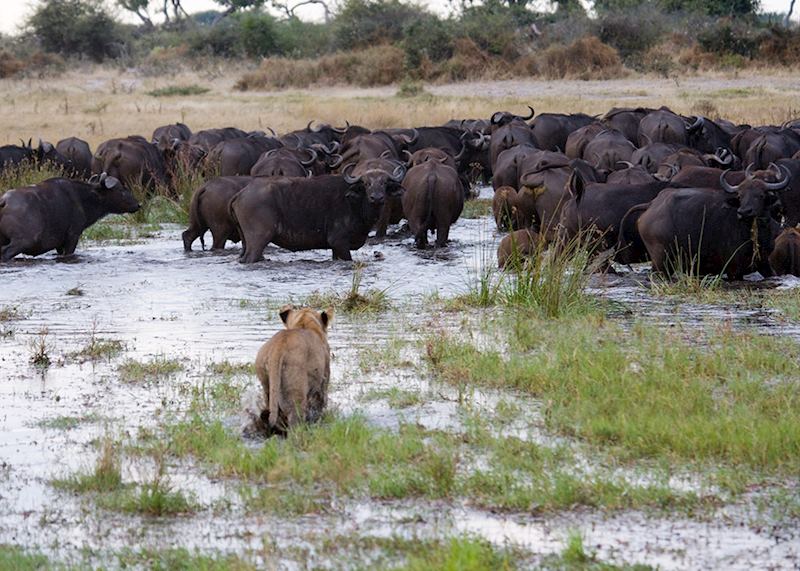
There’s a chance of seeing buffalo coming down to drink and elephant rolling on the muddy banks. Hippo peek their eyes just above the water’s surface, pied kingfishers hover overhead, fish eagles screech from the branches of dead trees and crocodiles bask on the banks.
Other wildlife highlights : Though never guaranteed, wild dog sightings are good in this area (on one game drive, I followed a pack of seven as they set off on their evening hunt).
Where to stay : Camp Okuti sits in the heart of Moremi Game Reserve and offers both game drives and boat safaris. This is one of the few places in Botswana where you have a chance of seeing all the Big Five. You stay in traditional mosasas (reed houses), each of which has a private deck with views over the river.
When to go : June to November is when the delta has the most water and more water-based activities are available. By September, vegetation has died back and animals are easier to see.
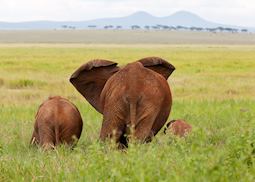
Tanzania safaris: north vs south
With the Great Migration taking place in the north and true wilderness areas stuffed full of animals in the south, you’re spoiled for choice when choosing a safari in Tanzania. Using his first-hand experience, Tanzania specialist Dickie shares his ideas for a memorable safari vacation.
10 min read
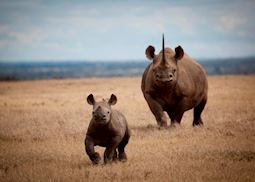
The Big Five in Kenya
Home of the Masai Mara and Lewa Wilderness Conservancy, you'll have countless opportunities to spot the Big Five in Kenya. With a range of first-class lodges, you can embark on traditional game drives and walking safaris in search of these magnificent animals.
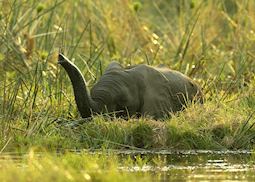
Okavango Delta safaris
The Okavango Delta is safari by water, where you glide in canoes through waterways and twinkling lagoons in search of hippo, elephant, giraffe and iridescent birdlife. Discover the best time to visit this wonderful water world and how we can help you plan your safari there.
- Travel Website
- Travel trade website
- Business events website
- Corporate & media website
- Welcome to South Africa
- What you need to know
- Things to do
- Places to go
- Get in touch
Choose your country and language:
- South Africa
Asia Pacific
- South Korea
- Netherlands
- United Kingdom
By creating an account, I agree to the Terms of service and Privacy policy
Wildlife safari
The big five.
E E ven though you know that Africa and South Africa are so much more than the Big Five, the familiar images soon begin playing in your mind: lions roaring; elephants trumpeting; buffalos lurking in long grass; rhinos standing stately under a thorn tree; leopards prowling in the gathering darkness.
You’ve seen the Big Five in books and you’ve seen them on TV. But it’s time to come and see them for yourself. The real thing. In person.
And there’s no better place for this than South Africa, which offers the most exciting, memorable and exhilarating experience of your life – coming face to face with the Big Five.
Origin of the name
How did these five animals – the lion, elephant, buffalo, rhinoceros and leopard – come to be called the Big Five?
It was originally a hunting term used by the so-called ‘great white hunters’ in the hunting heyday of the 19th and early 20thcenturies, when professional hunters bagged as many trophies as possible in as short a time as possible.
Considered a rite of passage for seasoned travellers, everybody from American presidents to European royalty and heads of state came to Africa to shoot a large, dangerous animal.
The Big Five quickly became known as the most dangerous animals to hunt on foot, and the name stuck – although now ‘shooting’ is done through a camera lens.
T T he Lion
The lion is arguably the most sought-after of the Big Five because it is synonymous with an African safari. Charismatic, powerful and beautiful, everybody wants to see the appropriately named 'King of the Beasts'.
Once, hundreds of thousands of lions roamed the world, but today conservationists give approximate numbers of between 25 000 and 30 000 left, most in sub-Saharan Africa. In South Africa, your chances of seeing lions are high, whether in our national parks or in private game reserves.
Lions are creatures of the savannah and open plains (you’ll rarely find them in a forest) and function in prides, usually numbering about five to 15, depending on the territory – although the Kruger National Park is known to have at least one big pride of up to 25 animals.
They are social family animals – related females rule, usually alongside a large dominant male that has won the pride in fierce competition with other males. Lionesses stay with the pride, while young males leave at two to three years of age. Males sometimes form coalitions to enhance their hunting success, but you’ll rarely see one with more than four lions.
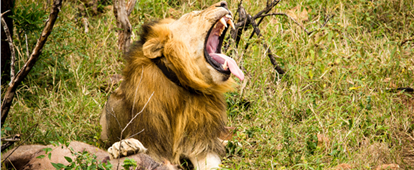
L L ionesses start breeding at four years old, and typically give birth to a litter of three or four cubs after 14 to 15 weeks of gestation. Lionesses of the same pride often give birth at or near the same time as their ‘sisters’, which allows for communal suckling and round-the-clock care.
And don’t expect to see an old lion – they are defeated in battle, often die of their wounds or are no longer able to hunt. Lions are in their prime from five to nine years of age. Male lions, once they’ve taken over a pride, have to work hard to keep it. Younger males – with attitude – are always on the sidelines.
Some prides specialise in hunting certain animals and develop specialised skills for this prey of choice – young elephants, ostrich, wildebeest.
Lions have no natural enemies other than hunters, although lion cubs fall prey to nomadic male lions that kill them in attempting to take over a pride. Hyenas, leopards and wild dogs also kill lion cubs.
T T he Elephant
Perhaps it’s the African elephant that should be called ‘King of the Beasts’ – it is the world’s largest and heaviest land animal. Its ears alone measure up to 2m x 1.2m (roughly the size of the surface area of a double bed) and can weigh up to 20kg (44lb) each, while it can grow to a height of more than 3m.
Elephants abound in South Africa – you can see great herds of more than 100 in the Kruger National Park or smaller breeding herds in private reserves.
Elephants are highly social animals and females rule. A herd will typically have a matriarch with vast cultural knowledge that leads the herd, keeps it under control and chooses its direction and pace. Even when feeding (and an adult elephant, arguably nature’s most versatile vegetarian, can eat up to 300kg of grass, bark, branches and foliage a day), the herd rarely strays far from the matriarch.
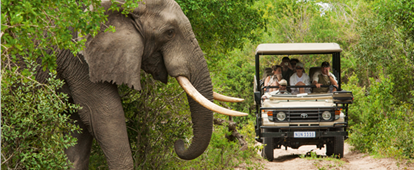
Y Y oung bulls leave the herd when they become teenagers and either live alone, form bachelor herds or seek the company of old lone bulls that have long left the herd.
Your first sighting of a tiny baby elephant will be one of your most indelible memories. How do these small creatures, some not yet reaching up to their mother’s tummy, avoid being stepped on or crushed by the herd? Mother, sisters, aunts and cousins are always on the alert. Watch how mothers protect their babies by always putting themselves between danger and their offspring, and how the whole herd immediately goes into protective group defence mode when threatened.
If an elephant trumpets, you’ll certainly hear it, but the infrasonic tummy rumbles they use to communicate with one another are most often too low for the human ear to pick up – although research shows that these calls have an elephant range of up to several kilometres.
And just because elephants are huge, don’t think they are slow; if a herd takes fright, or needs to move on quickly, elephants can reach speeds up to 40km/h – faster than you can run.
Elephants love water. To see a herd drinking, playing, splashing, swimming and dunking in the water will be another of your favourite safari memories.
T T he Buffalo
Don’t be fooled by the docile appearance of the Cape buffalo (also known as the African buffalo). This mean, moody and magnificent animal is possibly the most dangerous of the Big Five, especially if you are on foot.
Robert Ruark, the American novelist, wrote that ‘a buffalo always looks at you as if you owe him money’. Come face to face with a buffalo (preferably from the safety of a vehicle), and you’ll see exactly what Ruark meant – the stare is cold, calculating and cunning.
Buffalos are social animals and move around in large herds – sometimes of many hundreds – chomping long grass as they collectively move and feed. In the dry season, you can often see a cloud of dust signalling an approaching herd.
Buffalos have to drink daily, and to witness a large herd approaching a waterhole – often in the early morning or late afternoon – is a memorable and noisy experience.
It’s quite easy to tell the males from the females. The males are blacker, bigger and have huge powerful horns that are joined in the middle to form a ‘boss’. When buffalos fight for rank and females (buffalos are non-territorial and don’t fight for territory like some others of the Big Five), the noise of the clashing and crashing of their bosses is awesome. It is estimated that the impact of their horns’ collision is equal to a car hitting a wall at 50km/h.
Females are smaller, more reddish-brown in colour, and their much narrower horns don’t meet in the middle. Calves are usually born in the rainy season, and although they can stand up on wobbly legs immediately, it takes several weeks until they can keep up adequately with the herd.
Although most of a buffalo’s senses are well developed, it’s their super-charged hearing that helps them find food and alerts them to danger. There’s usually a dominant male – or more if the herd is huge – that stays in the middle of the herd, as well as ‘pathfinders’, which may not be the biggest and best, but lead the herd and keep it together.
You may also see a group of old bulls together – caked in mud from wallowing.
These are known as ‘Dagha Boys’ after the ‘dagha’, or mud, the Zulus used to build their traditional huts.
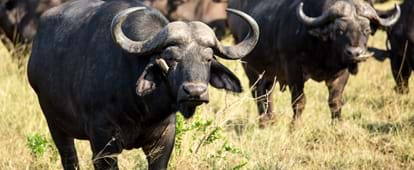
I I t’s quite easy to tell the males from the females. The males are blacker, bigger and have huge powerful horns that are joined in the middle to form a ‘boss’. When buffalos fight for rank and females (buffalos are non-territorial and don’t fight for territory like some others of the Big Five), the noise of the clashing and crashing of their bosses is awesome. It is estimated that the impact of their horns’ collision is equal to a car hitting a wall at 50km/h.
T T he White Rhino
Your first impression will be of its bulk and size. And then you may wonder how such a prehistoric-looking animal has existed for so many millions of years. Although unfortunately, the brutality and intensity of present-day poaching is a serious threat to the continuing survival of the species.
The second-largest land mammal, the white rhino’s name has nothing to do with its colour. It was the early Dutch settlers who referred to the animal’s broad lips as ‘wyd’ (wide), misinterpreted later as ‘white’.
This is a remarkable animal, weighing in at nearly 2 500kg (about 5 500lb) and often living up to 40 years of age. Because it is a grazer, eating thick, tough grass, it needs lots of water to digest its food, and needs to drink at least once daily. Sometimes you’ll see a rhino eating mud or soil, which acts as a dietary mineral supplement.
Its horn is used for fighting and defence and is not attached to the skull in any way.
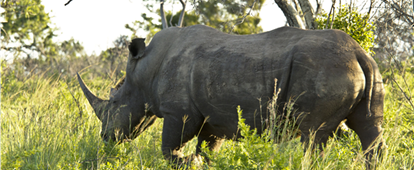
F F emales live together in small groups, individuals breaking away when a determined bull decides to mate. Only one calf is born to a female at a time; the cow is very protective of her calf and will fight off an aggressive bull if necessary.
The calf always runs in front of its mother if they are fleeing from danger (a black rhino calf, on the other hand, will run behind its mother).
You’ll often find a white rhino resting in shade in the heat of the day or wallowing in mud. The dried mud acts as a sunscreen, a cooling agent and helps evict parasites that break off with the dried mud.
Look out for rhino middens beside the road. These are huge heaps of dung, used regularly by a particular male rhino to mark his territory. Females and non-dominant bulls also defecate on these middens, which act as markers and information signals to other rhinos.
Rhinos have poor eyesight but a fantastic sense of hearing and smell; watch a rhino’s ears – they constantly rotate in all directions as it works out what’s going on around it. And don’t think that because it’s so big and ungainly it’s a slow animal. If it’s running away (or chasing you), it can reach speeds of 40km/h.
The Black Rhino
The black rhino is smaller than its larger ‘white’ relative, is more solitary and elusive, and has a shorter head and beak-shaped lip that it uses for browsing leaves and twigs. Regarded as a more dangerous animal than the white rhino because of its volatile temperament, it is now one of the most endangered animals in Africa.
T T he Leopard
The one animal everybody wants to see – beautiful, charismatic, sexy and dramatic – and also the most elusive. The leopard is a solitary animal (unless mating, or a mother with cubs) and will, whether male or female, fiercely defend its own hunting territory from other leopards.
Considered to be one of the most successful, if not the most successful, of all African predators, the leopard is a master stalker. If you are lucky, particularly on a night drive (as leopards are nocturnal animals), you may see a leopard stalking its prey – silently, ruthlessly – before getting to within 5m of the prey and then launching itself with a powerful spring. Surprise is its chief means of attack.
Leopards often athletically drag their prey up into trees (sometimes the dead animal is as heavy as the leopard) to avoid having it pirated by other animals, particularly lions and hyenas.
Look out for thick overhanging branches of big old trees – you may well find a leopard snoozing there during the hottest part of the day, or snacking on its prey.
Leopards take great pains to advertise their territories by scent marking, scraping the ground and defecating in exposed spots. They try to avoid confrontation with other leopards (unless protecting their territory) because, as solitary hunters, they can’t afford to get injured.
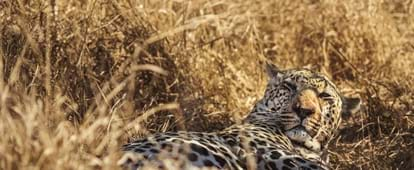
L L eopards make great mothers and take excellent care of their offspring, moving them from one place of safety to another when the cubs are very small – just as well, because young cubs are vulnerable to other leopards, lions, hyenas and wild dogs. Take a look at the black markings behind the ears and white tip of a mother’s long tail – these are signals for small cubs to follow.
That long tail is also used as a rudder for balance when the leopard is climbing a tree or hunting. A leopard also has long whiskers that it uses as antennae to judge spaces between bushes and trees – an essential tool for an animal that hunts at night.
Related articles
Netflix jiva - limpopo itinerary, this women's month take a girl's adventure to celebrate, the south african savanna – spotting the teeming life in bushveld grasslands, the sanbona wildlife reserve: awe-inspiring karoo landscapes in western cape, sabi sand private game reserve, mpumalanga: enjoy the big 5 from safari luxury, the r518 through the waterberg in limpopo: see the ancient waterberg red beds, pilanesberg national park, north west: spot the big 5 in an extinct volcano, the makuleke and kruger national park: how local people can benefit from south african tourism, south africa on social media.
The BMW International Open has made us excited for the BMW Golf Cup World Final to be hosted in SA. We caught up wi… https://t.co/XiU3waBo1T
Always a pleasure partnering with local businesses to promote SA on the global stage. Warren Weitsz, Co-Founder of… https://t.co/YRxoX6Jdtx
To say the players are bringing their A-game is an under statement! Round 2 has given us many unforgettable moments… https://t.co/4bBdAuXMUL
"...Patrons have been keen and interested in engaging on where the best fairways in SA are. Paired with some of our… https://t.co/tIoXM2uUrh
Our stand at the BMW International Open has been drawing a lot of attention – and rightfully so! “We are proud and… https://t.co/ulYSTje4CB
Clear skies, rolling greens, supportive crowds – the conditions couldn’t be better for a day at Golfclub München Ei… https://t.co/3TMmUxsN0m
What happens when an amateur and pro hit the fairway together? Find out in the Pro-Am Tournament, where 3 amateurs… https://t.co/hkvHUw0H0E
Ready to get into the swing of things? The Pro-Am Tournament of the 2023 BMW International Open starts today in Mün… https://t.co/WqLU7FshdH
South Africa has many exquisite golf courses. As we gear up for The BMW International Open in Germany, we hope to s… https://t.co/vTFwgOa78W
South African Tourism will be showcasing our beautiful country's offerings in Germany! We have so much to offer glo… https://t.co/O1m4yVy491
#DidYouKnow South Africa has produced some of the top golfers in the world. As we gear up for the BMW International… https://t.co/E1GsW6z1Fy
#DidYouKnow ? #VisitSouthAfrica ❤️🇿🇦 https://t.co/Y4zWjb8xIz
RT @Roberto_EUBXL: Amazing #YouthDay2023 long weekend in @MidlandsMeander ! Another 💎 of multifaceted #SouthAfrica : touches of 🇬🇧 🇧🇪 🇱🇺 co…
What does golf, South Africa, BMW and Germany have in common? The 34th staging of the BMW International Open in Ger… https://t.co/YdvuWOjs8O
Golf was first played in South Africa in 1885, in Cape Town. Now we are taking our love of golf to the world, as we… https://t.co/dXc5uIyGxI
RT @PublicSectorMan: Today marks 47 years since the youth uprising of 16 June 1976. Deputy President Paul Mashatile will lead the commemor…
We look forward to showcasing South Africa’s abundant tourism offerings to a global audience while reminding them a… https://t.co/yVz97hDGaa
A dynamic collaboration between SA Tourism and the iconic BMW Group is set to supercharge the country’s efforts tow… https://t.co/JhLDwHlLix
50 days until the kick-off – or shall we say the tip-off – of the Vitality #NWC2023 in SA! Excitement levels are at… https://t.co/Ni2fHwh2NJ
#VisitSouthAfrica ❤️🇿🇦 https://t.co/ApcA6wNNop

- Useful links
- Travel partners
- Business events
- Travel trade
- Accommodation
- Useful contacts
- Visa & entry info
- Digital Assets Library
- Image Library

- Experiences
Big 5 Safari
The magic of the big 5 safari in africa.
Experience the thrill and majesty of Africa's wildlife with Rhino Africa's premier Big 5 safaris. The Big 5 include the elephant, lion, leopard, African buffalo, and the rhino. They stand as a symbol of our rich fauna and seeing these magnificent creatures in their natural habitat is a highlight for any wildlife enthusiast.
Choosing the Perfect Big 5 Safari Destination
Africa is home to numerous game reserves and national parks that offer exceptional Big 5 sightings. Some of the best Big 5 safari destinations include South Africa's Kruger National Park , Tanzania's Serengeti National Park , Botswana's Chobe National Park , and Kenya's Maasai Mara National Reserve .
Each destination offers a unique safari experience and houses a diverse range of ecosystems as well as wildlife beyond the Big 5.
Experiencing the Big 5 with Rhino Africa
At Rhino Africa, our Big 5 safaris are about more than just ticking all five animals off your wildlife checklist. We aim to provide an immersive and educational wildlife experience , where you not only see these iconic creatures but also understand their behaviour, habitat, and conservation challenges.
Tailor-Made Itineraries for Your Big 5 Safari
Just like every traveller is unique, so should their safari experience be. Our Travel Experts will help you curate a Big 5 safari itinerary that matches your preferences.
Whether you're a photographer keen on capturing these magnificent creatures, a family on a vacation, or a couple on a romantic getaway, we've got you covered.
Luxury Accommodations: Perfect End to a Perfect Day
After a day filled with unforgettable wildlife sightings, retire to our carefully selected luxury lodges and camps .
Located in the heart of the wilderness, these accommodations offer top-notch facilities, exquisite cuisine, and spellbinding views of the African landscapes, adding an extra layer of luxury to your Big 5 safari.
Responsible Tourism: Safeguarding Africa's Treasures
As we delight in the awe-inspiring beauty of Africa's wildlife, it's crucial to remember our responsibility towards their conservation.
Our Big 5 safaris follow the principles of responsible tourism, ensuring the welfare of the wildlife and contributing to local communities. And by travelling with Rhino Africa, you leave your lasting legacy in Africa by empowering us to continue making a difference !
Book Your Dream Big 5 Safari with Rhino Africa
To see Africa's Big 5 in real life is an experience that stays with you forever. So, what are you waiting for? Contact our Rhino Africa Travel Experts today to plan your best Big 5 safari in Africa.
With our expert first-hand knowledge, personalised service, and passion for Africa, we'll ensure your safari is an unforgettable adventure. Let’s start planning !
How it works
- 1 Describe your dream trip
- 2 A Travel Expert will help curate your experience
- 3 Confirm & start packing
Let's plan your trip
Enquire now and a Travel Expert will get back to you within 24 hours.
Ready to start your journey?
ZA Number: +27 21 469 2600
Why book with us.

Please wait while your request is being verified...
The African Big Five: The Top 5 Animals to Spot on Safari
There are certainly a wide range of animals you can catch sight of during a safari in Africa (just check out my Safari Animal Bucket List to see how many!), but there are a handful that get the most adoration—the African Big 5—said to be the most dangerous animals to hunt on foot. If you are traveling to halfway around the world for an African safari there is little doubt that you will want to spot these Big Five beauties, which include the African elephant, leopard, lion, Cape buffalo and the every so elusive rhino.
In case you’re curious to learn more about the animals that belong to the Big Five, or at least which safaris to look further into if you want to specifically spot one or more of them, I’ve given some insight of each one and their natural habitats below.

The African Big Five are the Top 5 Animals to Spot on Safari
What is the big five .
The term “Big Five” was originally coined to refer to the animals on African Safaris that were the hardest and most dangerous to sport hunt. These Big Five animals were African elephants, Cape Buffalo, Leopard, Lion and Rhino. They’re still considered the African Big 5 today, although thankfully these days it’s more in terms of being the most sought after animals to see on a safari rather than to hunt down.
Meet the Big 5
African elephant.
The African elephant is the largest animal that walks on Earth (with the Antarctic blue whale being the largest animal on Earth overall). Two subspecies of the African elephant exist, with 37 of the countries in Africa having at least one subspecies—Savannah elephant and Forest elephant—roaming around their soil. African elephant’s status is considered vulnerable, with especially the Forest elephant suffering from poaching for their ivory.
WHERE TO SPOT IN AFRICA
African elephants are quite widely spread around the African continent, and your sure to see dozens while on safari. But even so, they are far easier to spot in some places than in others. For your best bet to spot an elephant during a safari, visit a safari in Botswana or South Africa, Amboseli National Park in Kenya, Tarangire National Park in Tanzania, or Damaraland in Namibia.

Cape Buffalo
Cape buffalo is a subspecies of the African buffalo, the one most commonly seen roaming about sub-Saharan Africa. They live in herds, with anywhere from 50 to 500 members, with any type of terrain being to their liking as long as there’s water nearby. During the rainy season, you may see a buffalo herd with thousands of members in Serengeti.
You can find cape buffalo in many areas across sub-Saharan Africa. However, just like with elephants, you’ll have a far easier time spotting a buffalo in some regions over others. Kruger National Park, Addo National Park and Hluhluwe Imfolozi game reserve are some of the best places to visit for a buffalo sighting, as well as of course Serengeti during the rainy season.
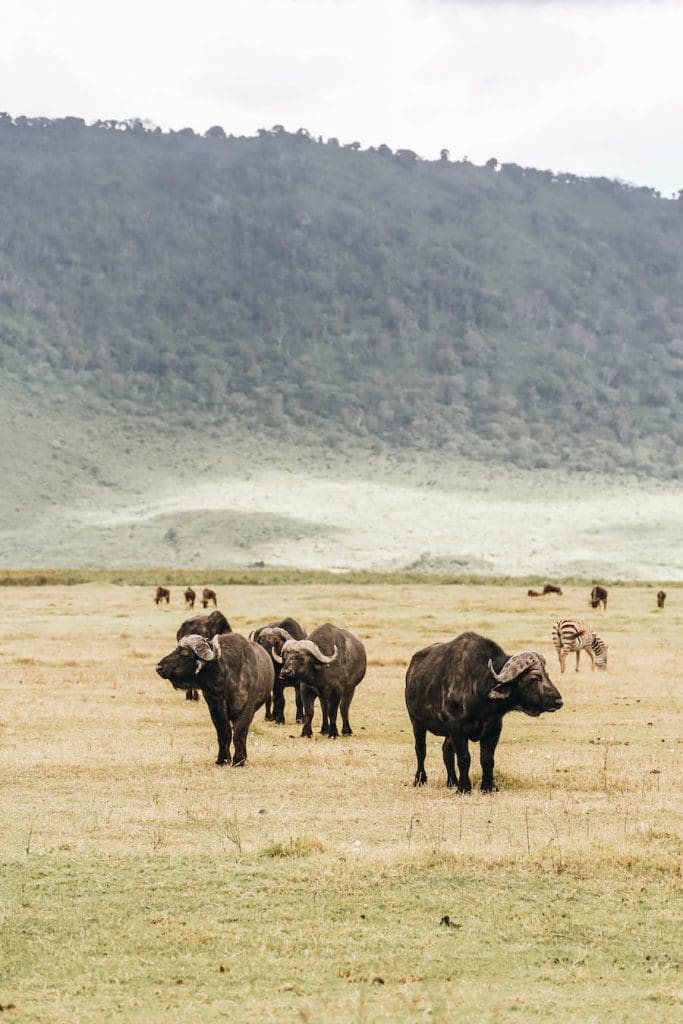
Found in northern Africa and sub-Saharan Africa, leopards are strong and stealthy big cat animals. They hunt predominantly by stalking their prey in the tall grass, but also feel comfortable and at home up in the trees or in the water.
Your best bets for a sighting of a leopard are in Kenya’s Masai Mara and Tanzania’s Serengeti, especially the latter’s Seronera Valley. You can also spot a leopard in other national parks and game reserves in Kenya, in Zambia’s South Luangwa National Park, in Botswana’s Moremi Game Reserve, and in South Africa’s Londolozi Private Game Reserve.

Another big cat, lions are the second largest cat in the world, living in various terrains in sub-Saharan Africa. Unlike other cat animals out there, lions are social animals living in prides of around 30 lions. One pride consists specifically of 3 males, a dozen females related to them, and the young of the pride, with males and females having their distinctive roles in the pride.
Depending on your interests, there are various spots to see lions in Africa. If you want to see a pride of lions that have taken a liking to water, head to Okavango Delta; in Chobe National Park, on the other hand, you are most likely to see lions in predator mode; in Masai Mara there are plenty to see any time of year; the lions of Namib Desert are some of the most resilient ones out there; and Kruger National Park has long been considered one of the best places to see a lion in the wild, especially among all the parks in South Africa.
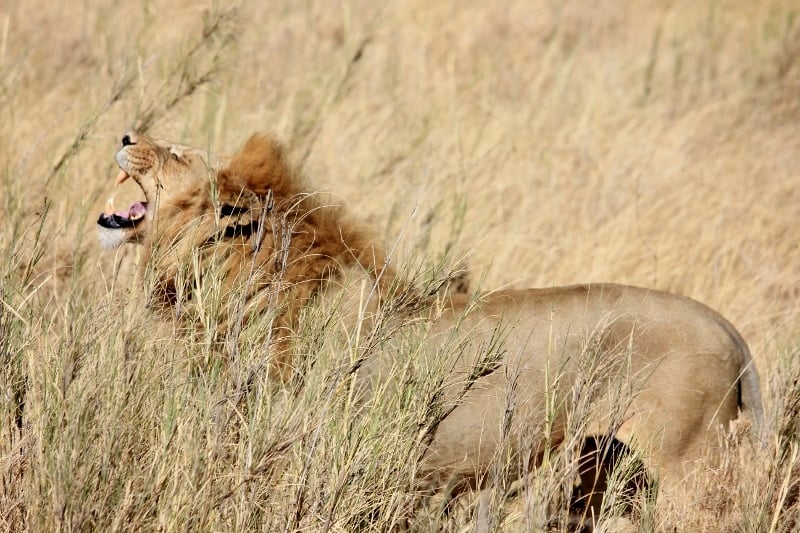
There are two species of this large animal on African soil: black rhino and white rhino, of which the black rhino is sadly listed as critically endangered species. Both of these rhinos are actually grey and have two horns (some rhino species outside of Africa only have one), for which they are sadly poached a lot.
For the largest population of white rhinos in Africa, head over to Kruger National Park in South Africa; meanwhile at Ngorongoro Crater in Tanzania you can spot black rhinos. For a chance to see both species on one safari, you ought to try out the Mkhaya Game Reserve in Eswatini. A few other locations for spotting rhinos in Africa also exist, most notably Ol Pejeta Conservatory, Lake Nakuru National Park, and Kwandwe Game Reserve (where you may have a chance to see all of the Big Five!).

So, which of the Big Five Animals do you fancy seeing the most? Are you planning on choosing a tour specifically to see that specific animal or are you hoping to catch a sighting of all the Big Five on one safari? Many of us are likely dreaming of hopping into a vehicle and heading into a safari once in our lives, and what better experience to come out of it with than having seen the “king of the jungle” or the largest walking animal on Earth!
My Story & Experience:
Having a competitive nature, I was up for the challenge of spotting the Big Five Animals and it turns out that spotting these 5 was a pretty big one. Game on.
We had four days while on safari in Tanzania with Shadows of Africa to spot the Big Five. That was only 1.25 animals to identify per day. Pretty good odds.
Our trip started out promising with witnessing an African Elephant on our first day of safari in Tarengire National Park . Actually, there were a couple dozen elephants roaming the land. Looks like this whole spotting the Big Five thing was gonna be easy. Famous last words.
On day two, we scored big time in Serengeti National Park . It started with finding a male lion. And he was roaring. Do I get bonus points for the roar?
Also on this day there was the sighting of a Cape Buffalo toting a bird on his back. Plus, there was a cheetah. He was pretty far away, but I still saw him. So it counts.
It looked like I was winning this Big Five challenge against myself. And then day three came. There were a lot of repeats of what was already seen, but not the last animal on my Big Five hunt, the rhino.
Even on the last day of safari, in Ngorongoro Crater, we actually all felt pretty confident as we drove through the animal rich land.
Besides, if anyone could help spot us a rhino it would be our Shadows of Africa driver Timothy. I swear he can identify an animal a quarter mile away just by its shape and swagger. And he tried to find us a rhino. Really hard. He even had the CB turned on in case any other safari drivers spotted one first.
They did not.
There are only an estimated 21 rhinos in Ngorongoro Crater. That’s not a lot, considering the hundreds of wildebeest and zebra I had seen in the crater in the first half hour.
We drove to all the spots that the rhinos usually hung out, but came up empty. They had gone into the forest, a place we could only go on foot and there was no way I was stepping out of a jeep that was surrounded by lions, wildebeests and wart hogs.
As the last day on safari came to an end, it became evident that the Big Five would be minus a Big One.
That’s okay, I’m coming back for you Mr. Rhino. Be ready.
UPDATE: I recently returned to Tanzania and finally spotted a rhino at Ngorongoro Crater!
More About Africa
Animal Bucket List: 100 Names of Random Ones to See Freetown Bucket List: 15 Best Things to Do in the Capital of Sierra Leone Sierra Leone Bucket List: 10+ Best Things to Do in the African Country Ugali (Nshima): All About Africa’s Staple Food African Safari in Tanzania: The Ultimate Itinerary and Tour Africa’s Maasai Tribe: The Culture & Traditions of The People Safari Animal Bucket List: 35 Top African Wildlife to Spot Four Seasons Safari Lodge: Luxury in Tanzania’s Serengeti National Park Spot the Big Five on an African Safari Tanzania Safari Bucket List: 23 Activities Not to Miss
30 thoughts on “The African Big Five: The Top 5 Animals to Spot on Safari”
After all you have eaten and experienced, I am surprised you were not the first to jump out for your elusive big one. I discovered your site while making my bucket list after surviving open heart surgery. I truly enjoy reading your adventures. You really helped me make a great bucket list! Kathy
I did think about it for a second, but lions & hyenas really scare me ;) I am so happy to hear that my blog is helping you make a great bucket list after such a major surgery!! And I hope your checkmarks will be plentiful :)
I finally spotted a rhino later than month in South Africa!
Damn you and your rhino Raymond Walsh ;) I am beyond jealous!!
I saw a rock that looks like a rhino, does that count? :-p
LOL! I thought the rock looked like a tent and the piece of wood looked like a cow ;)
Guess you’ll have to visit at least a couple more times. The first time I traveled to Africa, some British tourists told me it was addictive. They were right. I’m headed back, this time, to Namibia where I should finally get the change to see a rhino. I can’t wait!!
Yes, I definitely need to go back to see that rhino (amongst other reasons too). Have a wonderful time in Namibia!
You definitely get bonus points for the roaring lion! I can’t wait to go see them for myself one day!
Wow! What a great experience. Not seeing a rino is a great reason to go back but it seems to me that, ANY, reason would be good enough.
I’d be happy to see four. Last time I went on safari I only saw three. I love that photo of the lion roaring – it’s brilliant!
Okay, now I feel better with only seeing four :)
Hi Annette, that’s such a pity! I went on a safari on the Maara and the same happened to me. I saw many of the big 5, but Mr Rhino didn’t make an appearance.
Great blog, by the way!
Damn Mr. Rhino!! I have to admit that the hunt was so much fun, but the failure not so much :)
Wow! What a great experience. so so lovely photos…
hope you get to see the rhino on your next safari travels. I had a hard time spotting one too and ended up seeing one at the Nairobi national park. Good Luck
Next time, I will not leave Africa until I spot one!
In the images the lion is mourning, small baby elephants try to break the branch of a tree and a buffalo standing all were captured by way of excellent photography.
Hey Annette, I am also planning a safari trip possibly at the end of this year but I was wondering if I set out on my own (trying to get someone to agree to come with..lol) how did you go about finding other possible bucket listers to go with you? Did you just reach out to people who followed your page? or got grouped up with them once you booked? Thanks!
Actually, I was invited to go on the safari by the tour company along with a couple of other bloggers. Though, I believe that if you contact the company they should be able to pair you with some others that will be on safari too. Good luck! Going on safari was amongst the best bucket list experiences I ever had.
Hope you get to come to Africa again sometime soon. If you do, you would love South Africa and the Kruger National Park. We go their every year from Johannesburg and on the first day’s trip into the Park this year, spotted all of the big five pulse most of the Ugly Five. Enjoy your travels.
I had never heard of the Ugly Five!! But, I need to spot the Marabou Stork on that list in addition to the rhino! I would love to go back one day soon.
Hi Annette! Amazing photos! Looks like you truly enjoyed and made the most out of your safari trip. Are you planning to visit again soon? If so, what are you looking forward to seeing? As for me, the next time I go on a safari trip I definitely want to see giraffes and maybe some primates too. Looking forward to reading about your next travel!
I really hope i get to go to a safari! This is so cool!
Hope you can visit the Safari someday.
I am a safari organiser for years and this is one of the most comprehensive safari guide, especially when you want to get the best of African safari. Perfect and pretty much useful for both beginners and pro safari goers. Way to go!
Thank you so much. I’m glad that this can help my readers.
Thanks for sharing amazing tips. The big five can also be found in Uganda when you Murchison falls national park and Ziwa rhino sanctuary while on your way to Murchison falls. Queen Elizabeth National Park is also another place where you can view lions, the tree-climbing lions in Kasenyi Plains.
Loved this post and the details on what to see and where (specifics like the pride of lions). Ps. you definitely get bonus points for the lion’s roar!!
I want to see leopards the most because they are just spectacular to look at and from your post I’ll be researching Kwandwe Game Reserve for a chance to spot all five.
I love the post and is very useful. Thanks so much
Leave a Comment Cancel reply

Hey Bucket Listers! I'm Annette .
I’m a goal obsessed mid-lifer, traveler, experience collector, fear crusher, digital marketer and author with big bucket list dreams. Let's Connect!
Want 2,000 free bucket list ideas?
Jump right in and you will get your printable ideas by email:
Whatcha Looking for?
Home About Blog The Shop Partnerships Contact
Bucket list ideas travel facing fear & anxiety.
Why are they called the big 5 animals & other FAQs
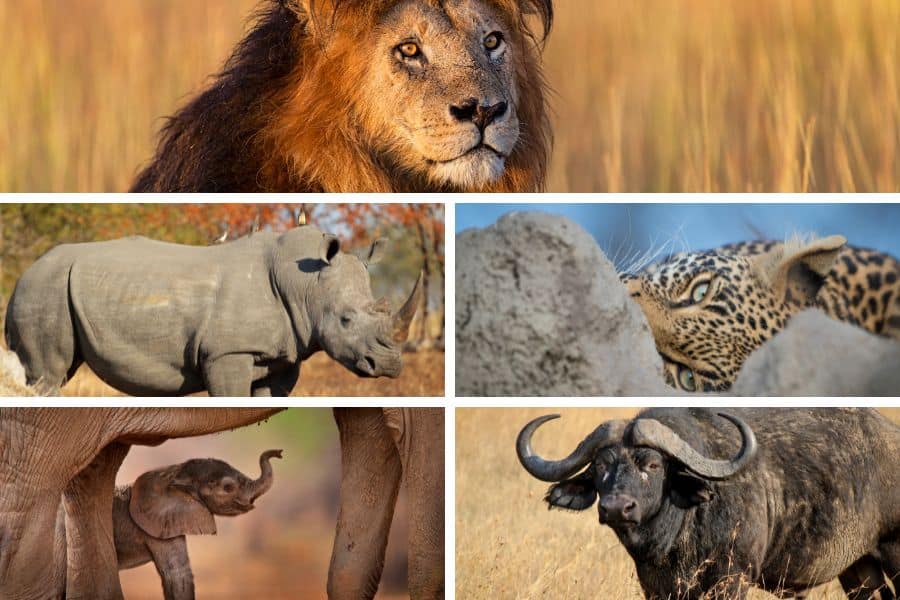
The “Big Five” is probably the most popular phrase in the African safari jargon.
More often than not, the first thing a safari newbie will tell you is: “I want to see the big five animals”. Almost as if it was the only thing “worthwhile” in the bush.
Or people will return from a safari saying, “I saw the big five”.
While this is the most popular term in the safari industry, it has a bitter history and makes the African savannah seem a very simple place.
So what makes them so “special”? And are they even the biggest?
In Africa, the big five safari animals are magnificent sightings . There are many fascinating things to know about these mighty mammals, so let’s find out more below.
What Are the Big Five Animals?

Can you name the big five animals?
The big five are the African elephant ( Loxodonta africana ), the African buffalo (also known as the Cape buffalo; Syncerus caffer ), the rhinoceros (Black rhino = Diceros bicornis ; White rhino = Ceratotherium simum ), the lion ( Panthera leo ), and the elusive leopard ( Panthera pardus ).
And no : they’re not defined as “big” because of their size. Otherwise, creatures such as the hippopotamus or super-tall giraffe would have made it on the list.
Why Are They Called the Big Five?
Historically, the big five got their fame because they were the most sought-after hunting trophies . And not just because their heads appeared most impressive after a visit to the taxidermist.
Simply put, the big five were the most dangerous African animals to hunt on foot . They’re very difficult to maneuver around and are highly unpredictable.
Most importantly, these five are the only animals that charge and fight back against guns .
So, as colonialists and aristocrats went around Africa with their gangs of servants, killing all five became the ultimate African hunting experience (even though the servants got killed first when an animal charged).
Why is There Still a Big Five Today?
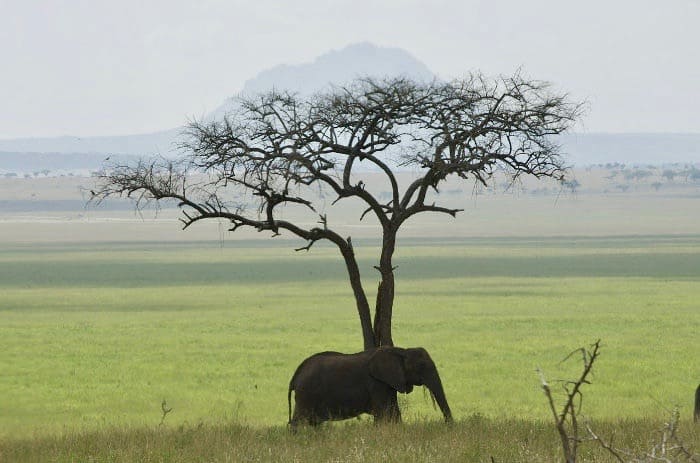
Many people don’t know about that history. They just hear the words safari and big five. Today, people idolize the term as much as ever , just for different reasons. Put simply, the big five sell safaris .
The term is extensively used in safari promotions and marketing . Expressions such as “Big 5 country” or “Home to the Big 5” have become common practices to attract tourists.
As the number of private game reserves has increased in the last 20 years, they are using the big five more and more.
It’s gotten to such an extent that people tend to ONLY want to see the Big 5 while often neglecting Mother Nature’s other hidden treasures.
It’s a pity as there’s far more beyond the big five animals to appreciate on a safari.
How the Big Five Simplifies the Safari Experience
If it’s your first safari, then it’s difficult to escape the desire to tick these five animals off your list . Almost everyone wants to say they went to Africa and saw the big five.
But what does that actually mean? That you get a glimpse of a leopard or rhino from 50 meters away?
Almost all private game reserves claim to have the big five. However, they might only have two elephants, one rhino, one lion pride, a leopard that is never seen, and a small buffalo herd.
In fact, that’s a pretty common scenario, especially for fenced private game reserves in South Africa .
In comparison, most of Africa’s BEST safari destinations DO NOT have the big five .
Chobe National Park has 100 000 elephants but no rhinos.
You can generally spot four of the five in Serengeti National Park or Masai Mara (black rhinos are seldom seen), but there are over 1 million wildebeest and zebras .
The Okavango Delta doesn’t have them all, nor does Samburu , Tarangire National Park or South Luangwa , Hwange , and many of Africa’s best safari destinations .
Thinking Beyond the African Big Five Animals
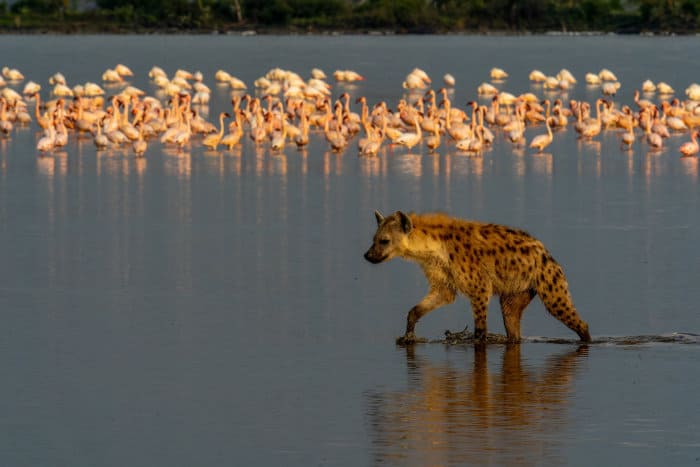
The best safari experiences aren’t planned . If you are only interested in five animals, then you’ll miss out on most of what makes Africa so special.
Safaris are about surprises . Intimate moments witnessed just by you, scenes of both drama and charm that carry you away.
You can see a cheetah chasing an impala across the savannah, loved-up zebra couples grooming each other, or lions meeting hippos at a waterhole.
You can capture the big five in photos. But the best part of a big five safari will be your personal moments with the animal kingdom.
That’s not a distant glimpse of a sleeping cat but coming face to face with thousands of wildebeest .
Seeing a rhino in the distance may sound exciting to some, yet it’s nothing compared to following spotted hyenas or wild dogs on a hunt.
Characteristics of the Big Five Animals
Now that you know which animals form the big five, let’s have a look at some fun facts and characteristics of each.
The African elephant

The African elephant is one of the most beautiful animals on Earth. It is also the largest land mammal on the planet , reaching weights of up to 6000 kg and heights of up to three meters.
Yet, the elephant is a fast runner . In fact, it is speedy enough to outrun most people ( > 40 km/h at full charge). Unless you’re Usain Bolt, of course. 🙂
African elephants are incredibly intelligent creatures and have amazing memory capabilities. These large creatures tend to stay together in matriarchal groups , consisting of grandmothers, mothers, daughters, and aunts.
Above that, they have an average lifespan of 70 years , so their great memory is quite necessary.
They are unmistakable with their imposing long “nose” (trunk), enlarged ears, and their precious “jewels” (tusks), which can grow up to around 2.5 meters. Regrettably, their tusks are often poached as trophies.
Did you notice they had ears in the shape of the African continent?
A fun fact about these giant mammals is that they have the ability to communicate over long distances at a low frequency, not audible to humans.
The best part is that they don’t use their big floppy ears for this communication, but rather their feet !
The African buffalo
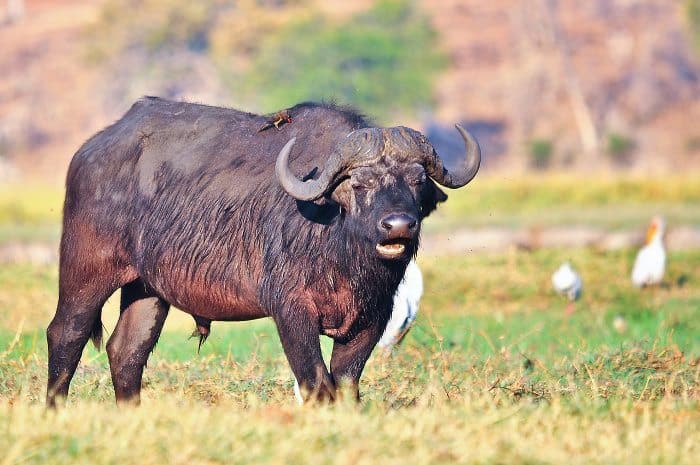
This is the most dangerous of them all, extremely feared by hunters. Cape buffaloes live in herds, but you’ll occasionally come across a solitary bull.
When on its own, the bull can be extremely aggressive when approached. They’re better left alone.
The African buffalo can weigh up to 1000 kg and is one of Simba’s favorite steaks!
Yet, they won’t go down without putting up a fight. Buffaloes protect and try to rescue another member of the herd if a lion catches them. They’re even known to murder a lion that’s killed a group member.
The rhinoceros
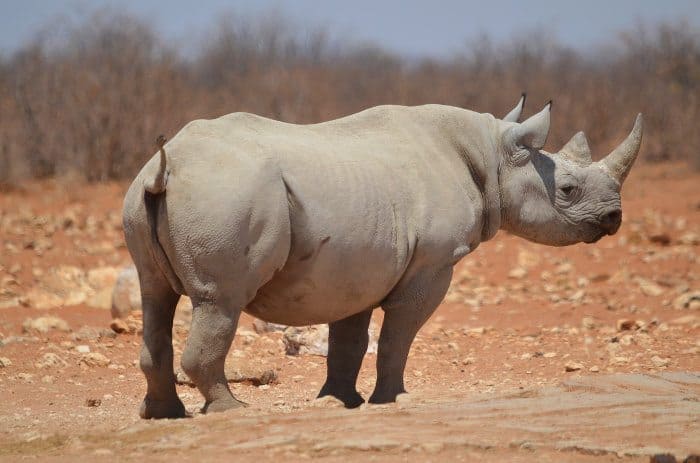
There are two types of rhinos in Africa: the black rhino with its distinctive prehensile lip (which makes it a browser), and the white rhino (not white at all), a typical grazer.
You’re probably wondering why it’s called a white rhino despite being gray or yellowish brown. The white rhino’s name comes from the Dutch word “wijd” — which means wide .
People used this word to describe the rhino’s squared lip . The word has nothing to do with its color. The black rhino, in contrast, has a more pointed upper lip.
Rhinos are also heavy creatures, weighing between 1000 kg (for the black species) and up to 2000 kg (white rhino). As with elephants, rhinos are widely poached for their horn — which can grow up to 1.5 meters long.
Hunters and poachers take their horns away as trophies — to make knife handles, for instance — or are sometimes used in powders (as an “aphrodisiac”).
In certain Asian cultures, people believe that rhino horn has various medicinal purposes , though this is completely false.
Their highly sought-after horns, unfortunately, make them the most endangered members of the African big five.
With poachers continuously employing more advanced methods to hunt these horns, it is very rare for a rhino to survive outside the safety of nature reserves and national parks .

This is Africa’s “King of the Jungle”. An animal of rare beauty, undoubtedly the most famous of them all.
The lion is a skillful hunter with incredible power and speed. Its eyesight is like no other, and it also has excellent hearing and a great sense of smell.
They’re apex predators and can hunt animals much larger than them. These include giraffes, impala, zebra, and the blue wildebeest .
Male lions are very recognizable with their long and imposing mane. Typically, a darker mane means that the male lion is older.
Lions are also highly social animals . In the pride, male lions eat first, yet it is the females that do “most” (if not all) the chasing and hunting.
Once the male has satisfied its appetite, the lionesses join the feast, while lion cubs have to content themselves with any leftovers.
The leopard

My personal favorite.
There are several interesting facts about leopards . Did you know that not a single leopard spot is exactly the same?
In fact, many biologists use the spot patterns on their face and neck to distinguish them from one another. To be honest, I wouldn’t be able to tell the difference. Well, perhaps I’d need a LOT of practice!
While on a safari, the leopard is always my top animal on the checklist. It has all the characteristics I love: it is graceful , an expert climber , and has extraordinary hunting capabilities .
They use their strong climbing abilities to drag prey into the trees, away from lions and hyenas. But they’re not only experts with trees. Occasionally, leopards will even swim and hunt small prey like fish or crabs.
In contrast with the lion, the leopard is very solitary and shy — and they’re nocturnal animals . This makes it even more rewarding and lucky if you “spot” them during the day.
They’re an absolute treat for the eyes.
Big 5 Africa: Video
Practical Tips for Choosing a Safari Destination (With or Without the Big Five)
There is no denying that the hunter’s relic is a marketer’s masterpiece . Alternative catchphrases don’t spring to mind. So while the big five is an outdated concept in one sense, it remains essential to the African safari industry.
When choosing a safari destination, our recommendation is to evoke the origins of the word “safari” instead. This is a Swahili word meaning “long journey” .
A long journey implies something unpredictable , moving the expectation away from five animals to a personal experience in the wild. After all, who wants the same five photos as everybody else?
By viewing a safari as a journey — rather than a “hunt” to see the big five — you can celebrate the individuality of the experience and destination.
You’ll make an African safari a subjective experience rather than an objective fact.
When you’re researching destinations, here are some considerations to make.
- Read reviews : Especially of private game reserves, as this will give you a good idea of what you’re actually likely to spot.
- Look at what makes the reserve or park unique : Rather than checking if it has the same standard five sights, see what other animals are unique to that region or park.
- Look up the size of the park : Larger wilderness areas usually have more diverse habitats and can sustain both greater numbers and greater diversity of wildlife. The more variety and animals in the park, the higher your chance of seeing the big five and more wondrous animals.
- Check whether it is a fenced park : Most national parks are not, but small, private game reserves need fences to stop the only rhino or elephant from leaving.
- Consider the quantity of wildlife : Encountering two elephants is beautiful but pretty standard in Africa. Seeing more than 200 on a single game drive is mind-blowing.
Looking Beyond the Big 5 African Animals

Hopefully, you now have a better idea of why this group of mighty animals is called the big five.
And, with some big five animal facts out of the way, you can move on to exploring more of the wondrous species in the African wilderness.
Other excellent wild animals to look forward to on your African safari include the striped zebra , the semiaquatic hippo , the leaping springbok , and so much more.
They’re equally as fascinating as the coveted Big 5, and you should not overlook them simply because they don’t form part of this commercialized term.
About The Author
Michael Theys
Related posts.
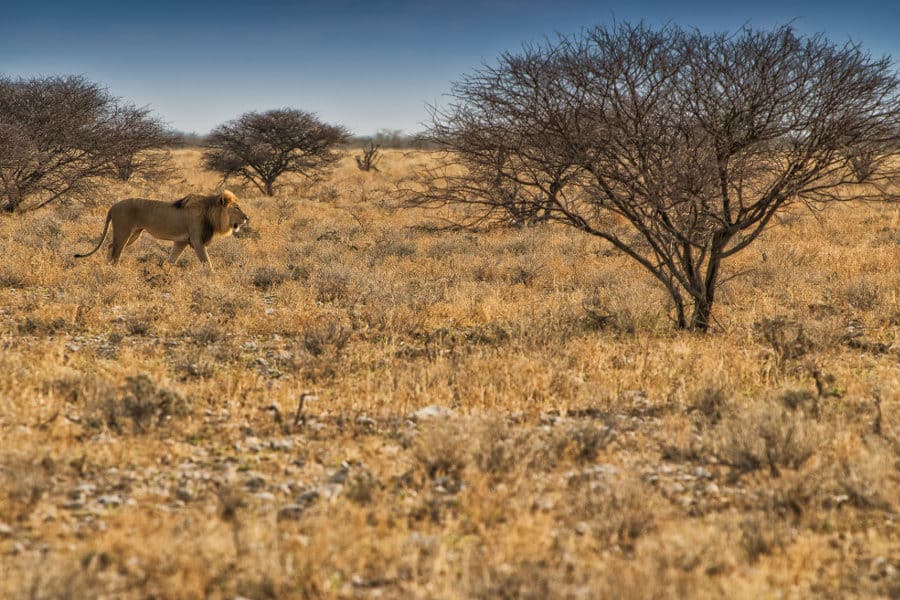
10 interesting facts about lions: cubs, hunting, roars & more
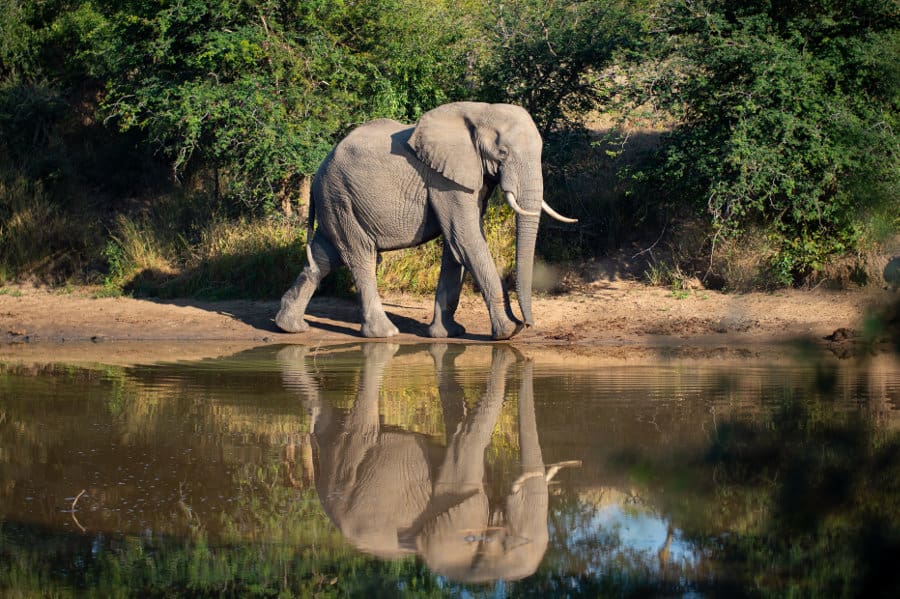
13 African elephant facts – Fun and interesting info on the savanna giant
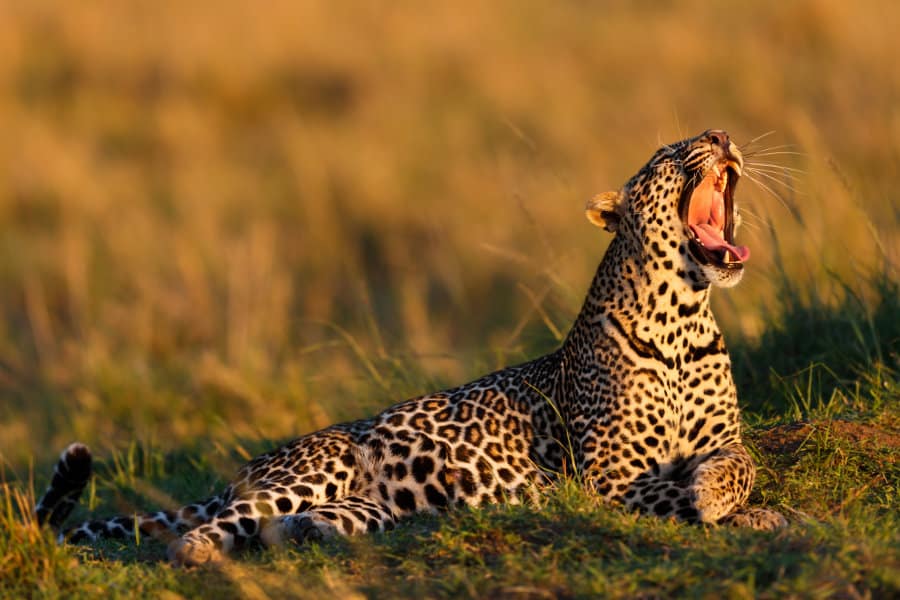
14 interesting facts about leopards
Leave a comment cancel reply.
Your email address will not be published. Required fields are marked *
Safari With The Big Five
East Africa is renowned for offering visitors the chance to spot some of the world’s most iconic wildlife species in their natural habitats.
What people say about our camps
"The staff, food, luxury accommodation, adventure… everything about [Dunia] is pure magic. Could not recommend enough. We feel so blessed to have met the incredible woman running this camp. A true highlight of our honeymoon."
December 2022
"Namiri Plains is exceptional in every way! The rooms are gorgeous and comfortable, the food is fantastic, and the people will make you feel special from the moment you awaken until you are at rest in the dreamy beds! They have thought of all the details to make your days and nights pleasant and easy. The location is fantastic, with animals all around the camp every day. Plan on staying at least three days; you’ll be glad you did!"
© 2022 Asilia Africa. All rights reserved
Terms and conditions ◦ Privacy policy
Where To See The Big 5
Why travel with asilia africa.
Positive Impact
Protecting our wilderness areas and the surrounding communities is a key part of who we are.
Prime Locations
Situated in the very best locations within prime game-viewing areas.
Rich Experiences
Our safaris are immersive, authentic and engaging.
Warm Hospitality
Our team welcomes you with warmth and makes you feel at home with genuine African hospitality.
Depend On Us
Our expert on-the-ground teams will safeguard your trip, ensuring all runs smoothly.
Commitment To Quality
Rely on us to arrange anything you may need, with superb level of quality throughout.
True Experts
Our internationally recognised team has a genuine passion to share Africa with you.
Are you ready to start planning your safari?
The term ‘Big Five’ was originally coined to refer to the five most dangerous species to hunt on foot: rhinoceros, elephant, buffalo, lion and leopard. While these individual species can be observed in various parks throughout East and Southern Africa, it remains an achievement to spot them all, and East Africa is one of the few places in the world where safari-goers have a good chance of doing so.
Good areas to see the Big 5 are Ngorongoro, the Serengeti and the Masai Mara. Perhaps your best option for spotting rhinos is Kenya’s Ol Pejeta Conservancy. If you’re particularly interested in spotting elephant, you’ll find plenty of them at Tarangire National Park in Tanzania.
We create tailor-made itineraries for every traveller. From unique scenery, wildlife and cultures to the unrivalled hospitality in our camps, we cannot wait to tailor your journey to suit your every need. Here are some of our best African safari packages to get you started:
Kenya Explored
Destinations:
- Greater Masai Mara
Search for rhino, elephant and more unusual species like gerenuk in the Laikipia plateau in the shadows of Mount Kenya and learn first-hand how Kenya’s conservancies blend tourism, conservation and communities in a sustainable way. Fly from here to the rich grasslands of the Masai Mara, where prides of lion laze in the shade and elephant herds roam the plains.
FROM US$6,623
Tanzania Highlights
Tanzania classic north.
FROM US$5,390
Travel through northern Tanzania’s iconic national parks, home to some of Africa’s best wildlife densities as well as the changing landscapes of the Great Rift Valley and the rich culture of the Maasai. Enjoy game drives in the Ngorongoro Crater looking for rhino, watch herds of elephant in the verdant swamps of Tarangire and explore the vast savannah plains of the Serengeti on this experience-rich safari.
FROM US$7,171
With countless combinations available throughout Tanzania’s “Northern Circuit”, this short but carefully curated bush and beach combination offers the perfect introduction to a Tanzania safari. From the Ngorongoro Crater to the Serengeti and Zanzibar, Tanzania offers the ultimate “safari and beach” destination. In this itinerary, we have given you two different options of the same basic routing.
February 2023
Ready to create your dream safari?
Contact us today to start planning your very own African adventure.
No problem! Sign up to our newsletter instead and be the first to hear about our exclusive offers and experiences.
Not ready to start planning your trip?
Our safari trip ideas.
Why Travel To Africa To see The Big Five?
Every year, millions of hooves drum against Africa’s plains, as wildebeest, zebra and gazelles trek across the Serengeti and the Masai Mara. Called the Great Migration, their odyssey will lead them from drought to good grazing, though the way will be fraught with peril. Lions and leopards will run down prey on the plains.
Sayari Camp, Serengeti
The award-winning Sayari Camp is based in the north of Serengeti National Park, with a prime location to witness thousands of wildebeest crash across the Mara River as part of their Great Migration.
Oliver's Camp, Tarangire
In Tanzania's secluded southern reaches of Tarangire, Oliver's offers an exclusive safari wilderness experience, away from crowds, with some of the best guides in Africa.
Experience The "Greatest Show on Earth"
Get close to gentle giants.
Large herds of elephant (sometimes numbering up to 200!) amble along through iconic landscapes. Perhaps it’s because of their immense size, unique appearance, or their remarkably human-like range of emotions and family relationships that have made elephants such an endearing species.
See The Last Northern White Rhinos In the World
Ol Pejeta Conservancy is home to the world's last two northern white rhinos and hosts East Africa’s largest population of black rhinos and good numbers of southern white rhino. The wildlife found here lives alongside Boran cattle in a pioneering land management system.
Namiri Plains Camp, Serengeti
Completely refurbished and upgraded in 2019, Namiri Plains is in Tanzania’s eastern Serengeti. This remote camp is also a conservation initiative, protecting an area crucial to cheetah and other big cats.
Ubuntu Migration Camp, Serengeti
Ubuntu Migration Camp follows the colossal herds of wildebeest as they journey around the Serengeti. We set up camp nearby to ensure you’re always close to the action.
Ol Pejeta Bush Camp, Ol Pejeta Conservancy
Overlooked by the dramatic snow-capped peaks of Mount Kenya, Ol Pejeta Conservancy is in central Kenya’s Laikipia County. It’s home to the many endangered animals, all protected around the clock by dedicated rangers.
The Highlands Camp, Ngorongoro
The Highlands has redefined the Ngorongoro Crater experience, offering an array of activites afforded by the camp's exclusive location and a combination of comfort and contemporary style.
Rekero Camp, Masai Mara
Witness the greatest wildlife concentration and diversity in the world in the heart of the Masai Mara in Kenya. The camp overlooks the Talek River migration crossing point.
The Mara Naboisho Conservancy in southwest Kenya is a dream for wildlife enthusiasts. As well as cheetahs, elephants and giraffes, the area has one of the highest concentrations of lions in the world.
Noiboisho Camp, Masai Mara
- All Adventures
- Safaris in Africa
- Hiking in Tanzania and Nepal
- Beach Adventures
- Wellness Trips in Africa
- Arctic Expeditions
Big Five Safari in Tanzania
Embark on an unforgettable journey and witness the biggest stars of the East African savanna; the mighty Lion, the majestic Elephant, the rare Black Rhino, the graceful Leopard, and the stoic Cape Buffalo. This classic safari adventure that spans for 7 days, takes you through Tanzania’s most celebrated parks in the Northern Circuit – ensuring immersive and dreamlike views of the wildlife and breathtaking landscapes. Embark on our big five safari in Tanzania, the adventure of a lifetime!
Rates vary due to seasons and availability - request a quote for precise, favorable pricing and tailored travel planning.
Customize Your Trip
Best Price Guarantee
Flight Booking Assistance
Multilingual Guides
Certified Travelife Partner

What documents do I need to travel to Tanzania?
A visa is required when traveling to Tanzania. Currently, this can be obtained online, on arrival at airports and border crossings, and is valid for 90 days. A valid passport is mandatory. Your passport must be valid for at least 6 months beyond the date you expect to leave Tanzania.
Do lodges and camps have mosquito nets?
We carefully select the accommodation on safari so that you are comfortable and relaxed and can experience a one-of-a-kind atmosphere during your safari. All rooms/tents during your safari are fitted with mosquito nets or are insect-proofed to protect you against bites. You are also advised to use insect repellent to further protect yourself, especially outdoors in the evenings.
Is Tanzania safe to travel to?
Tanzania is generally considered a safe destination for safari-goers. Visitors should follow the safety guidelines provided and take necessary precautions, such as avoiding walking alone at night or leaving valuables unattended.
When does the wildebeest migration take place?
The wildebeest migration takes place in Tanzania typically between the months of November to August, although the timing can vary slightly depending on the weather patterns each year. The migration is a continuous movement of around 1.5 million wildebeest and large numbers of zebras and gazelles across the Serengeti plains in Tanzania in search of fresh grazing land and water. In November and December, the herds of wildebeest can be found in the northern Serengeti near the Kenyan border, where they start calving. As the rains stop and the dry season sets in, the herds begin to move south in search of water and fresh grazing. By April and May, the herds are usually in the central Serengeti. By June, the wildebeest and other herbivores gather at the Grumeti River, where they must cross to continue their journey south. By July, the herds are usually in the eastern Serengeti; by August, they move into the northern region of the Ngorongoro Conservation Area.
Is it safe to drink water in Tanzania?
Drinking tap water in Tanzania is generally unsafe, as it may contain harmful bacteria and parasites that can cause illnesses such as typhoid, cholera, and hepatitis A. Drinking only bottled or filtered water is important to avoid getting sick. You can buy bottled water at most shops, hotels, and restaurants in Tanzania. When traveling in Tanzania, it’s also important to avoid drinking water from sources such as lakes, rivers, and streams, which may also contain harmful bacteria and parasites. Instead, use bottled or filtered water to brush your teeth and rinse your mouth after brushing. Additionally, avoiding ice in drinks and peeling fruits and vegetables before eating them is a good idea to reduce the risk of ingesting contaminated water.
What are the best national parks to visit in Tanzania for a safari?
Tanzania is home to many national parks, but the most popular ones for safaris are Serengeti National Park, Ngorongoro Crater, Tarangire National Park, and Lake Manyara National Park.
What kind of wildlife can I expect to see on a Tanzania safari?
Tanzania is home to a wide variety of wildlife, including lions, elephants, giraffes, zebras, wildebeest, hippos, buffalo, leopards, cheetahs, and many species of birds.
What is the best time of year to go on a Tanzania safari?
The best time to go on a Tanzania safari depends on your preferences. The dry season from June to October is the best time for game viewing, but it can be crowded and more expensive. The wet season from November to May offers lush landscapes, fewer crowds, and lower prices, but some parks may be closed due to flooding.
What kind of transportation will be used during my safari?
Our safaris are in 4×4 vehicles, which are ideal for navigating the rugged terrain of the national parks. Some safaris may also include flights to remote areas or walking safaris.
What should I wear on my safari?
It’s important to dress in layers and pack versatile, easy-to-wash, and dry clothing. Don’t forget also to bring sunscreen, insect repellent, and a small backpack to carry your essentials while on safari. Choose comfortable, practical, and appropriate clothing for the weather conditions. Lightweight, breathable clothing such as cotton or linen shirts, pants, and shorts. Long-sleeved shirts and pants can also help protect you from the sun, insects, and thorny bushes. Neutral-colored clothing such as khaki, beige, or olive green. Avoid bright colors or patterns, as they can scare off wildlife or attract insects. Closed-toe shoes such as sneakers or hiking boots for walking safaris or nature walks. Sandals or flip-flops can be worn around camp but may not provide enough protection for outdoor activities. A hat or cap to protect your head and face from the sun. Sunglasses protect your eyes from the bright sunlight. A light jacket or sweater for cooler mornings and evenings. Swimwear if you plan to visit a lodge or camp with a swimming pool. A rain jacket or poncho if you’re traveling during the rainy season.
What is the tipping etiquette for safari guides and mountain crews on trips like this?
Tipping is highly appreciated at the end of safari/mountain climb. The size of tips will vary depending on the length and complexity of the trip, the number of staff on the trip and the number of clients on the trip. Generally, groups like to meet together before the end of the trek to discuss how much they would like to tip each staff member based on their individual trek experience. You should prepare an envelope after your trek for your tip money at the Hotel. You can use US dollars, Euros, TZ Shillings or a combination of these. Please ask the Safari/Climbing coordinator at the Hotel for advice.
RECOMMENDED TIP:
Mountain Climbs : $25-50 USD per Day per Climber to be shared between guides, chefs and porters.
Safaris : Driver/Guide: $35-50 USD per Day per Car. If it is a camping safari there will be a tip for the cook $10 USD per Day.
THESE ARE JUST GUIDELINES AND TIPS CAN BE GIVEN TO SAFARI STAFF/MOUNTAIN CREW ACCORDING TO SERVICES PROVIDED.

Springlands Hotel
Springlands Hotel in Moshi, 29 km from Kilimanjaro, offers accommodation with amenities like an outdoor pool, complimentary parking, a bar, 24-hour reception, and free WiFi. Continental or à la carte breakfast is served at the hotel.
Rooms are equipped with air conditioning, a seating area, satellite TV, a kitchenette, dining area, and private bathroom with all essentials, including a kettle. Enjoy a hiking around Moshi, with a mini-supermarket just 3 km away.
Upgrade to Chanya Lodge or Gran Melia Hotel.

Highview Hotel
The hotel offers dining in its restaurant or in the serene garden, with a mix of local and international dishes served à la carte or buffet style. Packed lunches are available for day trips. In the lounge, relax with a drink, enjoy board games, internet access, or cultural shows. The gardens provide shaded seating and house an organic vegetable and fruit garden.
Guests can enjoy hiking around Moshi, with a mini-supermarket just 3 km away.
Upgrade to Highview Coffee Lodge or Endoro Lodge or Tarangire Kuro Treetop Lodge.

Serengeti Safari Lodge
Located in the Seronera Tana Spring Area of Serengeti National Park, Serengeti Safari Lodge offers 15 luxury self-contained tents with private facilites.
Enjoy a luxurious experience with amenities as a swimming pool, spa services, a restaurant with local and continental dishes, a bar with a fireplace, internet access and a gift shop.
Upgrade to Ole Serai Luxury Camp, Moru Kopjes .

Serengeti Wild/Wildebeest Camp
The Serengeti Wild Camp features 20 spacious, self-contained tents, offers a close-to-nature experience including hearing distant elephant trumpeting at night.
Nearby, the Serengeti Wildebeest Camps – an extra area with 10 similar tents, providing comfortable wildlife encounters in the heart of Serengeti National Park.
Both camps offer modern amenities like internet, bars, a multi-cuisine restaurant and special dining experiences, including bush meals.
Upgrade to Serengeti Safari Lodge or Ole Serai Luxury Camp, Moru Kopjes .
Accommodation Upgrades
Please note that accommodation upgrades are exclusively available with our Big 5 PRIVATE option . Should you choose the group adventure, the standard – yet comfortable – accommodation will be provided.

Chanya Lodge
Chanya Lodge is licated at the foothills of the majestiv Mount Kilimanjaro, juat outaide Moshi in Tanzania. A convenitently drive from the airport it’s perfect for trekkers, tourists, families and business visitors.
The residence offers 32 en-suite rooms, a large pool, a diverse cuisine restaurant and beautiful grassy gardens.

Endoro Lodge
Luxury accommodations with elegant chalet-themed rooms with fireplaces and immersion tubs, a swimming pool, a well-stocked bar and conference facilites with a P.A system for over 40 people.
Welcome to privacy, tranquility and elegance.

Gran Melia Hotel, Arusha
This magnificent hotel Is located between the majestic Serengeti and Kilimanjaro National Parks, unveiling the natural beauty of Tanzania’s wilderness.
Enjoy an oasis of five-star luxury and comfort with unbeatable facilities, exclusive suites, international cuisine, spa, an infinity pool and a gym – it’s the ideal retreat for an exciting safari adventure or a luxurious business meeting.

Highview Coffee Lodge
This 8 cottage lodge comes with beautiful views over local hills and farmland, and is a gateway to Tanzania’s Northern circuit and local cultures, including Mbulu, Iraqw, Bushmen and Maasai tribes.
The lodge features 12 rooms, a pool, internet, a lounge with a bar and a fireplace, local and continental dinig, gardens, spa services and a gift shop.

Ole Serai Luxury Camp, Moru Kopjes
Ideally located in the Central Seronera region of Serengeti National Park, near Moru Kopjes and Lake Magadi, this luxury camp is surrounded by hills and close to the Mbalageti/Seronera River and its diverse array of wildlife and a nearby hippo pool.
It features 20 well-appointed luxury tents, all en-suite with modern amenities, providing guests with panoramic views of nature and wildlife from the comfort of their beds or verandas.

Tarangire Kuro Treetop Lodge
Luxury tents perched along the Baobab tree line, each tent designed with luxury beddings, en-suite bathroom with an indoor and outdoor shower and a private veranda with the perfect vantage point.
Strategically located on a towering Kopje hill it offers a breathtaking view of the Tarangire River and the path to the Silale swamp in the west—famous for attracting diverse wildlife all year round, thanks to its perennial water sources.
Included in the price:
- Full board (breakfast, lunch & dinner) accommodation while on safari
- Bed and breakfast accommodation in Moshi
- Transfer to and from the airport
- Accommodation on arrival and departure day at Springlands Hotel or Similar.
- Sundowner drink at Highview Hotel
- Bush lunch in the Serengeti
- All game drives viewing in a custom built 4×4 Safari Land Cruiser
- All park and entrance fees
- Transportation with 4×4 vehicles with viewing roofs
- A professional English-speaking driver/guide during the safari.
- Bottled water in safari vehicles
- Ngorongoro Crater car supplement fee
- Current Government taxes and levies
- 24-Hour support during the safari from our office in Moshi
Price does not cover:
- Domestic or International flights
- Entry visa to Tanzania
- Travel and health insurance
- Gratuities to your guide, hotel staff, and porters – Find guidelines in the FAQ
- Meals, drinks, and excursions not described in the itinerary
- Any other items of a personal nature, laundry, telephone, and postage
- Masaai village tour & Olduvai Gorge Tour
- Balloon excursion in Tanzania
Rest assured, we’re here to assist with anything not covered in the price. Your convenience is our priority.
Request A Free Quote!
- Best price guarantee
- Without any obligation to book
- Your request will be sent directly to the operator
" * " indicates required fields

Animals Around The Globe (US)
The Best Places to See the Big 5
Posted: April 18, 2024 | Last updated: April 18, 2024
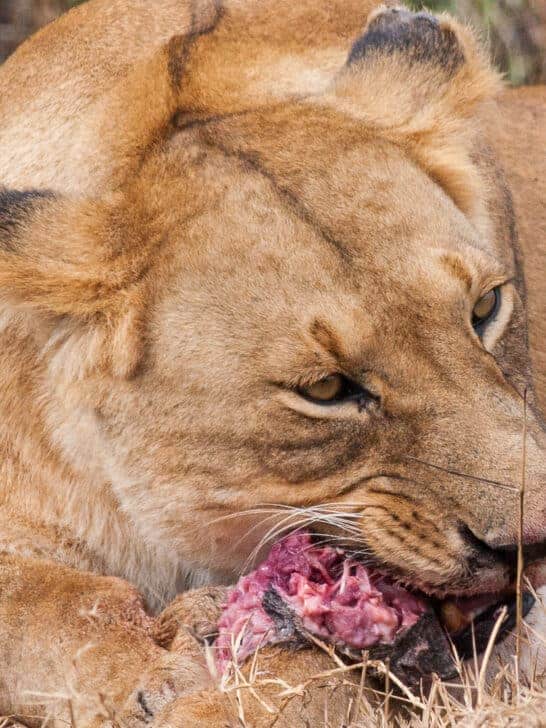
Are you looking for The Best Places to See the Big 5?
While every person coming to Africa on safari has their sights set on the Big 5 – African Elephant, Cape Buffalo, Lion, Black Rhino, and Leopard – Africa has much more than just those majestic five animals to see. Our newest article combines the best safaris where you can view the Big 5 in their wild, natural habitat (as well as all the other amazing animals that share the area with them).
You can also have a look at the Top 10 Safari Parks in Africa or All about Africa.
You can read the entire article or jump to any section:
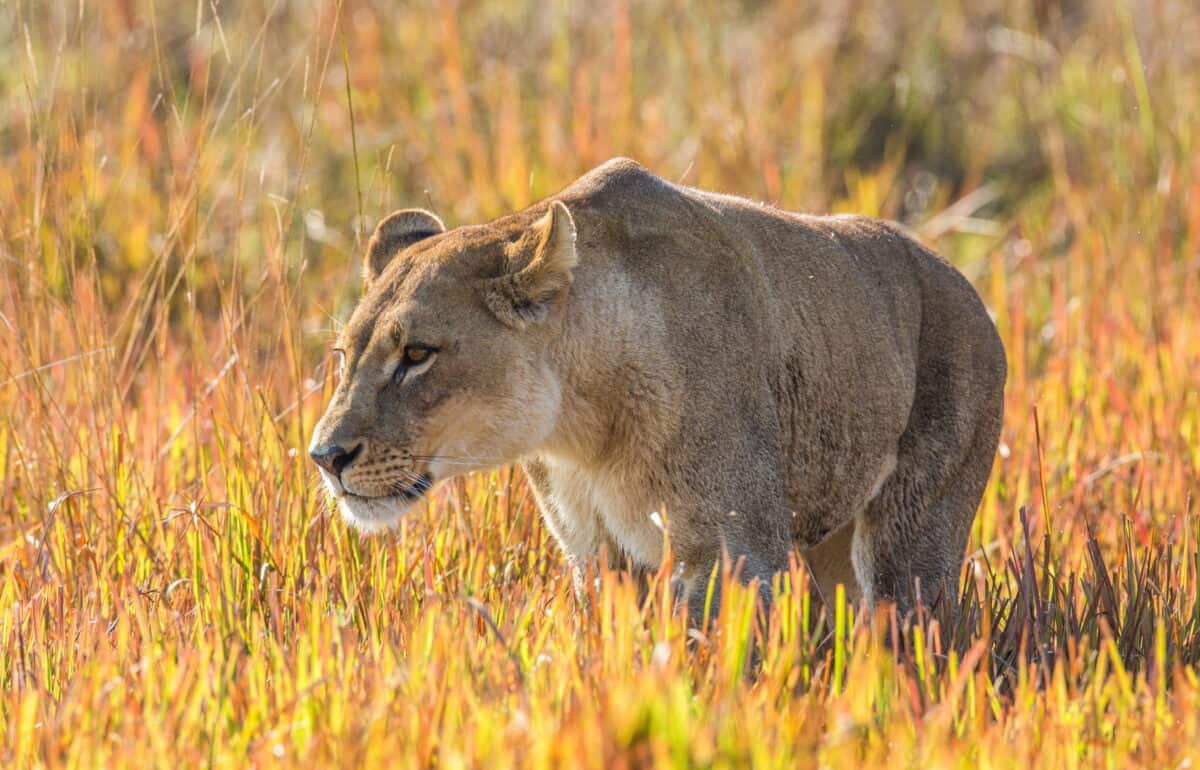
Image via Depositphotos
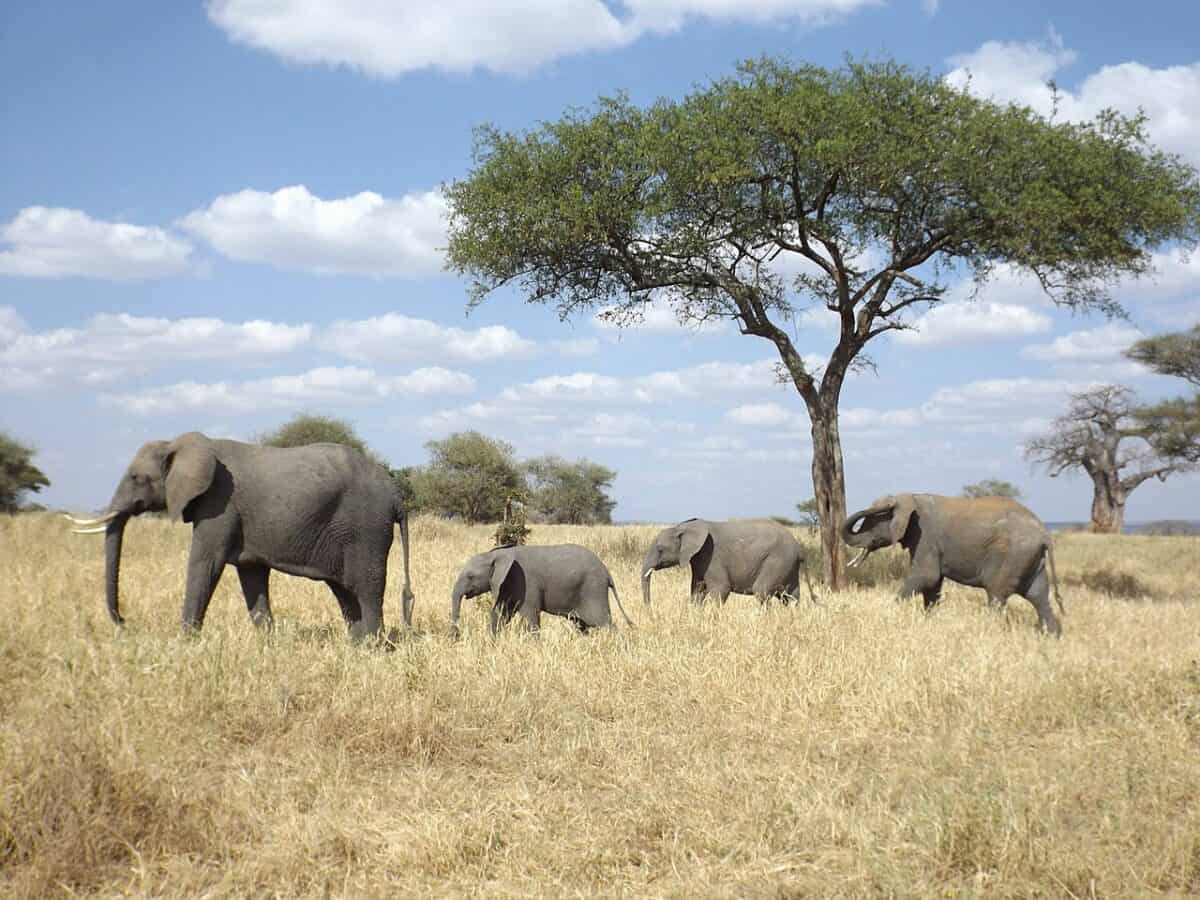
Image via Floodmfx, CC0, via Wikimedia Commons
The Big 5 are now protected in national parks and private game reserves, and today's tourists contribute directly to the conservation of these magnificent animals across encroachments like poaching, wildlife trafficking, and habitat destruction.
Fortunately, today the expression takes a much gentler approach – referring to seeing the majestic wildlife species on safari in Africa. These imposing giants are frequently sought-after for sightings, encounters, and photo opportunities.
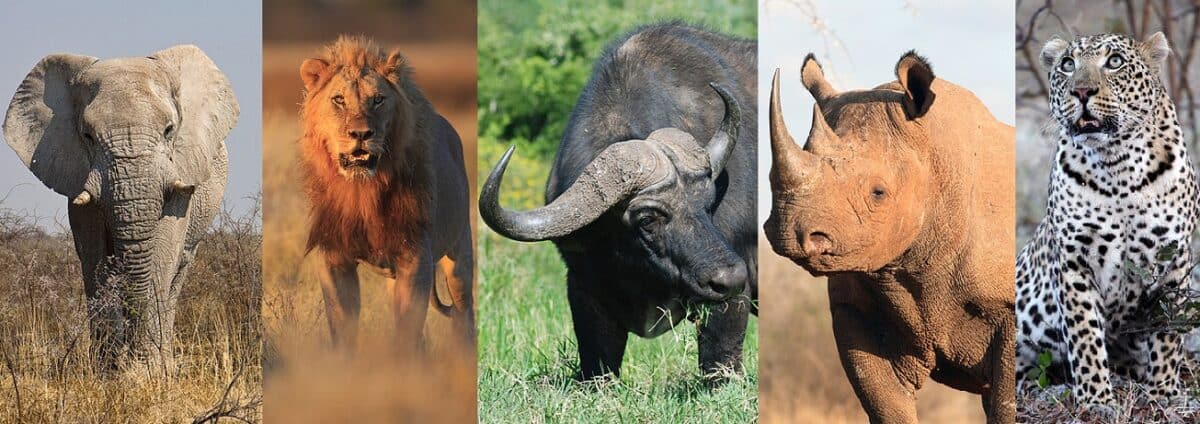
The "Different 5"
If you like cats have a look at our Big Cat Article.
These include the ‘Small 5', whose names mimic the Big 5 of Africa, but totally contrast in size, the ‘Shy 5', who are hard to spot due to their introverted nature; and the ‘Ugly 5' with faces only a mother could love.
Before we take a deep dive into The Big 5 and the best places to see them, you might find it interesting to know more about various alternative lists of 5's!
Image of the big five. Image via User:מנחם.אל, CC BY 4.0 https://creativecommons.org/licenses/by/4.0 , via Wikimedia Commons

- Elephant shrew
- Buffalo weaver
- Leopard tortoise
- Rhino beetle
The Small 5 animals are:

- Marabou stork
The Ugly 5 animals are:

- Bat-eared fox
The Shy 5 animals are:
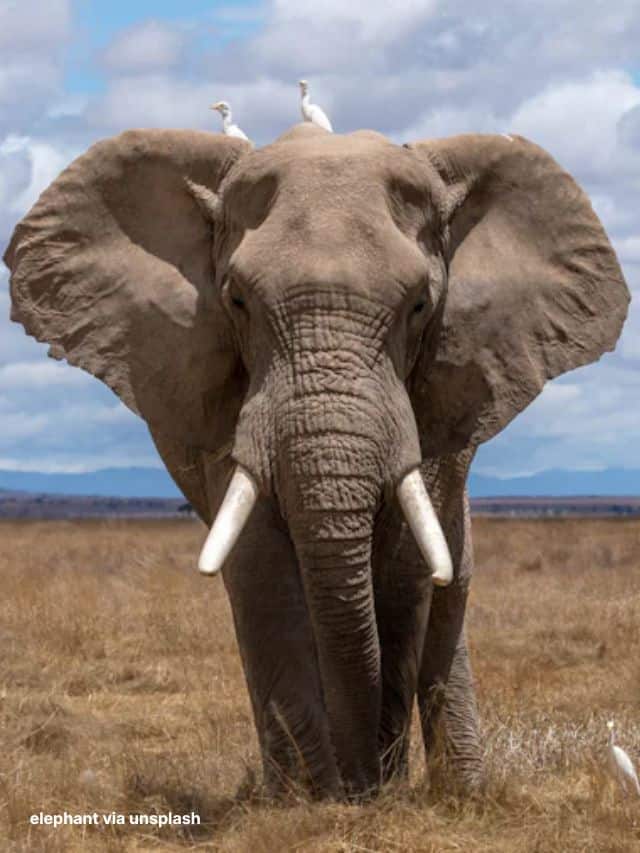
Lifespan: 60 to 70 years
Weight: 6,000 kg
Conservation status: Vulnerable
- Many trees in West African forests have evolved to rely on seeds passing through an elephant's digestive tract in order to germinate and grow.
- African elephants communicate across large distances at a low frequency which cannot be heard by humans.
- Elephants can get sunburned! They throw sand on their backs and heads to prevent sunburn and keep insects off their skin. And even though their skins are incredibly tough, they can feel tiny insect legs walking on their skin!
- Elephants love to swim and are able to swim for long distances. They use their trunks as makeshift snorkels. The trunk is also used for grabbing, bathing, smelling, drinking, and can pick up something as small as a grain of rice.

Lifespan: 20 years
Weight: 590 kg
Conservation status: Least concern
- Buffalo are formidable and unpredictable and are known as one of the most dangerous animals when cornered. They are said to have killed more hunters in Africa than any other animal , mostly as a result of being wounded during a hunt.
- Buffalo are estimated to kill over 200 people every year earning them the reputation and nickname of ‘Black Death' and ‘Widow Maker'.
- A buffalo's primary predator is the lion. When a buffalo has been caught or hurt by a lion, another buffalo will try to rescue them. Buffalo have often been observed killing a lion after it has killed a member of the group.
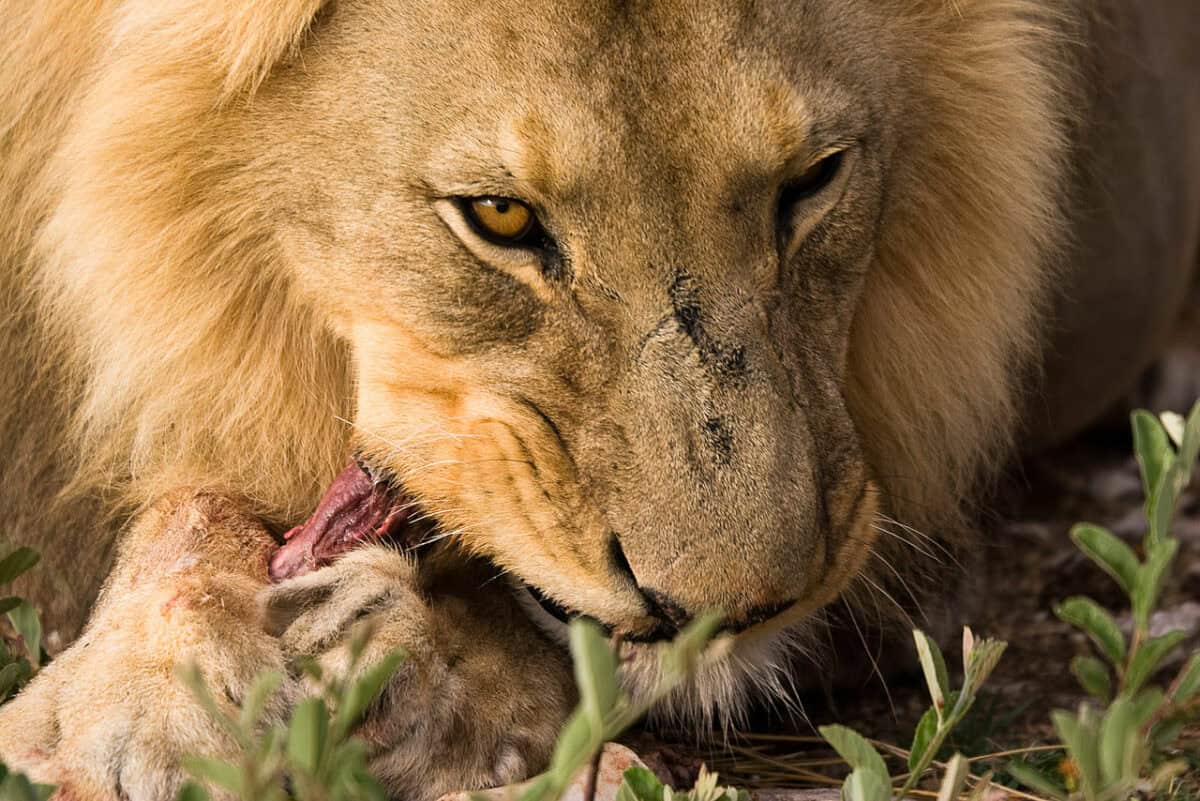
Lifespan: 15 to 30 years
Weight: 130 to 190 kg
- The lion is Africa's top predator and the second largest big cat in the world.
- A lion's roar can be heard up to 5 miles (8km) away, enabling them to communicate with each other over large distances.
- They spend most of their time sleeping and can sleep up to 20 hours a day!

Lifespan: 35 to 50 years
Weight: 800 to 1,400 kg
Conservation status: Critically endangered
- The rhino is the most endangered species of the Big 5 . The illegal trade of rhino poaching is considered a very lucrative enterprise for criminals. One that is being driven by high demand in Asia for horns. Recently poachers use increasingly sophisticated methods to plunder rhino horns . Very few rhinos now survive outside national parks and reserves.
- A rhino's horn is not attached to its skull. If it breaks off it will grow back again.
- Rhinos have poor vision and will sometimes attack trees and rocks by accident. However, their hearing and sense of smell are excellent, thus often making up for their poor eyesight.
- The closest living rhino "relatives" are tapirs, horses and zebras. They are part of a group of mammals called odd-toed ungulates.

Lifespan: 12 to 15 years
Weight: 17 to 65 kg
- The leopard is nocturnal, solitary and secretive, staying hidden during the day. They are the least seen of the Big Five.
- Leopards are excellent at climbing trees and will often safeguard their kill in a tree to prevent lions and hyenas from stealing it.
- They can drag prey weighing up to three times their own body weight up into trees over 20 feet (6 meters) tall.
- Leopards don't roar, they bark and snarl. When they are happy they even purr!
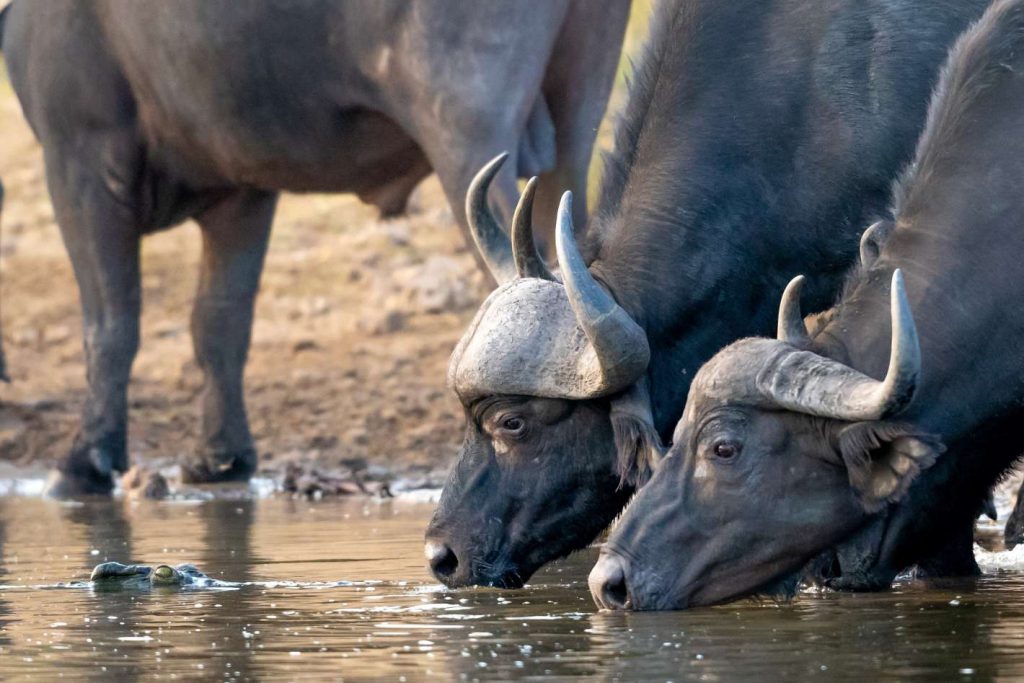
Image by vincent-van-zalinge via Unsplash
Go2Africa has compiled this extremely helpful infographic for you to consider the trade-offs of booking a Big 5 Safari in peak or low season.
- The lack of rain means the vegetation dries up and becomes more sparse, literally making it easier to see a rhino or buffalo compared to the long, dense grass and heavy foliage of summer. This particularly applies to leopards, which spend much of their time in trees – in winter, they will have fewer leaves, making these sleek felines easier to spot.
- The lack of rain also means that ponds, streams, puddles and smaller watercourses dry up, forcing animals to congregate around the remaining large lakes and rivers. Most animals must drink every day so they don't stray too far from the little water that is left. This is particularly true of herds of buffalo and elephant, which often migrate to life-giving rivers like the Chobe at the border of Namibia and Botswana.
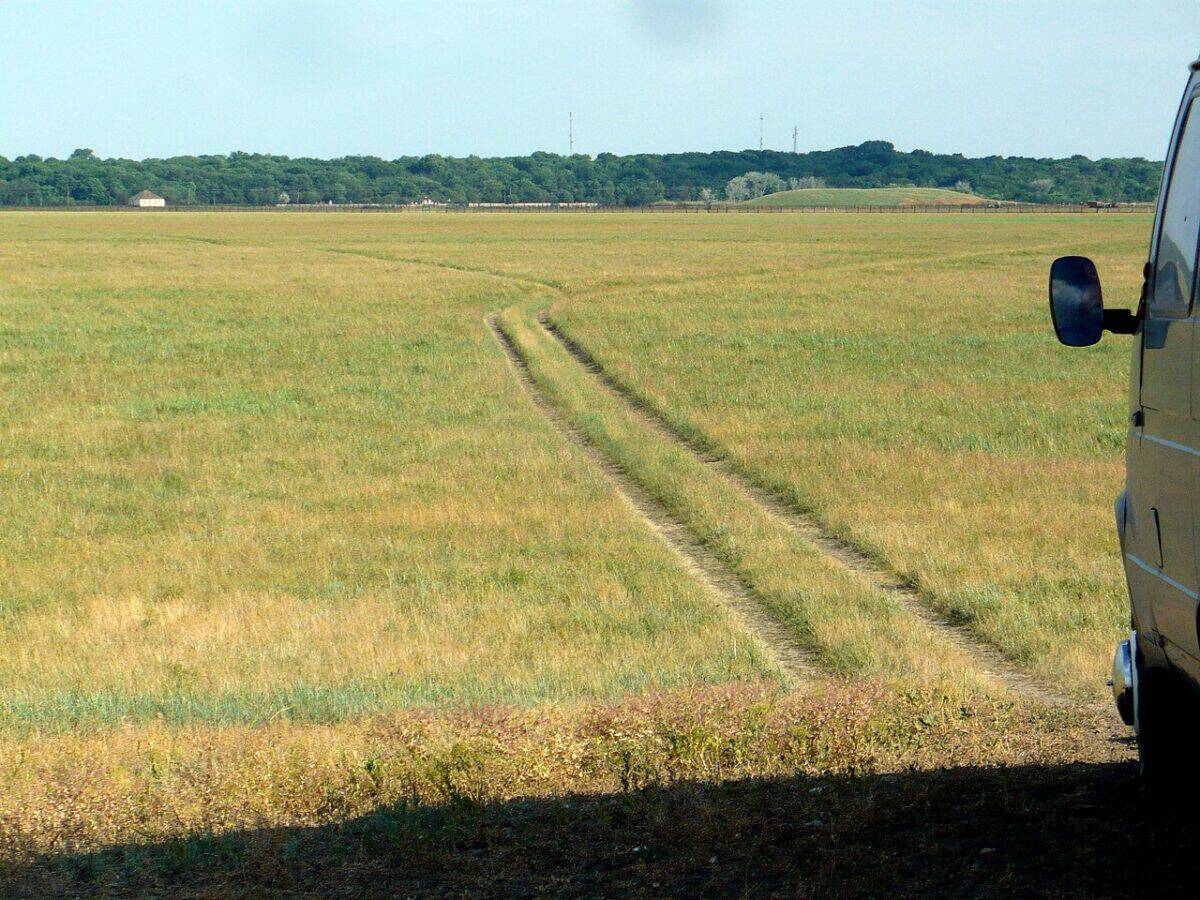
Planning a Safari trip during Corona
Animals Around the Globe recently covered the Best Places For Animal Encounters in Europe after Corona , but what about Africa – the place to be when looking for The Best Places to See the Big 5.
Going back end of safari trip. Image via Ivars Indāns, CC BY-SA 3.0 https://creativecommons.org/licenses/by-sa/3.0 , via Wikimedia Commons
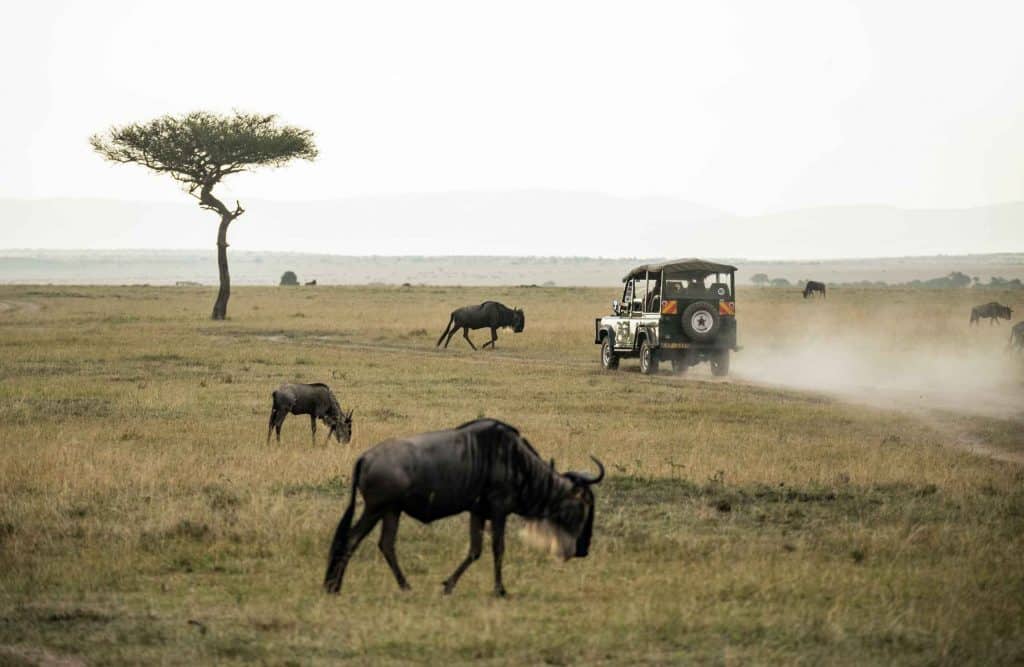
Image by david-clode via Unsplash
May COVID-19 never stop us from dreaming, from travelling, from experiencing and appreciating the beauty of nature. We look forward to seeing borders open up again, travel restrictions lifted, and life return to normal as soon as the pandemic is brought under control.
This novel coronavirus has had a devastating impact on the world and the travel industry. But we live in hope. Life and travel is never without risk, and the threat of COVID-19 is a new but manageable risk factor that we need to mitigate as best we can, but also learn to live with.

Image via Pixabay
There are those who will have concerns and that is understandable, but don't spoil the trip of a lifetime without good reason if you have other options! Rather postpone a trip instead of cancelling it.
The Coronavirus pandemic will undoubtedly be tragic for many people and industries around the world. In Africa, distressingly poor local communities surrounding Africa's wildernesses and the wildlife in those areas are heavily dependent on tourism for survival and without it the impact could be disastrous.
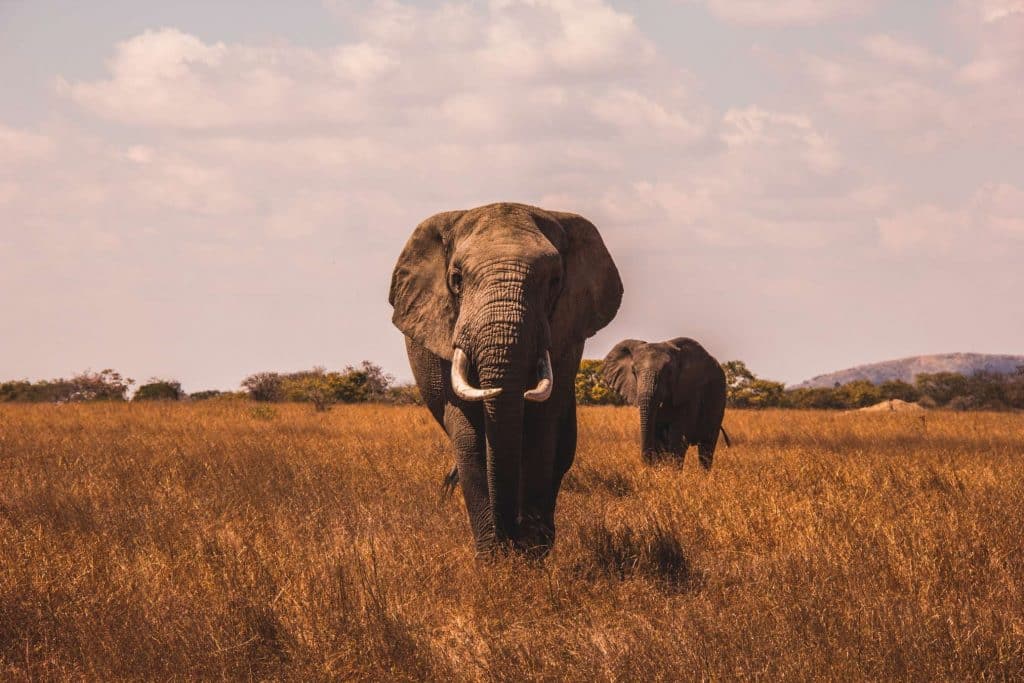
Image by aj-robbie. via Unsplash
· Sabi Sands Private Game Reserve
· Kruger National Park
The Sabi Sands Private Game Reserve shares an unfenced border with the Kruger and is also an exceptional reserve. Leopards are relatively common to spot and you should be lucky enough to view all of the Big 5 within a few days.
If this isn't the perfect place to see the Big 5, then I don't know what is!
Kruger National Park is South Africa’s flagship game park and one of the most famous nature reserves in the world. Not only is the Kruger Park home to over 147 species of mammals, including over 2000 lions, it also hosts an elephant population of over 13000, an estimated 37000 buffalo, 1000 leopard, 2000 white rhino and 300 black rhino.
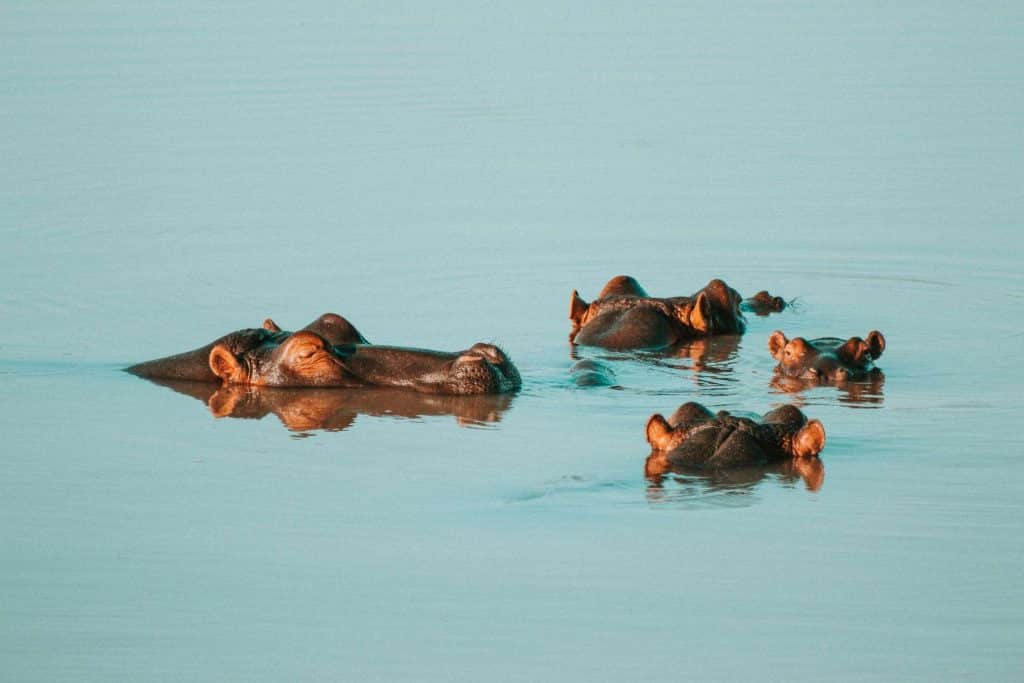
Image by wade-lamber via Unsplash
· Masai Mara
Really, the Big Five are just a drop in the wildlife ocean of what you can expect to spot in the Mara. The seasonal Great Wildebeest Migration sweeps through each year , bringing more than two million wildebeest, topi, gazelle and zebra to the plains. Another great place for The Best Places to See the Big 5.
This wildlife-rich area is also in no short supply of big cats – boasting leopard, cheetah and more lions than you'll know how to handle! With all these oversized felines, it's no surprise that BBC chose to film its Big Cat Diary series here.
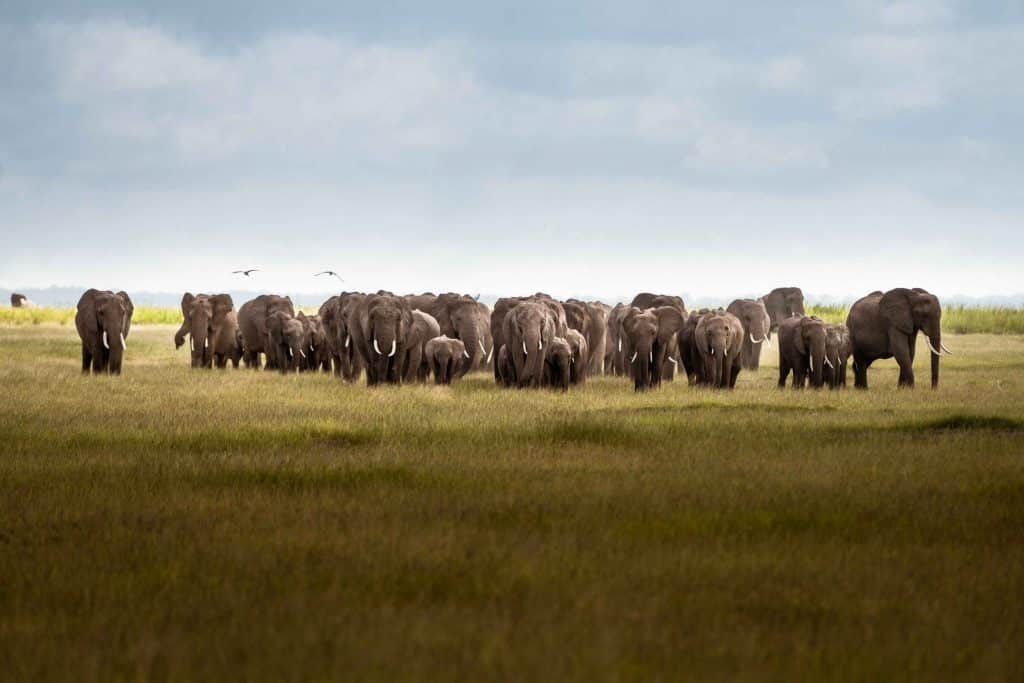
Image by James-eades via Unsplash
· Ngorongoro Crater
· Serengeti
Ngorongoro Crater is packed with about 30 000 animals that can't descend the steep walls and thrive in the varied ecosystem contained in the crater. Within its confines you are likely to see lions, elephants, buffaloes, and flamingos; and there's a chance of seeing black rhinos. Local Maasai people have grazing rights and you may come across them tending their cattle in the midst of wildlife.
The Ngorongoro Conservation Area (NCA) in Tanzania includes the Ngorongoro Crater which covers around 8,300 square kilometres. It is the only place on earth where humanity and wild animals coexist in harmony. This uniqueness earned it a UNESCO World Heritage Site designation in 1979. Another great place from The Best Places to See the Big 5.
Serengeti is the reserve you have always dreamed of – an untouched landscape of swaying grasslands sprinkled with acacia trees. Where great herds and remarkable predator sightings are commonplace. The migration takes place from November to July. This will be the best time to spot a lion in the hunt. And the lack of trees means that leopards are easier to see than you might think.
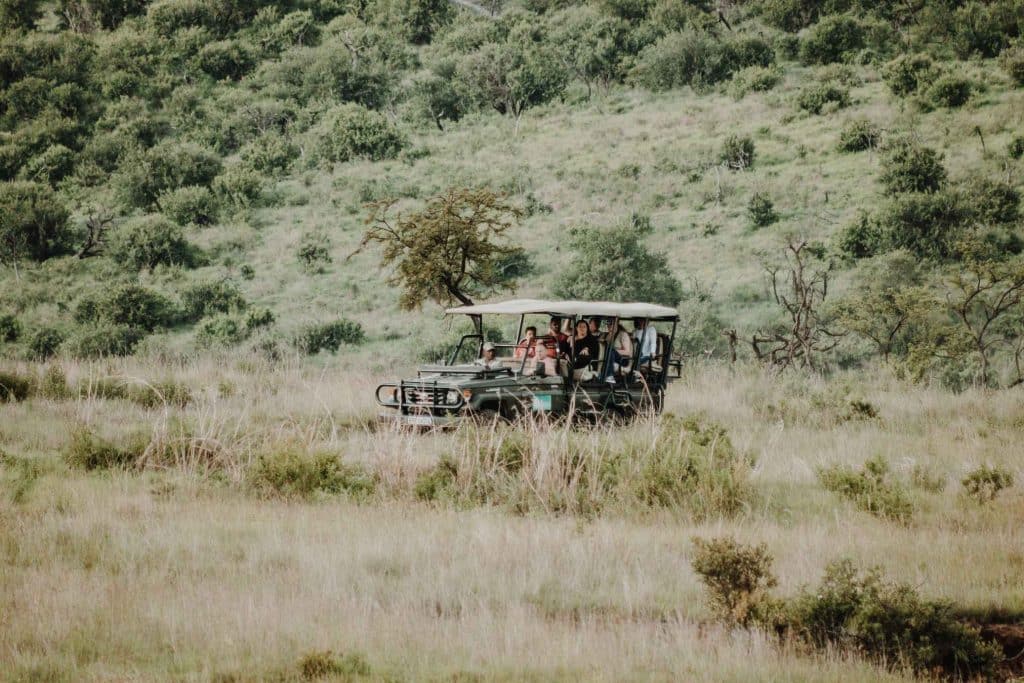
Image by wade-lambert via Unsplash
· Hwange National Park
Hwange National Park is the country’s biggest reserve. The reserve is home to about 30 000 elephants, as well as other less-seen animals (like bat-eared foxes, wild dog and endangered black rhino). It is also renowned for superb Big 5 encounters.
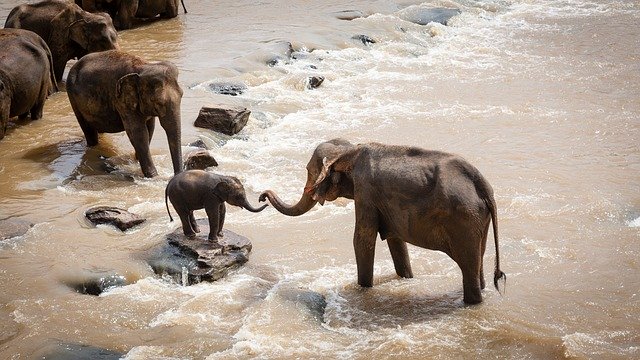
· Moremi Game Reserve
The Big 5 can all be seen in the Moremi Game Reserve . Spotting these impressive animals in their own habitat is something you will never forget.
However you choose to travel in the Delta, you're guaranteed to spot some spectacular wildlife. You might struggle to tick rhino from your Big Five list, because of their low numbers, but don’t worry! The country boasts Africa’s largest elephant herds, massive numbers of buffalo and lion and healthy populations of leopard.
More for You
Donald Trump Gets Bad Legal News From D.C. While in New York Court
Where is Jennifer Pan from ‘What Jennifer Did’ now?
25 Beloved Movies We’ll Never Let Our Kids Watch
5 Things You Need To Stop Doing If Your Car Has An Automatic Transmission
Windows fell out of King’s plane mid-flight after filming lights melted frames
Your senses will shut down in a specific order when you’re about to die
17 'Titanic' Characters With Their Real-Life Counterparts
Samsung Makes 6 Day Workweeks Mandatory for Executives as the Company Enters 'Emergency Mode'
Our first look at Netflix's upcoming adaptation of one of the greatest novels of all time
8 Places You Should Never Charge Your Phone
Top 20 Saturday Night Live Sketches That Broke the Whole Cast
It took 7 doctors to diagnose me with a common disease that almost killed me
29 Ridiculous Lies That Hollywood Has Managed to Mainstream
Patrick Mahomes explains why he may not play in the NFL for as long as Tom Brady
Colossal prehistoric snake discovered in India
No, frequent hair trims won't make your hair grow faster. But here's what does.
36-year-old joins wave of House Republican retirements
20 of the Healthiest Dog Breeds with the Fewest Medical Problems
Movie Miscasts: 15 Times the Wrong Actor Was Chosen for a Role
One of the best British spy dramas of all time is finally streaming on Netflix

COMMENTS
Once mostly targeted by hunters, these large species are "awe-inspiring" sights for safari-goers. If you've gone on an African safari, chances are you've heard of the Big Five, the must ...
Weighing in at not too far short of a ton, the African buffalo (Syncerus caffer) has a reputation for being bad-tempered and dangerous.Whilst a solitary African buffalo is one of the most unpredictable safari animals (and dangerous, hence their inclusion in the term big five animals), they are usually a docile beast when in a herd… aside from their tendency to stampede en masse when alarmed.
In the game reserves and national parks of Southern Africa, the Big Five represents safari royalty: the African lion, the African leopard, the African elephant, the Cape buffalo, and the rhino (either white or black).
The big five. In Africa, the Big five game animals are the lion, leopard, rhinoceros, elephant, and African buffalo. The term was coined by big-game hunters to refer to the five most difficult animals in Africa to hunt on foot, but is now more widely used by game viewing tourists and safari tour operators. They are examples of charismatic megafauna, featuring prominently in popular culture ...
The Big Five animals of Africa, in short, 'The Big 5' include the African elephant, rhinoceros, lion, leopard, and Cape buffalo. These five big game animal species are found on the African continent in the Southern and Eastern parts of Africa. As the name suggests, they are not the heaviest or the 5 biggest safari animals.
1,718 Masai Mara Safaris. 4. Kruger National Park - South Africa. Whether you're on a guided tour or self-driving, Kruger National Park is a great choice for a Big Five safari. The park is the size of a small country, and the wide variety of habitats it protects is reflected by the varied wildlife.
A Big Five Safari is a once-in-a-lifetime chance to see some of Africa's most famous animals and get close to some of the continent's most vibrant ecosystems. Every safari option comes with an expert guide who knows the area and wildlife inside and out.
The Big Five are the elephant, lion, leopard, buffalo, and rhino, and I've written about them in more detail here. African Bush Camps. Whilst most people coming to Africa on safari have the Big Five on their radar, the continent has much more than just those majestic five animals to see.
A Big Five safari in the Kruger can also be combined either with Cape Town and the winelands or with the world-class beaches of either Mozambique or the Seychelles. Cape Town, Winelands and Kruger - 16 days from £4,435pp including international flights. Luxury Kruger and Mozambique Honeymoon - 11 days from £8,345pp including international ...
Go on a Big 5 safari. Seeing lions, leopards, elephants, Cape buffalos & black or white rhinos is always a special experience, and many destinations offer the opportunity to tick the Big 5 off your list with ease.However, experienced safari travellers also tend to focus on other species such as cheetahs, wild dogs and pangolins and on experienced-based safaris such as animal migrations, bird ...
South Africa: Kruger National Park & Private Reserves, Eastern Cape & Madikwe. Long a stronghold of the Big 5, South Africa offers perhaps Africa's most reliable Big 5 sightings in the private reserves that border the Kruger National Park, itself a famous Big 5 hotspot. The Sabi Sands Private Game Reserve is exceptional: leopards are ...
Lion. African elephant. Cape Buffalo. Black rhino. Leopard. The term 'Big 5' was first introduced in the late 1800s by big-game hunters to refer to the creatures that were the hardest to hunt on foot, but over time this has evolved to describe the big game that many photographers and tourists aim to see on their safari trips.
The 10 Best Places for Taking a Big Five Safari in Africa. Masai Mara National Reserve, Kenya. The reserve is located in southwestern Kenya and covers an area of approximately 1,510 square kilometers. It's named after the Maasai people who have lived in the region for centuries. The Masai Mara Reserve is known for its stunning landscapes ...
Big Five safaris. Lion, leopard, elephant, rhino and Cape buffalo — the Big Five are among the most sought-after animals to encounter on an African safari. While some are widespread, others, such as rhino, are dwindling in number and often require local know-how to find (along with a pinch of good luck). There are only a few areas in Africa ...
10 Best Big Five Safaris in Africa 2024/2025 - Best Deals - TourRadar. Imagine gazing into the eyes of a lion, learning facts you never knew or capturing pictures of exotic animals, Big Five safari tours allow you to do just that.
The lion is arguably the most sought-after of the Big Five because it is synonymous with an African safari. Charismatic, powerful and beautiful, everybody wants to see the appropriately named 'King of the Beasts'. Once, hundreds of thousands of lions roamed the world, but today conservationists give approximate numbers of between 25 000 and 30 ...
Africa is home to numerous game reserves and national parks that offer exceptional Big 5 sightings. Some of the best Big 5 safari destinations include South Africa's , Tanzania's , Botswana's , and Kenya's . Each destination offers a unique safari experience and houses a diverse range of ecosystems as well as wildlife beyond the Big 5.
The Big Five comprises of the lion, buffalo, elephant, rhino and the leopard. They are considered the big five due to their dominance and assertiveness in the wilderness in comparison to other animals. Tourist from all over the world travel to Africa to watch and experience nature at its best. Some of the most breath taking moments include the ...
The term "Big Five" was originally coined to refer to the animals on African Safaris that were the hardest and most dangerous to sport hunt. These Big Five animals were African elephants, Cape Buffalo, Leopard, Lion and Rhino. They're still considered the African Big 5 today, although thankfully these days it's more in terms of being ...
The Big 5 safari animals. Originally, the Big 5 referred to the five animals that were the hardest and most dangerous to hunt in Africa on foot - lion, leopard, buffalo, elephant and rhino. The Big Five animals were thus the most sought-after prizes for big game hunters. Today, these Big 5 animals are the creatures people most want to see on ...
Many people don't know about that history. They just hear the words safari and big five. Today, people idolize the term as much as ever, just for different reasons.Put simply, the big five sell safaris. The term is extensively used in safari promotions and marketing.Expressions such as "Big 5 country" or "Home to the Big 5" have become common practices to attract tourists.
The term 'Big Five' was originally coined to refer to the five most dangerous species to hunt on foot: rhinoceros, elephant, buffalo, lion and leopard. ... and East Africa is one of the few places in the world where safari-goers have a good chance of doing so. Good areas to see the Big 5 are Ngorongoro, the Serengeti and the Masai Mara. ...
Big Five Safari in Tanzania. Embark on an unforgettable journey and witness the biggest stars of the East African savanna; the mighty Lion, the majestic Elephant, the rare Black Rhino, the graceful Leopard, and the stoic Cape Buffalo. This classic safari adventure that spans for 7 days, takes you through Tanzania's most celebrated parks in ...
Hwange National Park is the country's biggest reserve. The reserve is home to about 30 000 elephants, as well as other less-seen animals (like bat-eared foxes, wild dog and endangered black ...